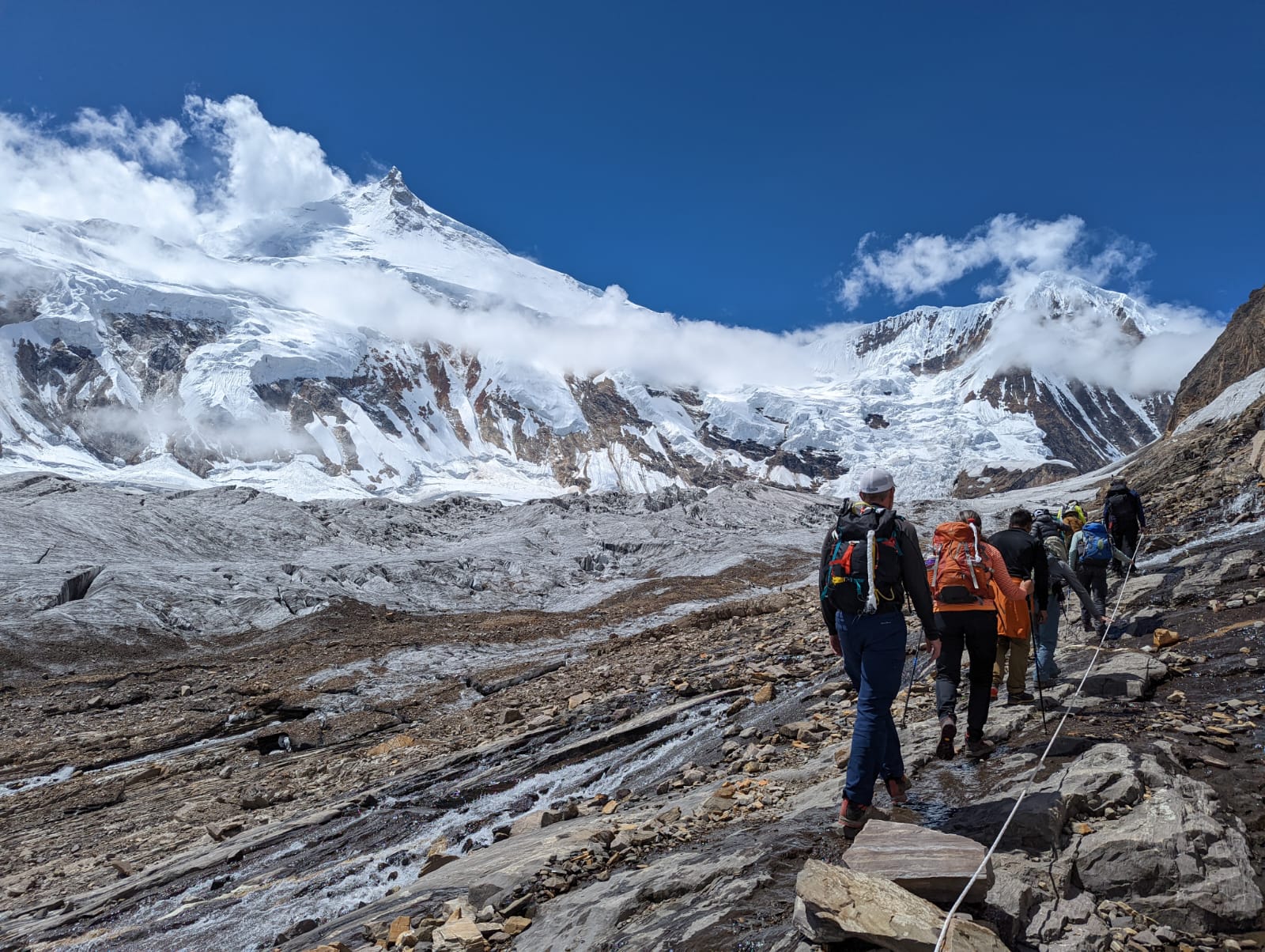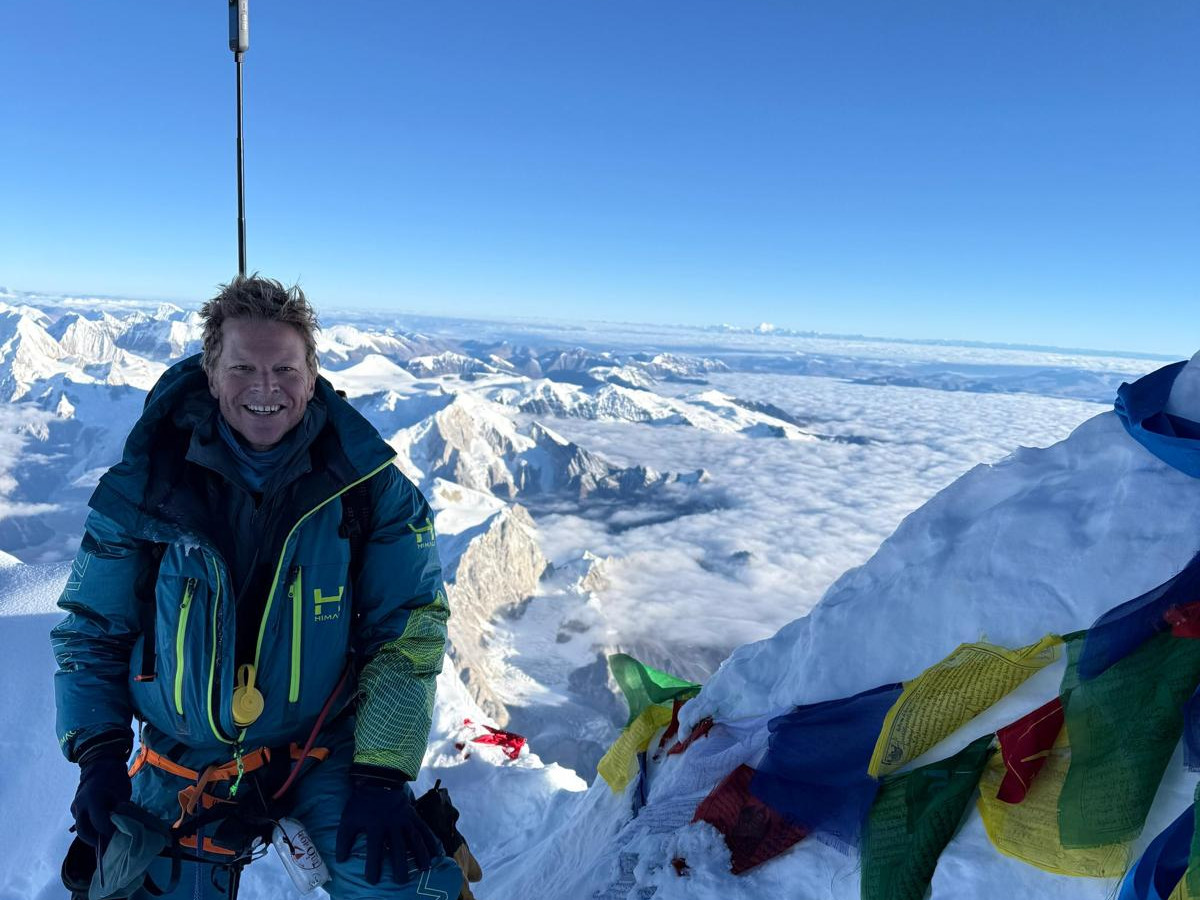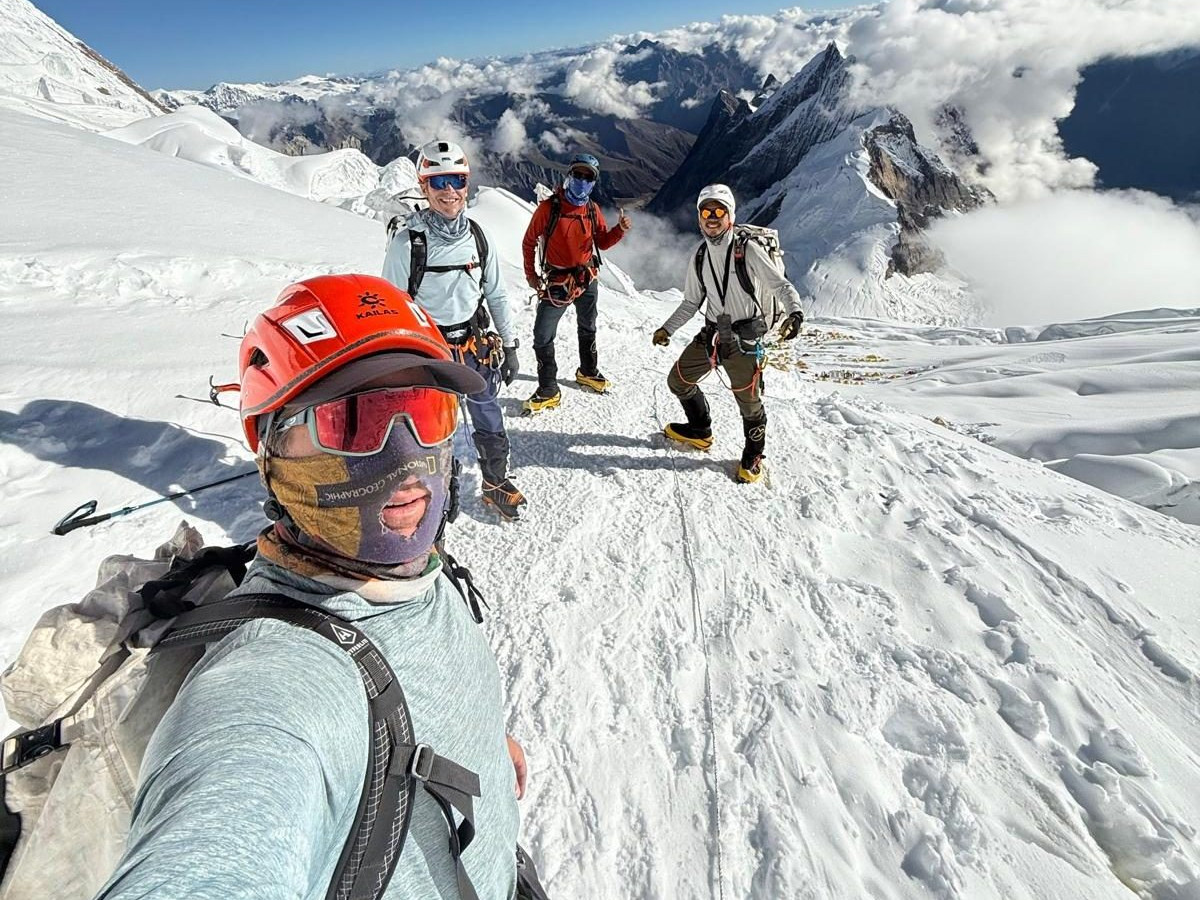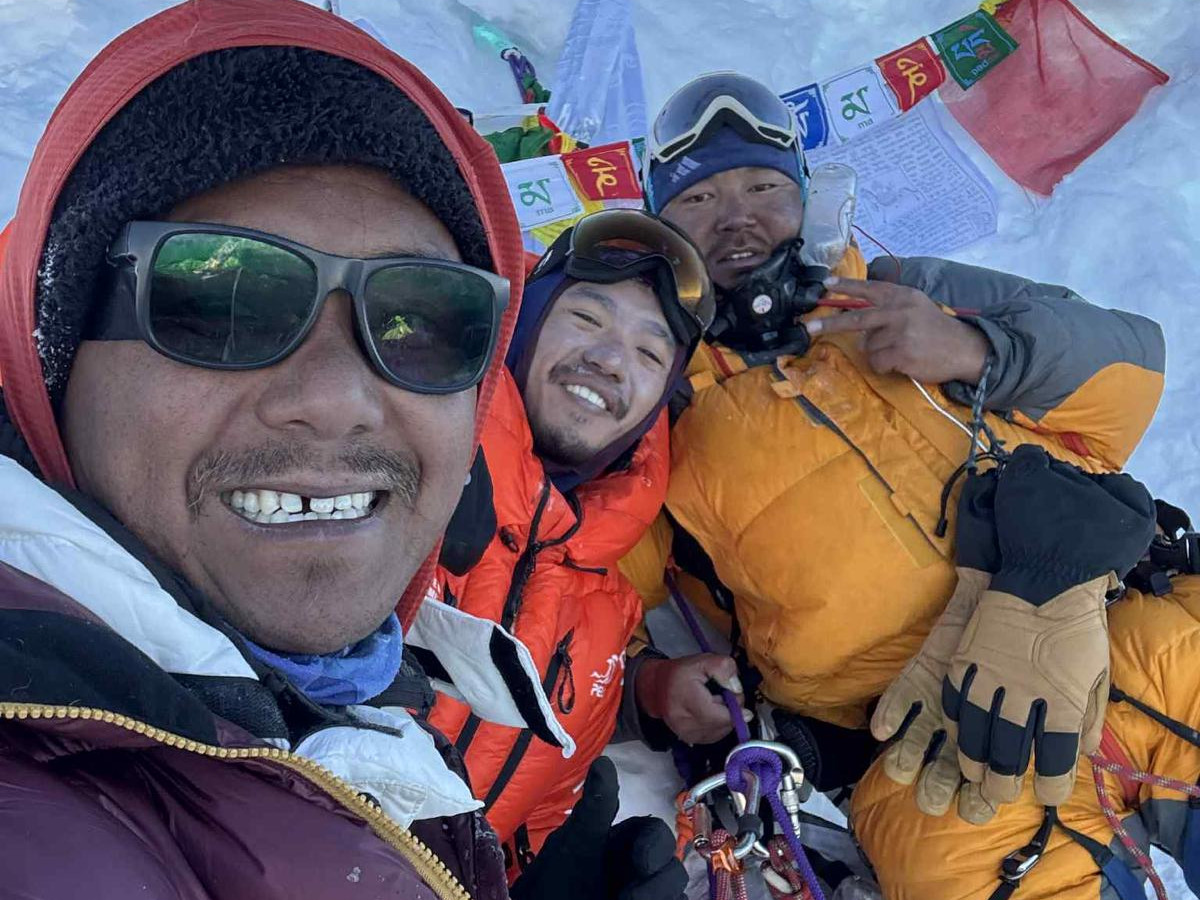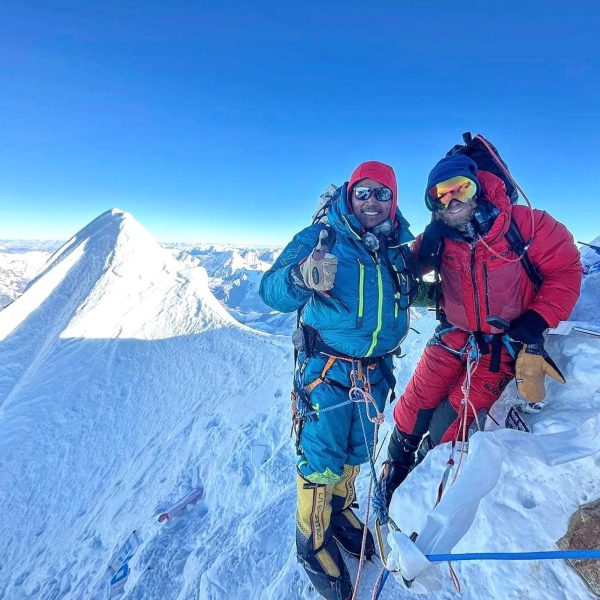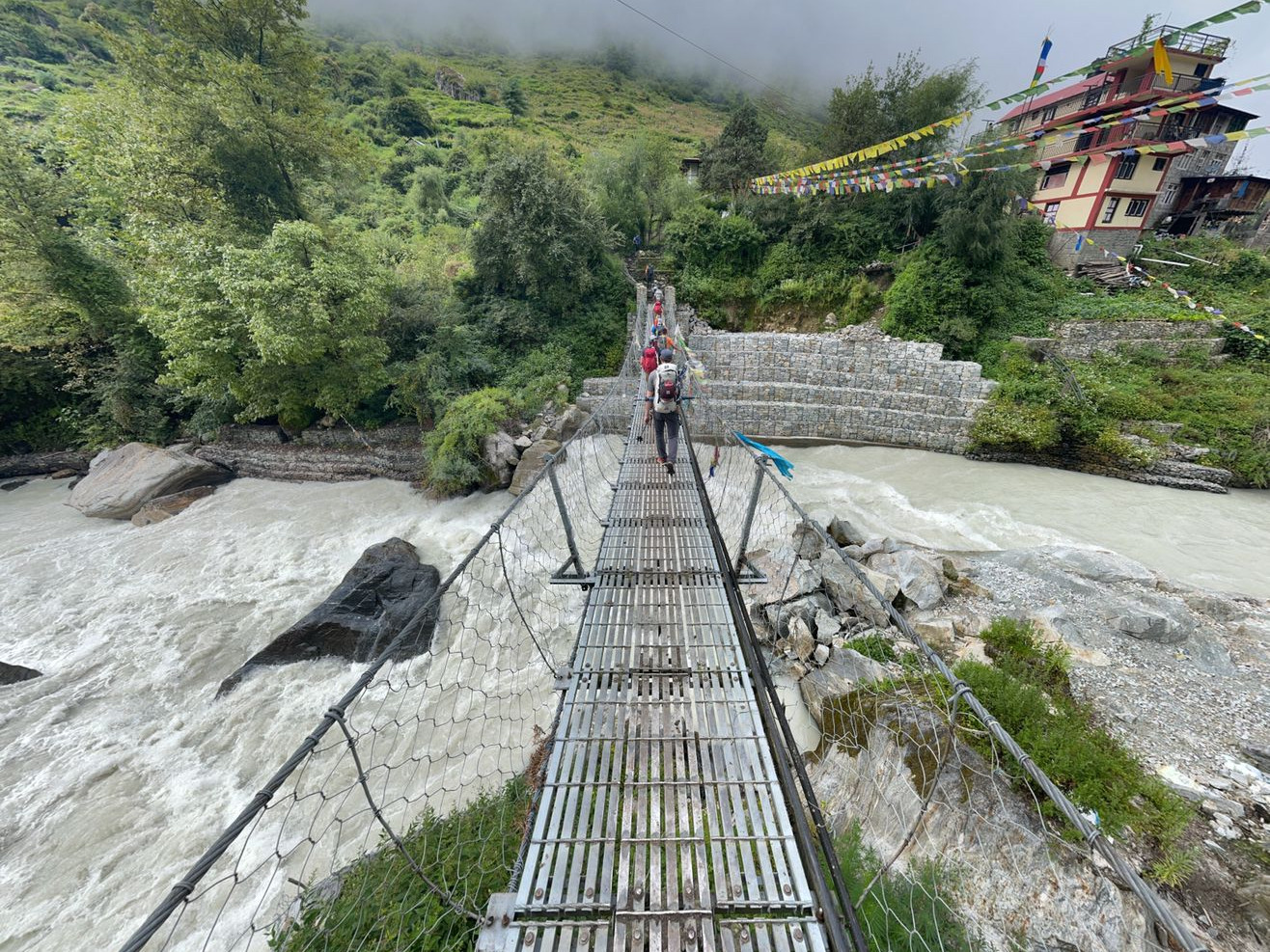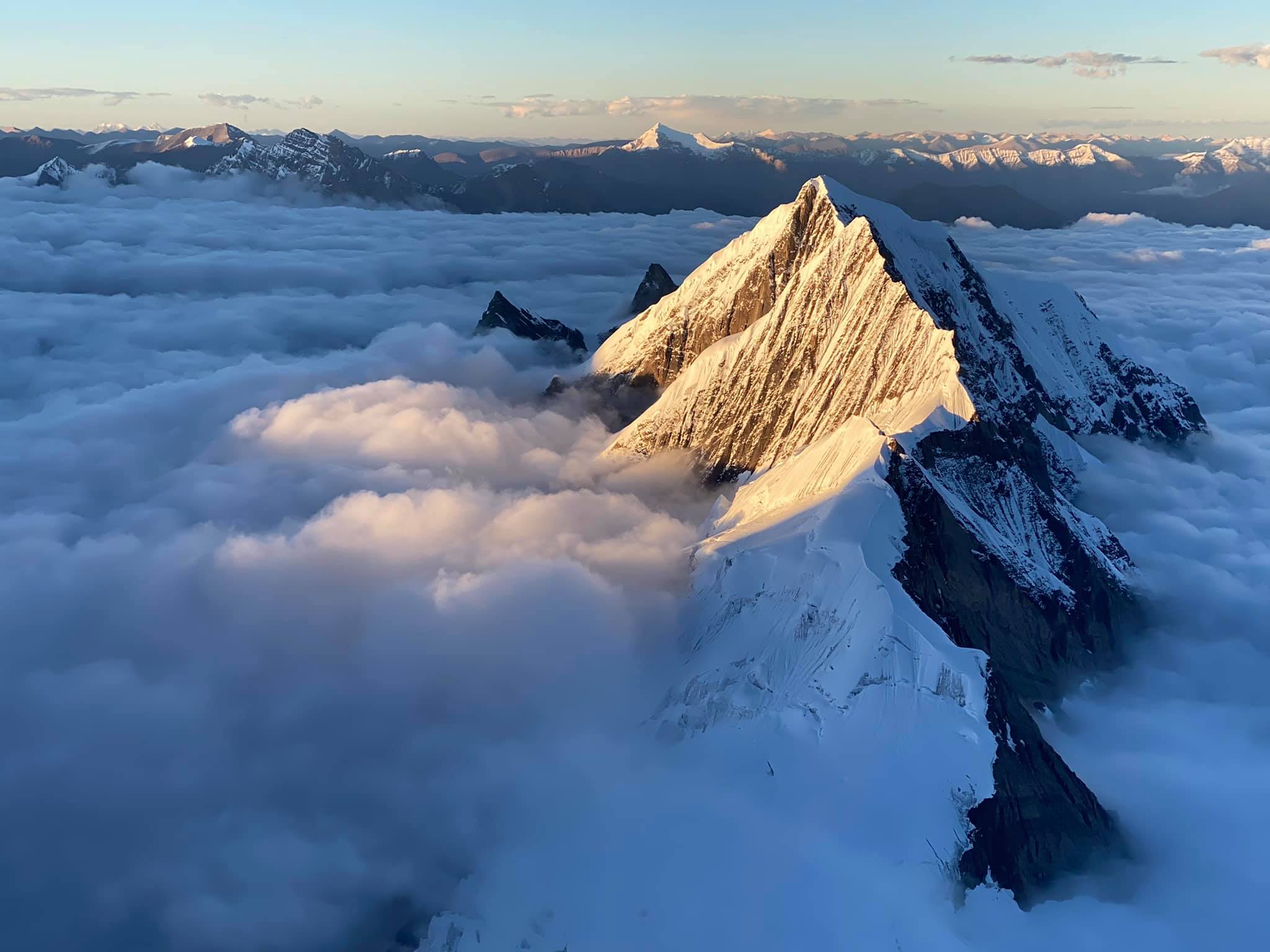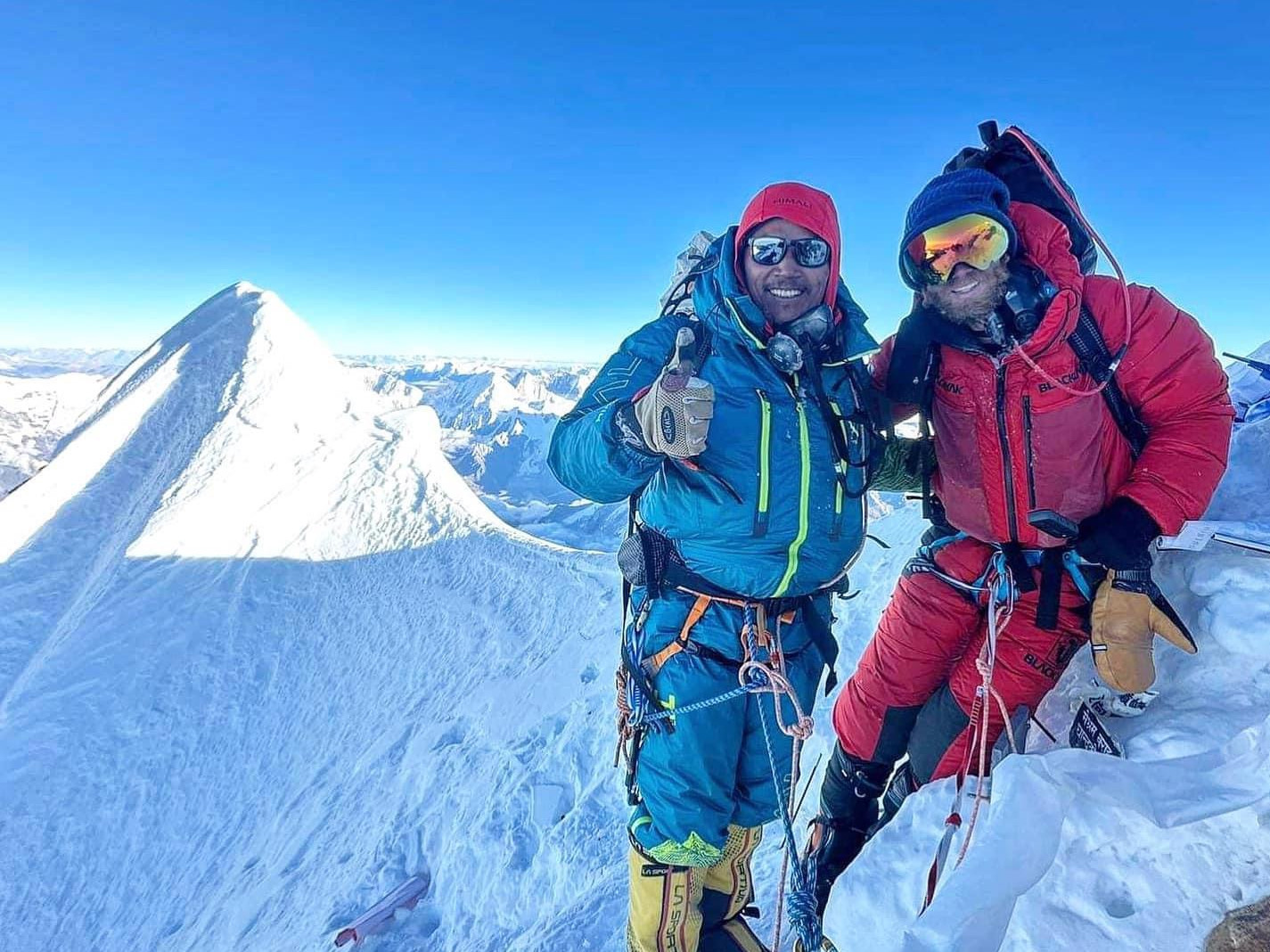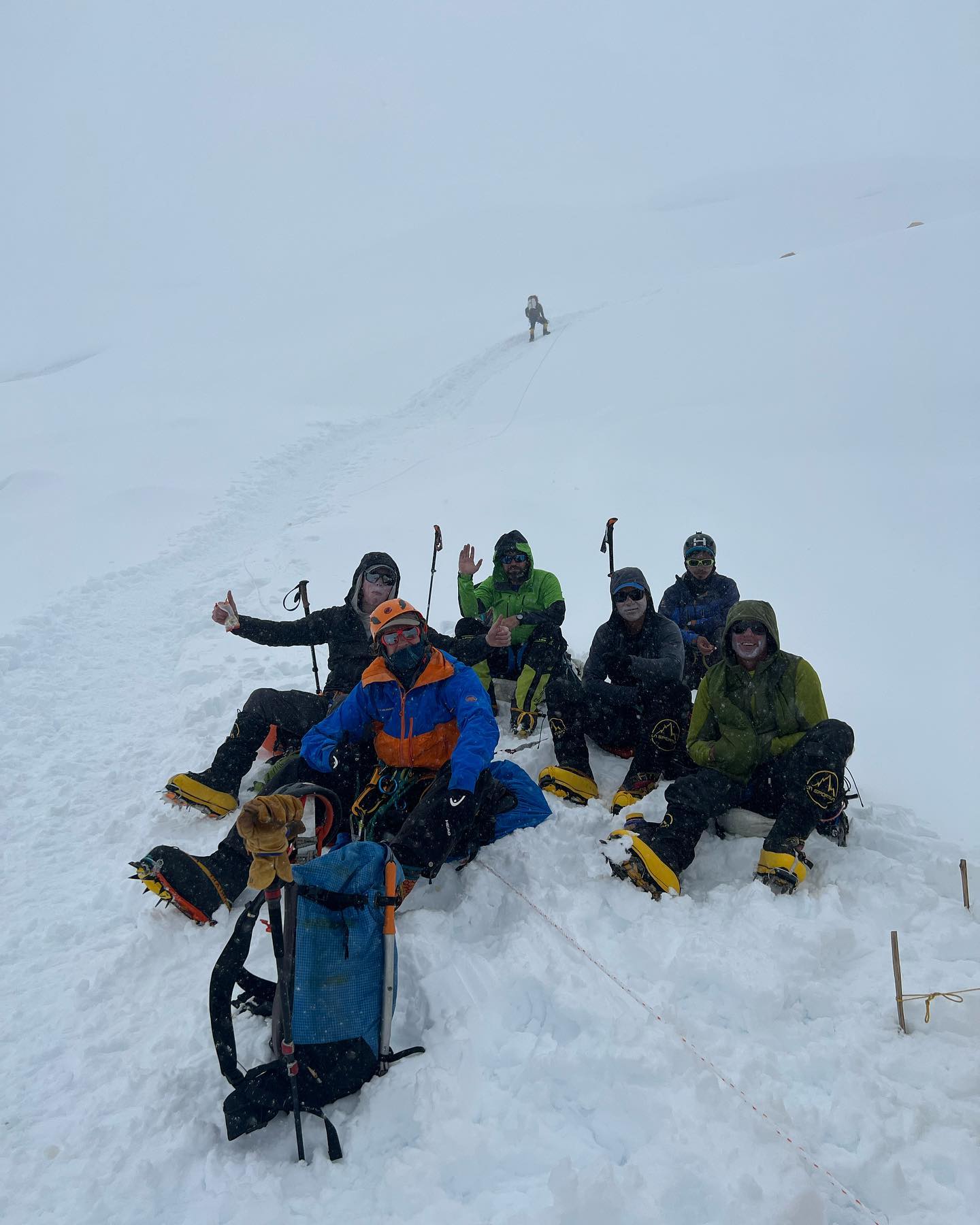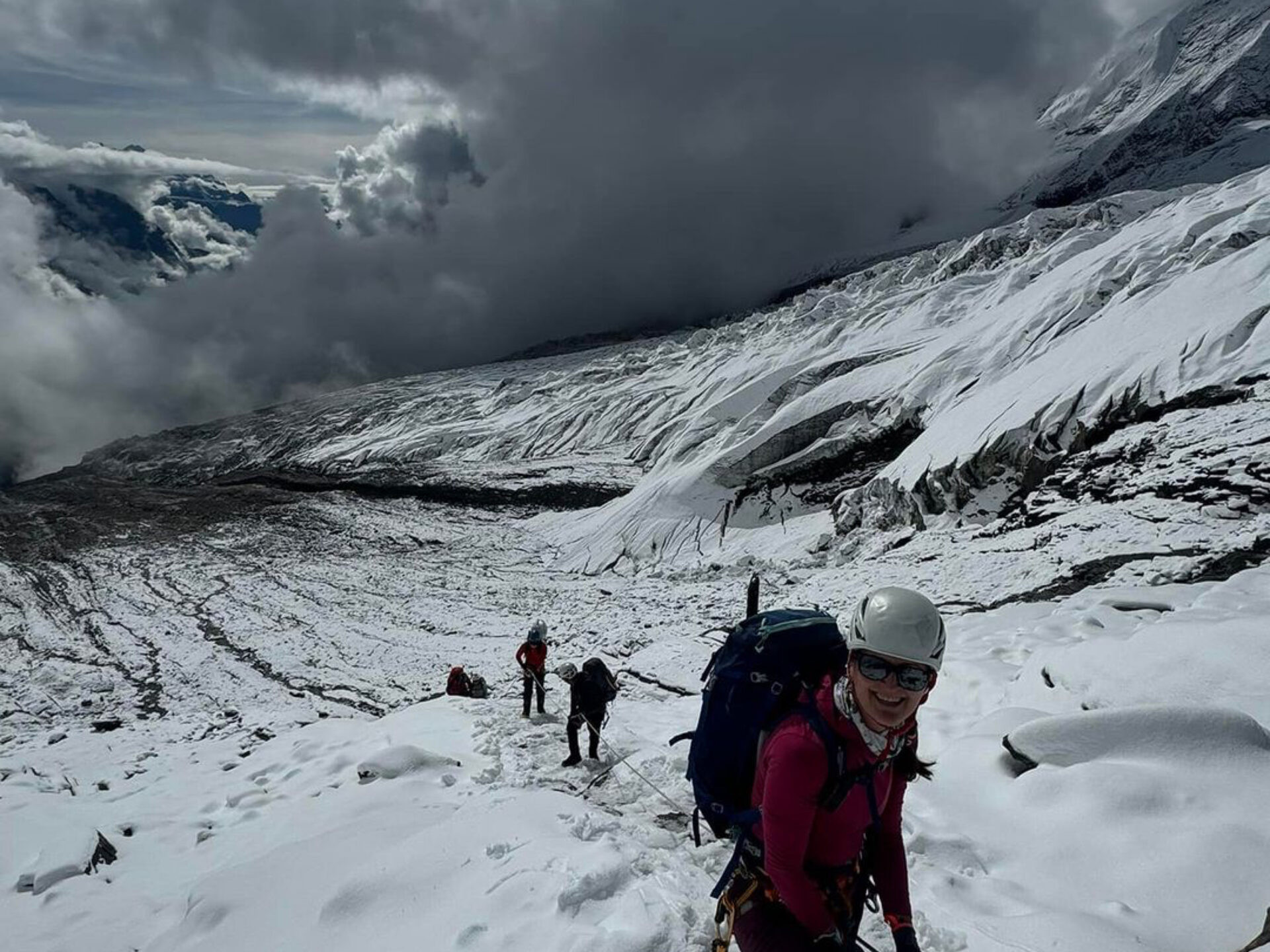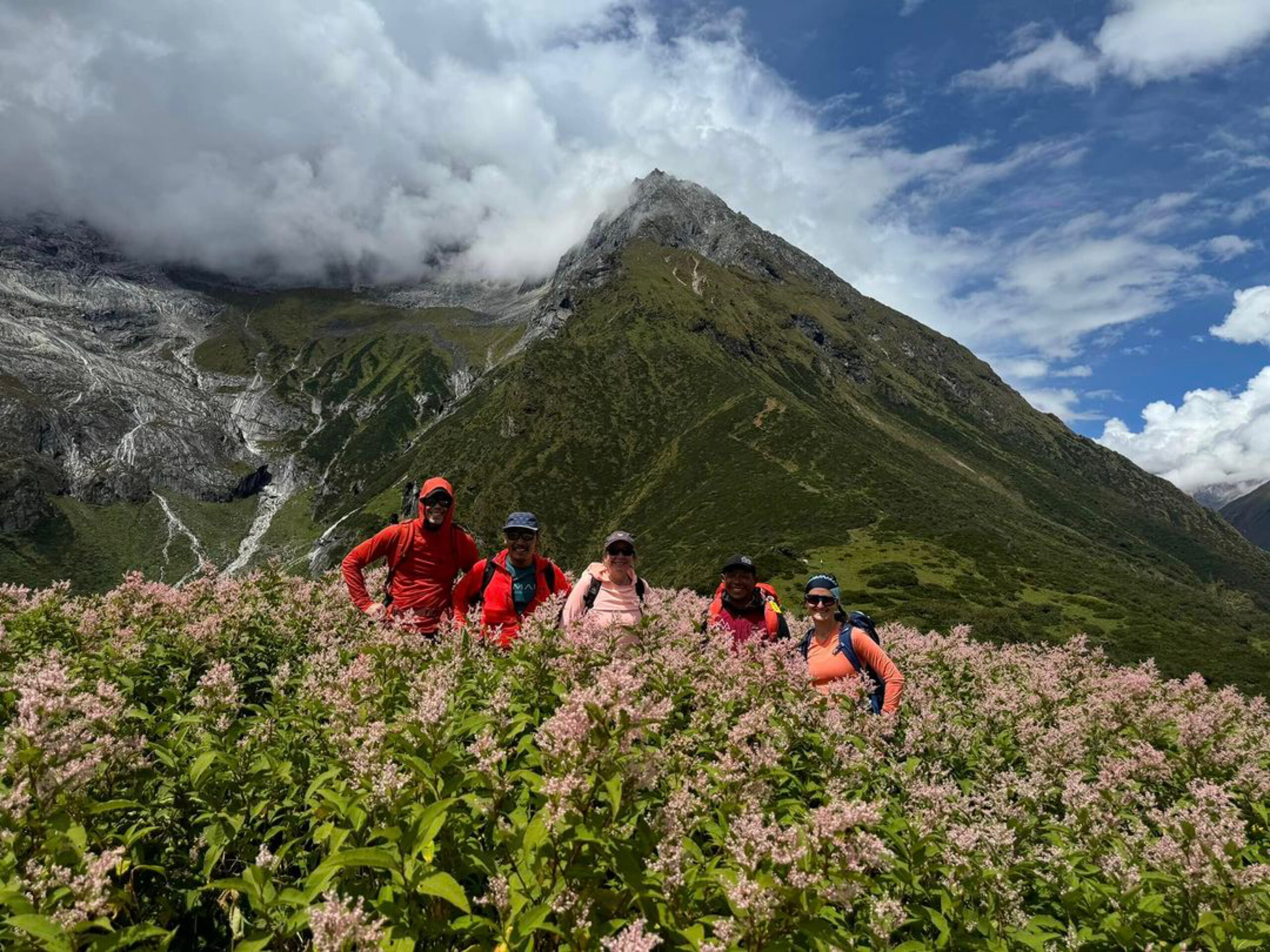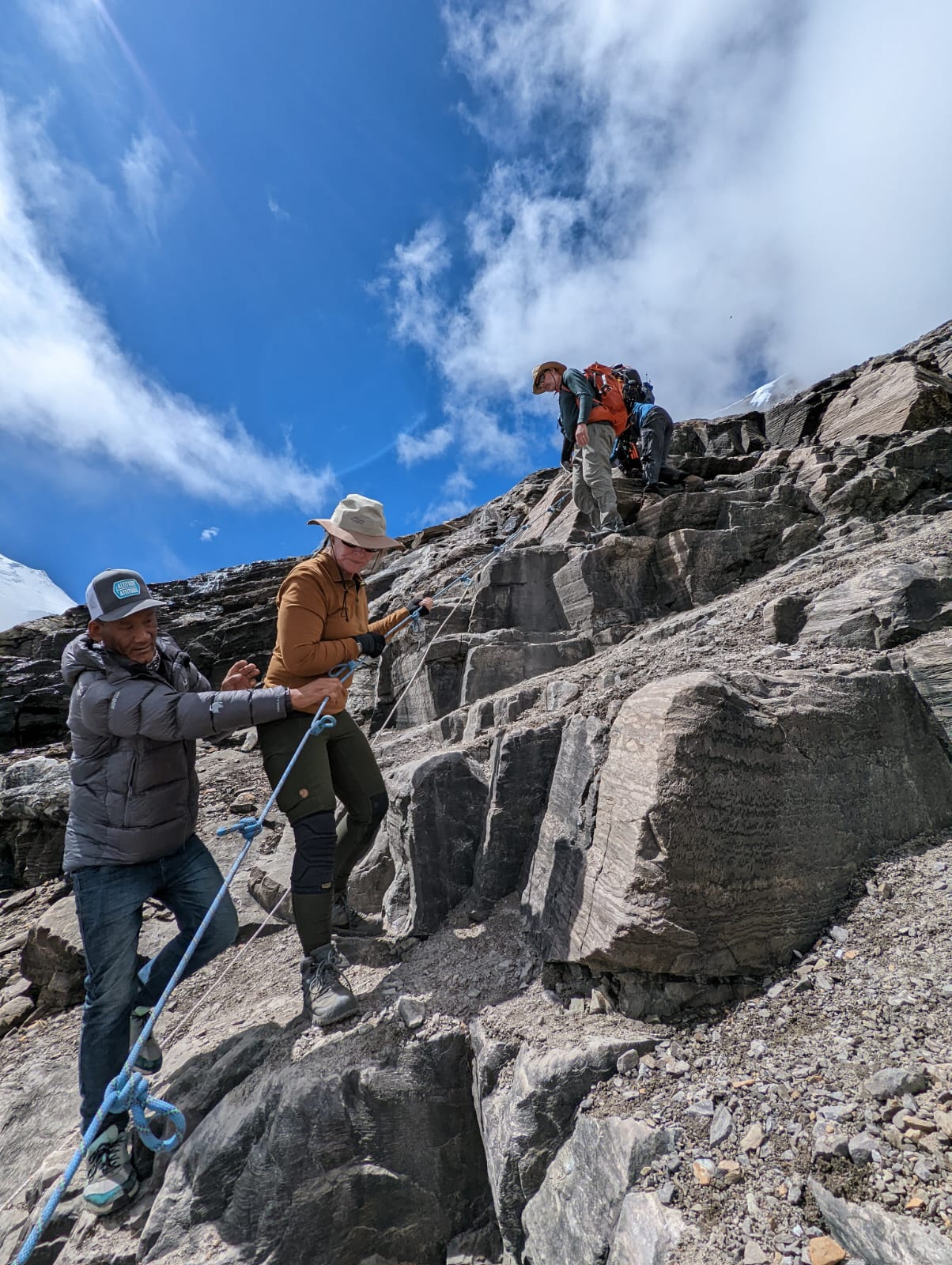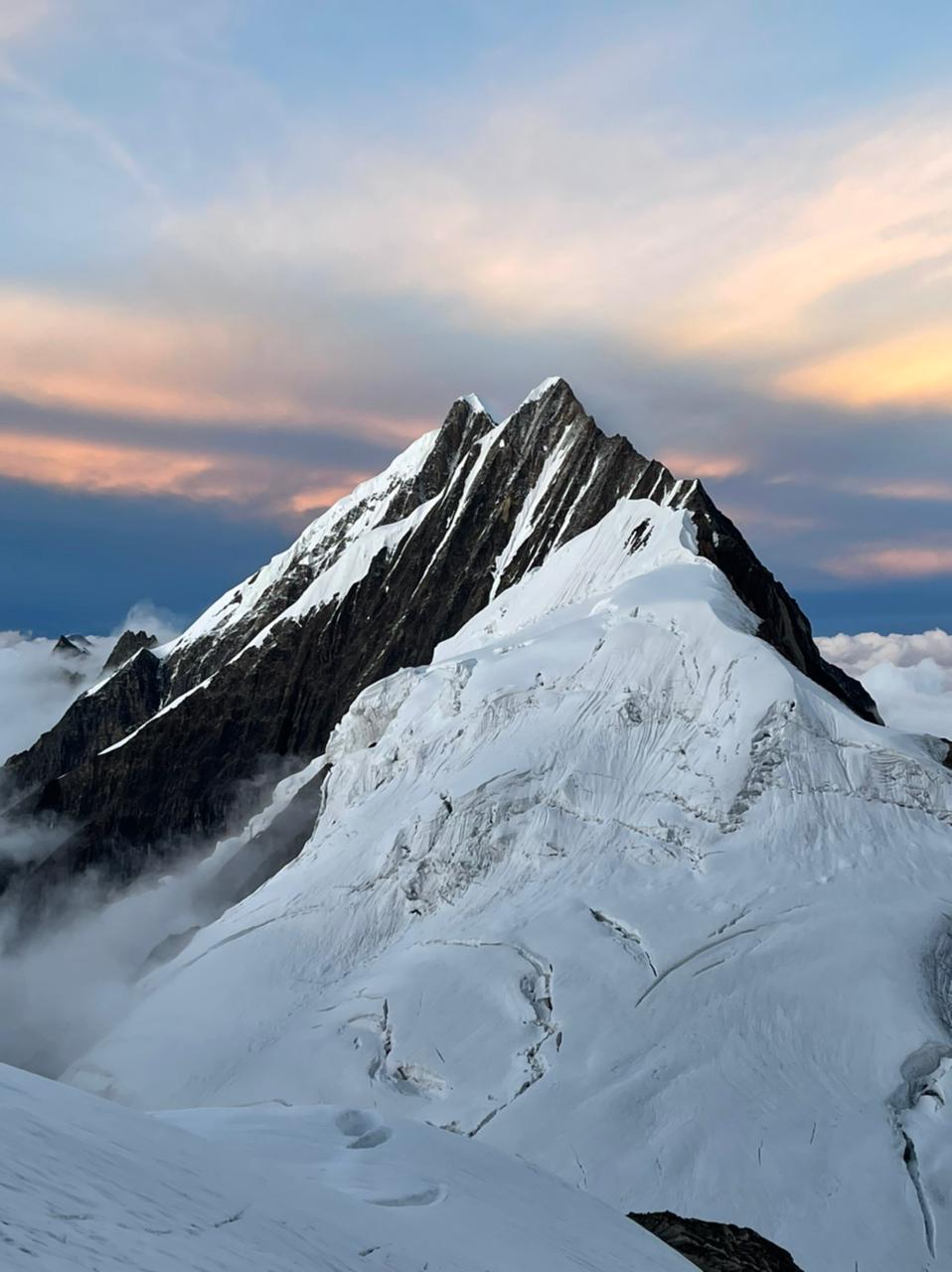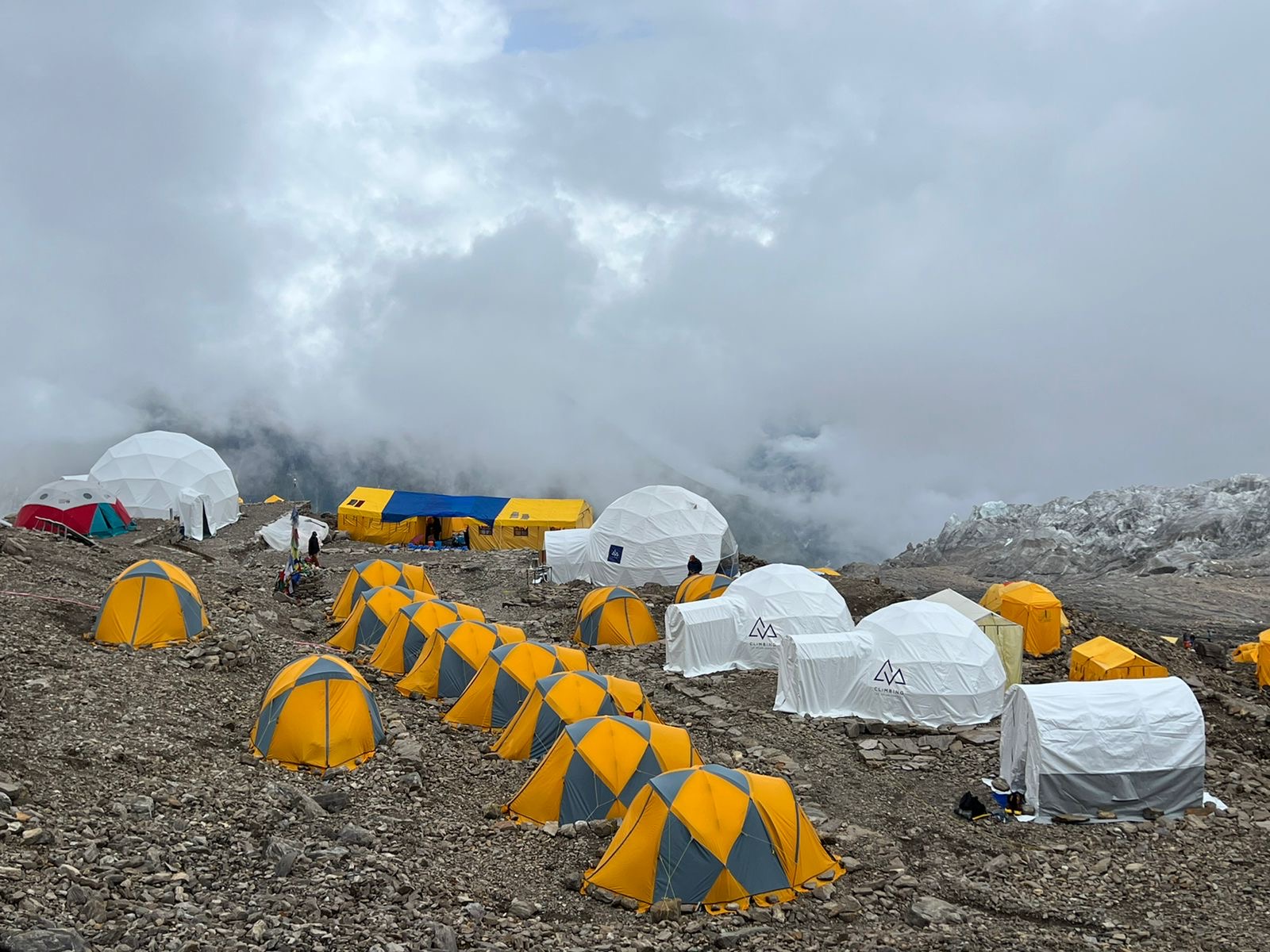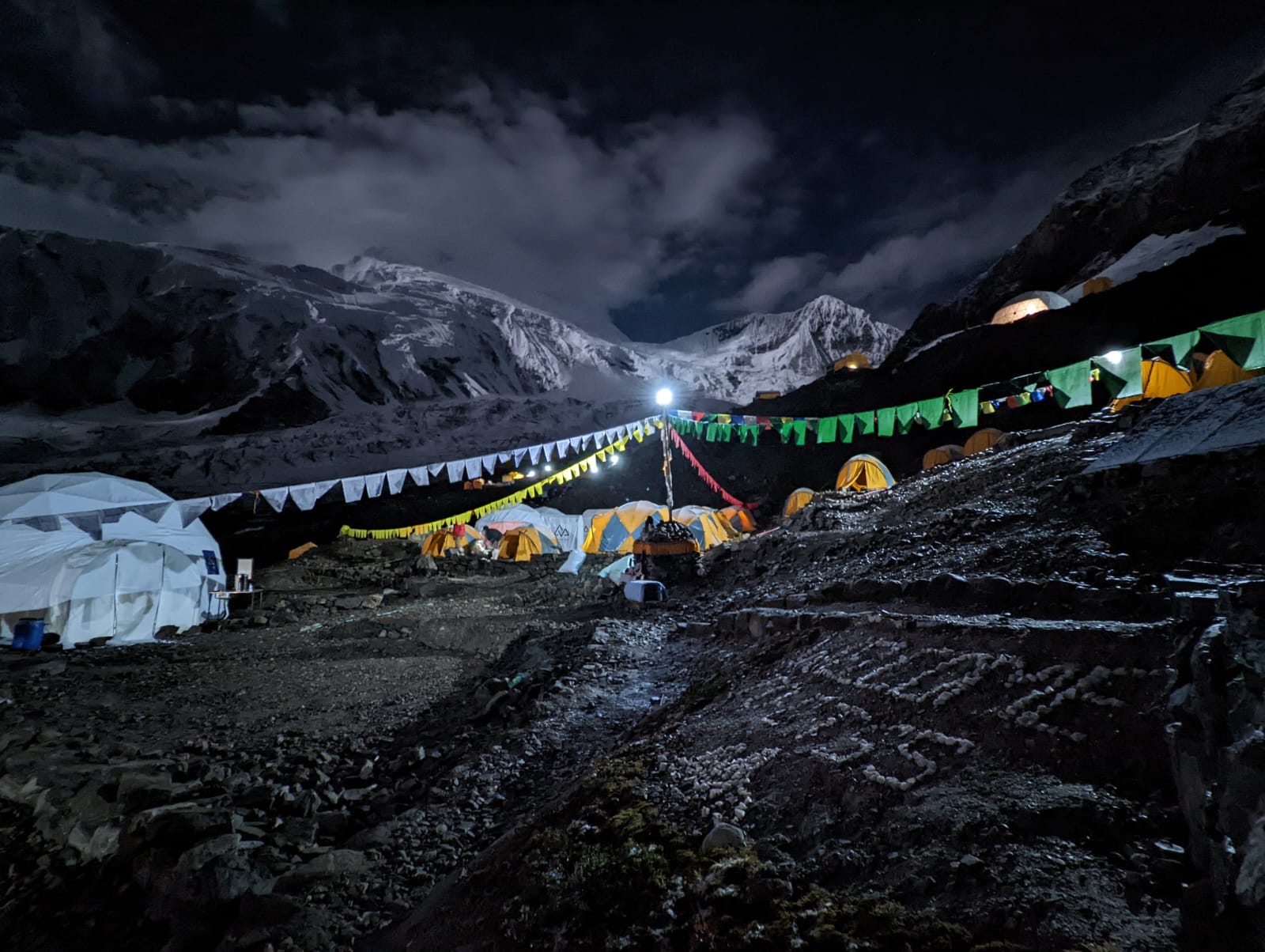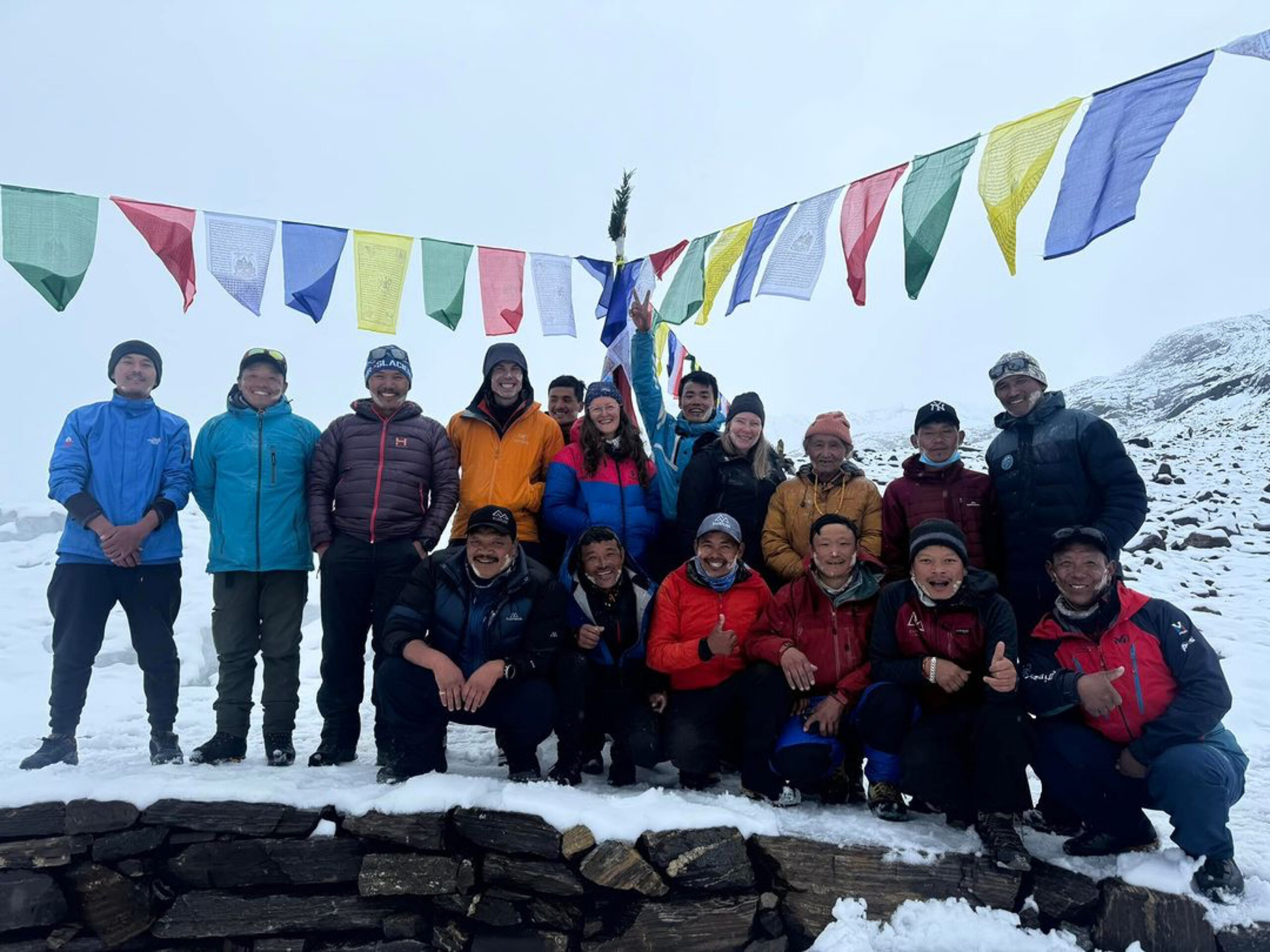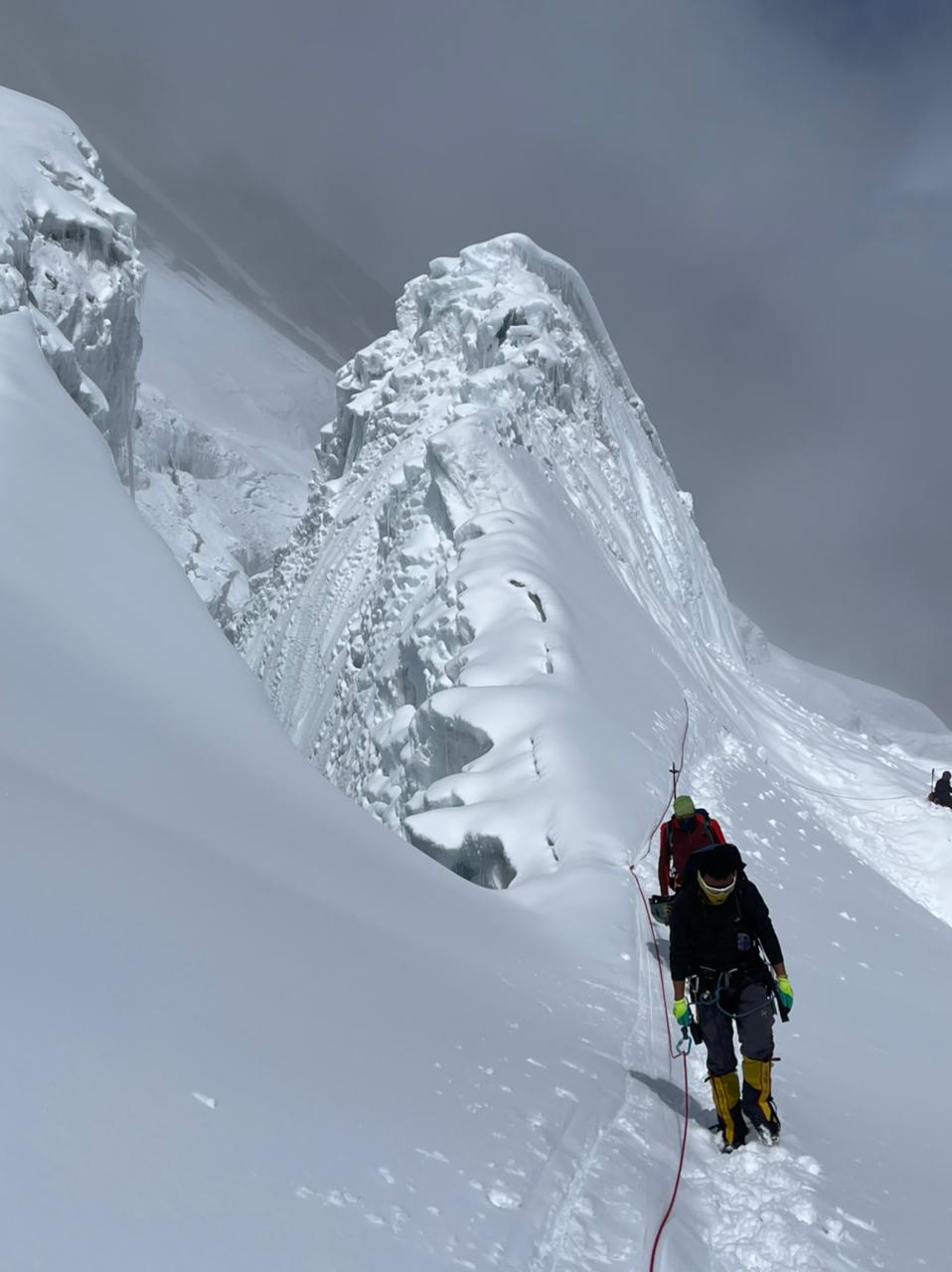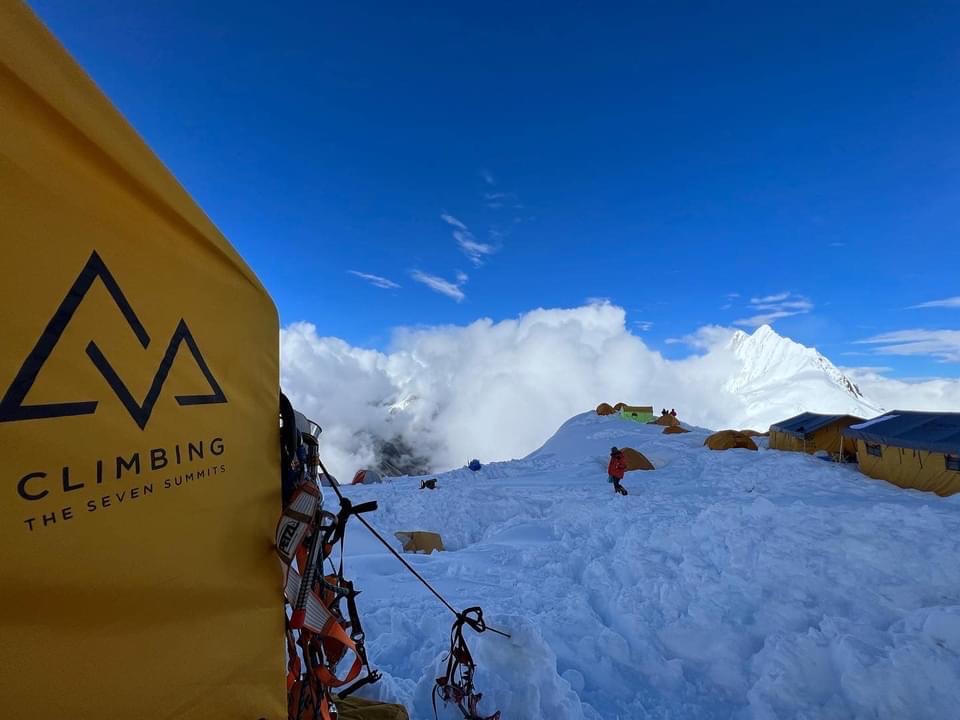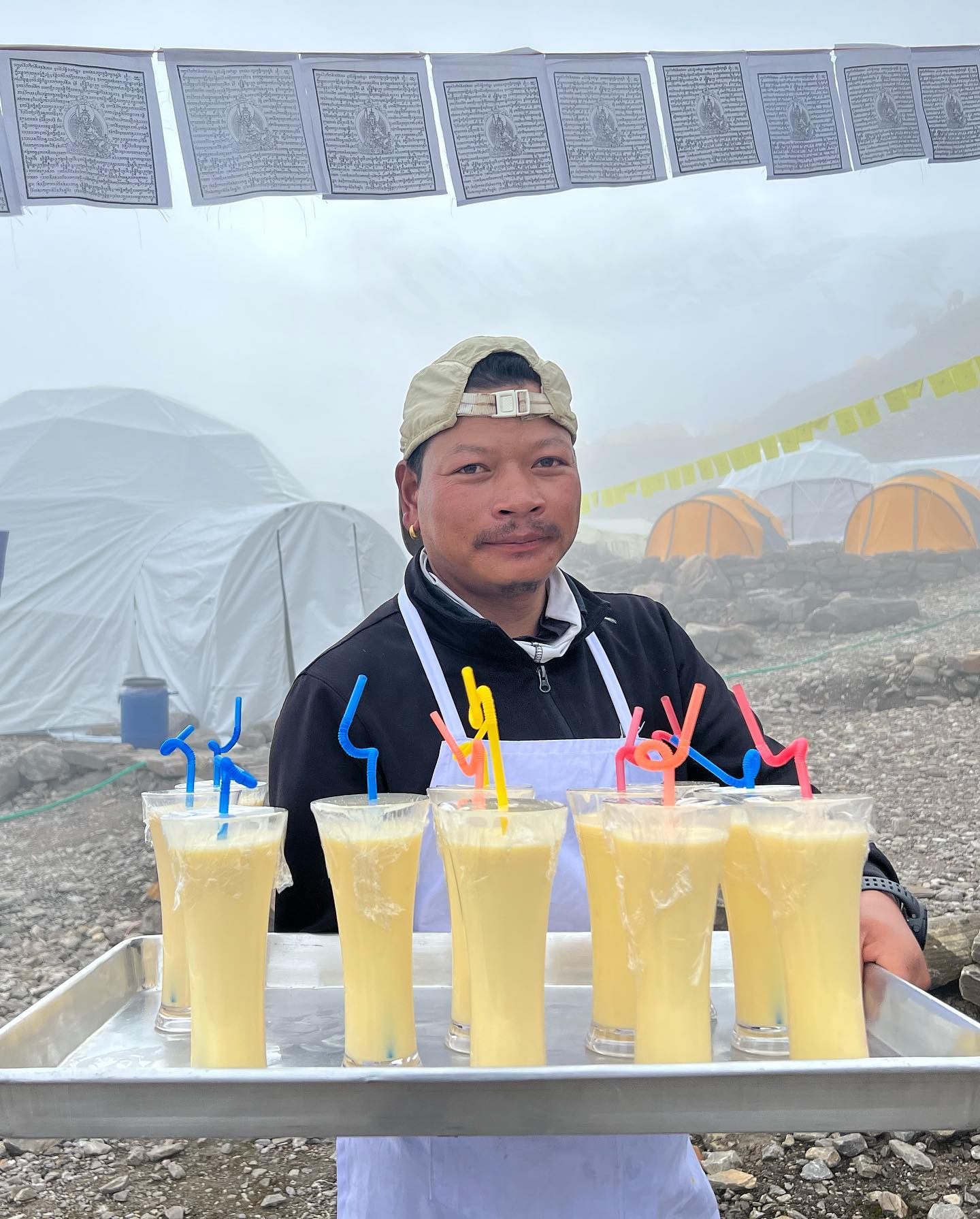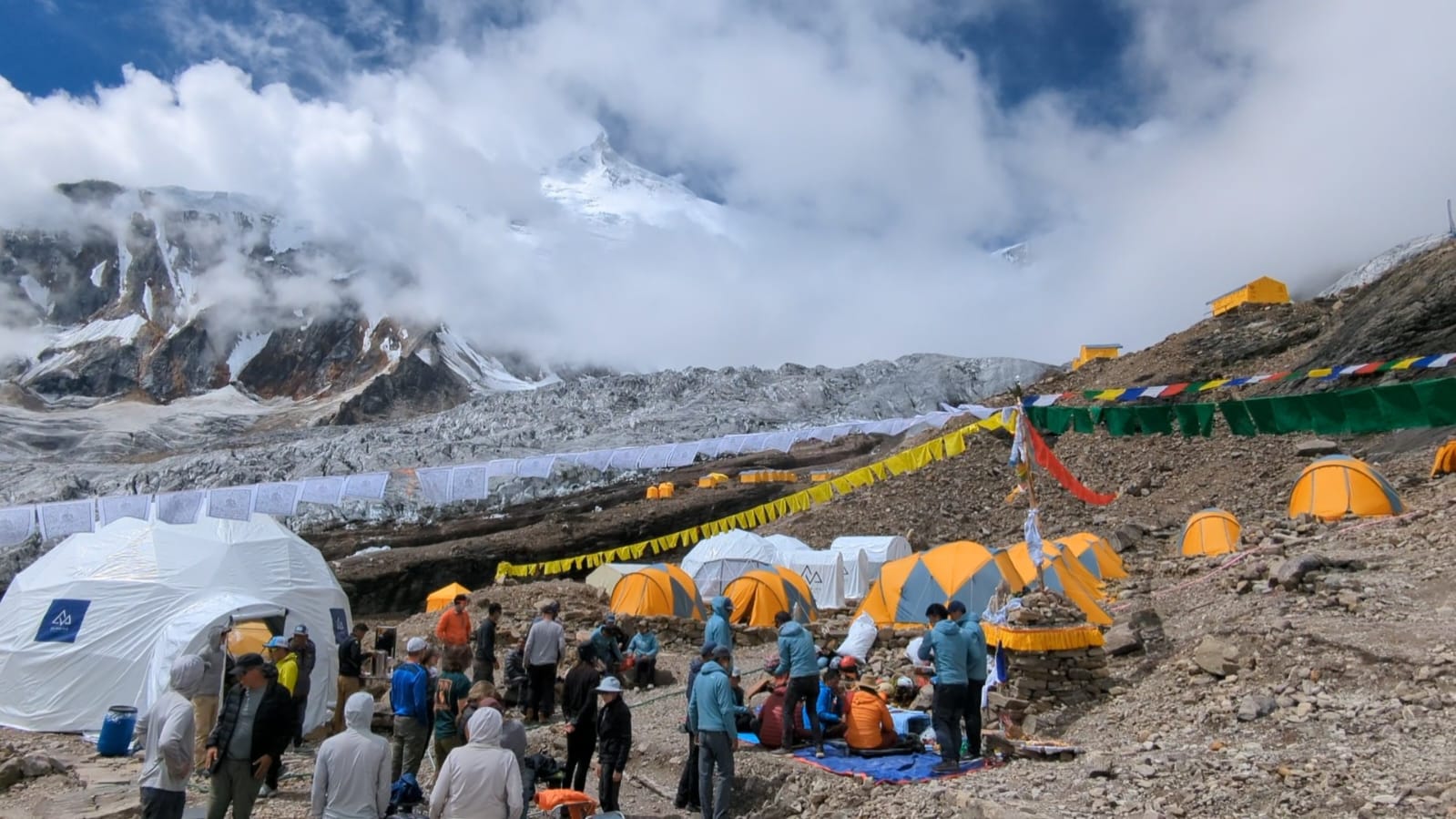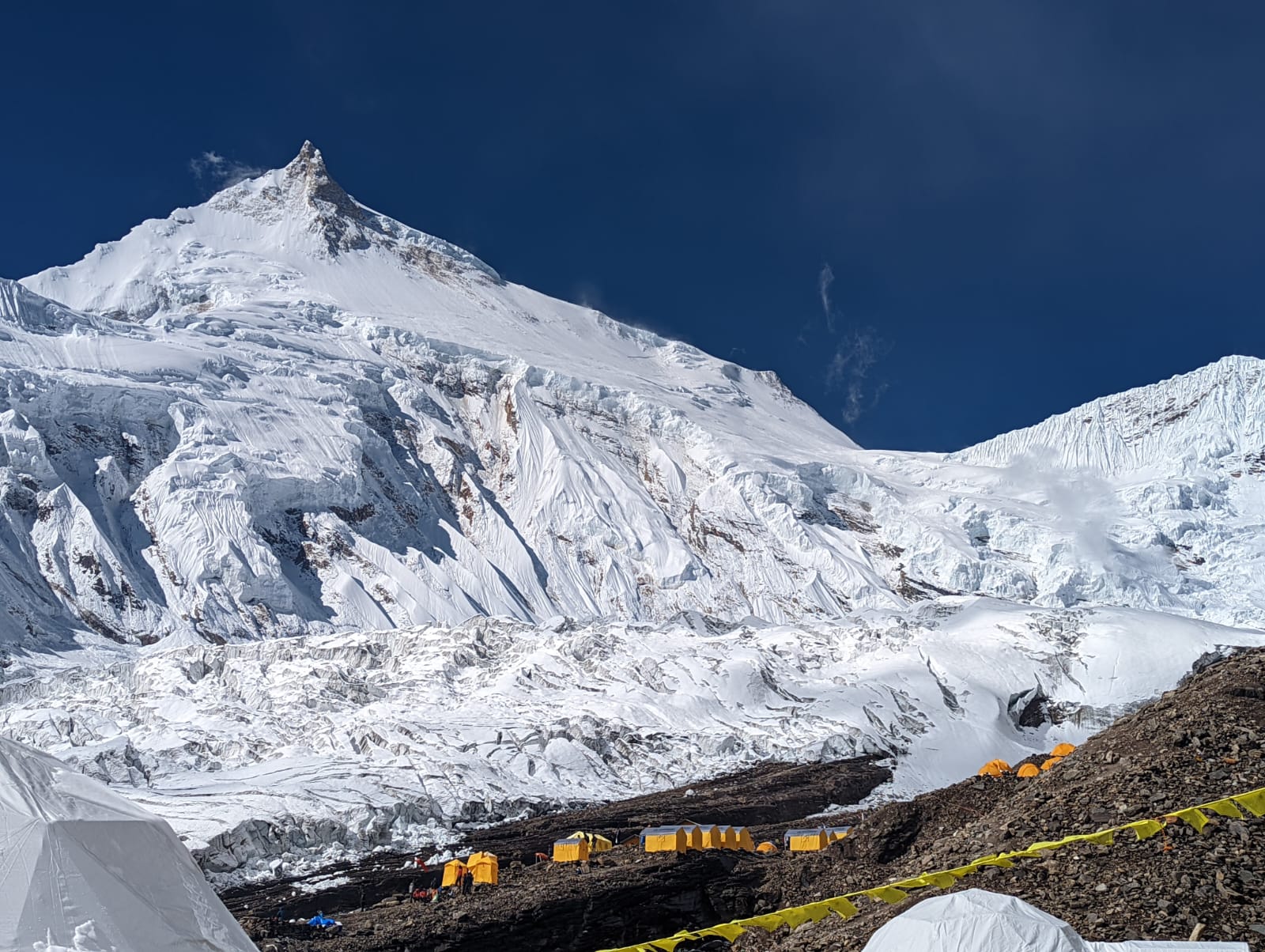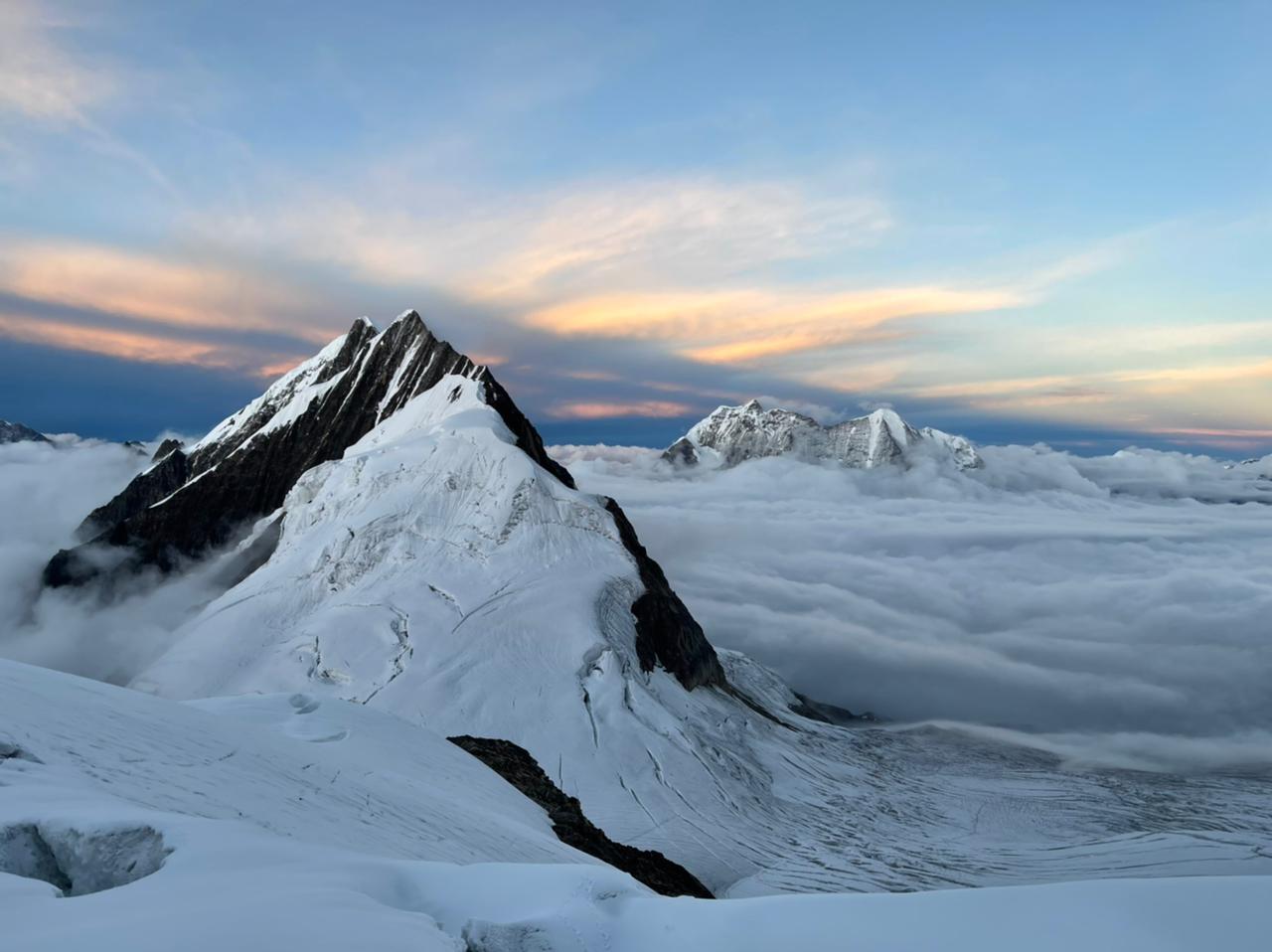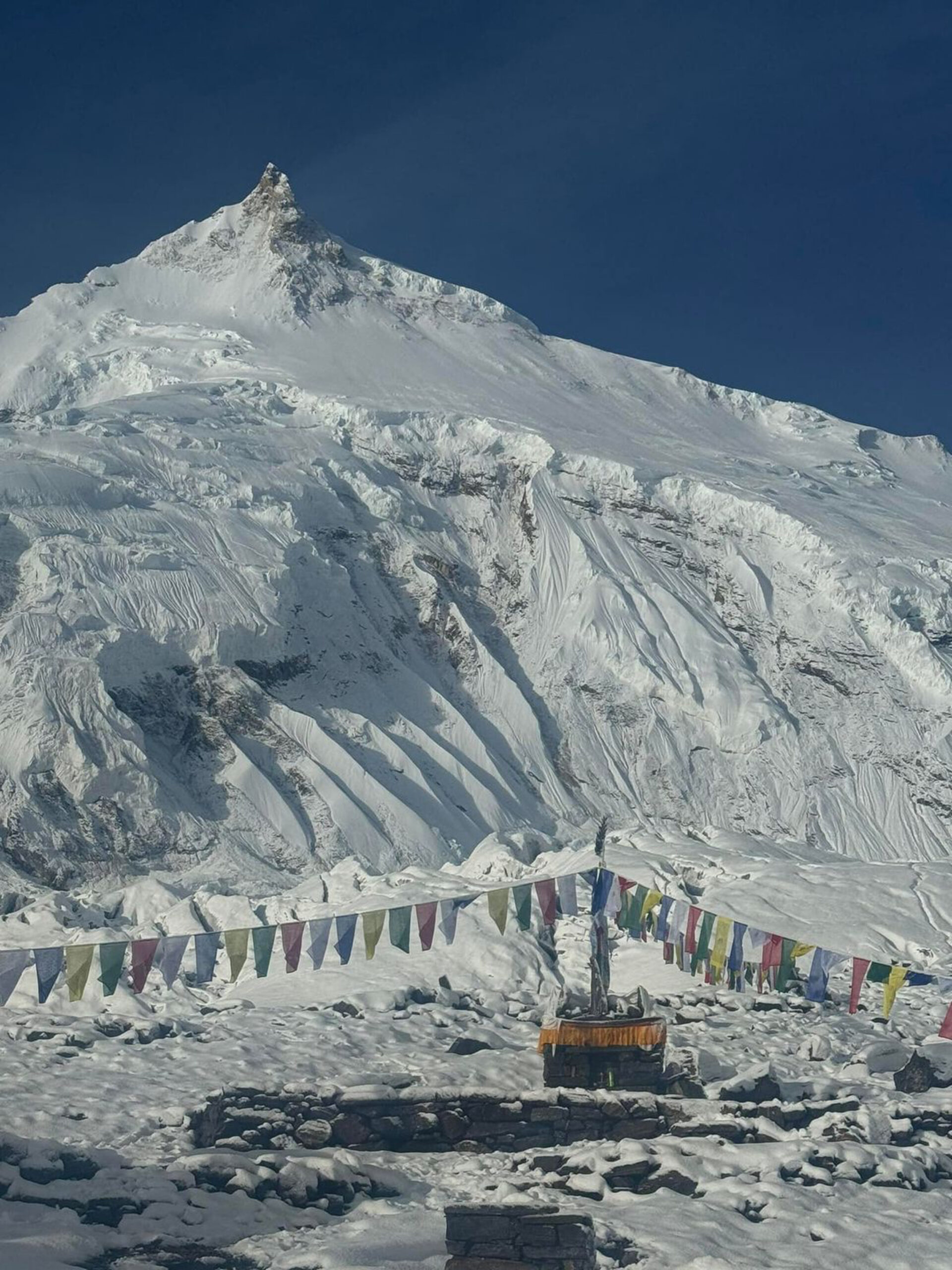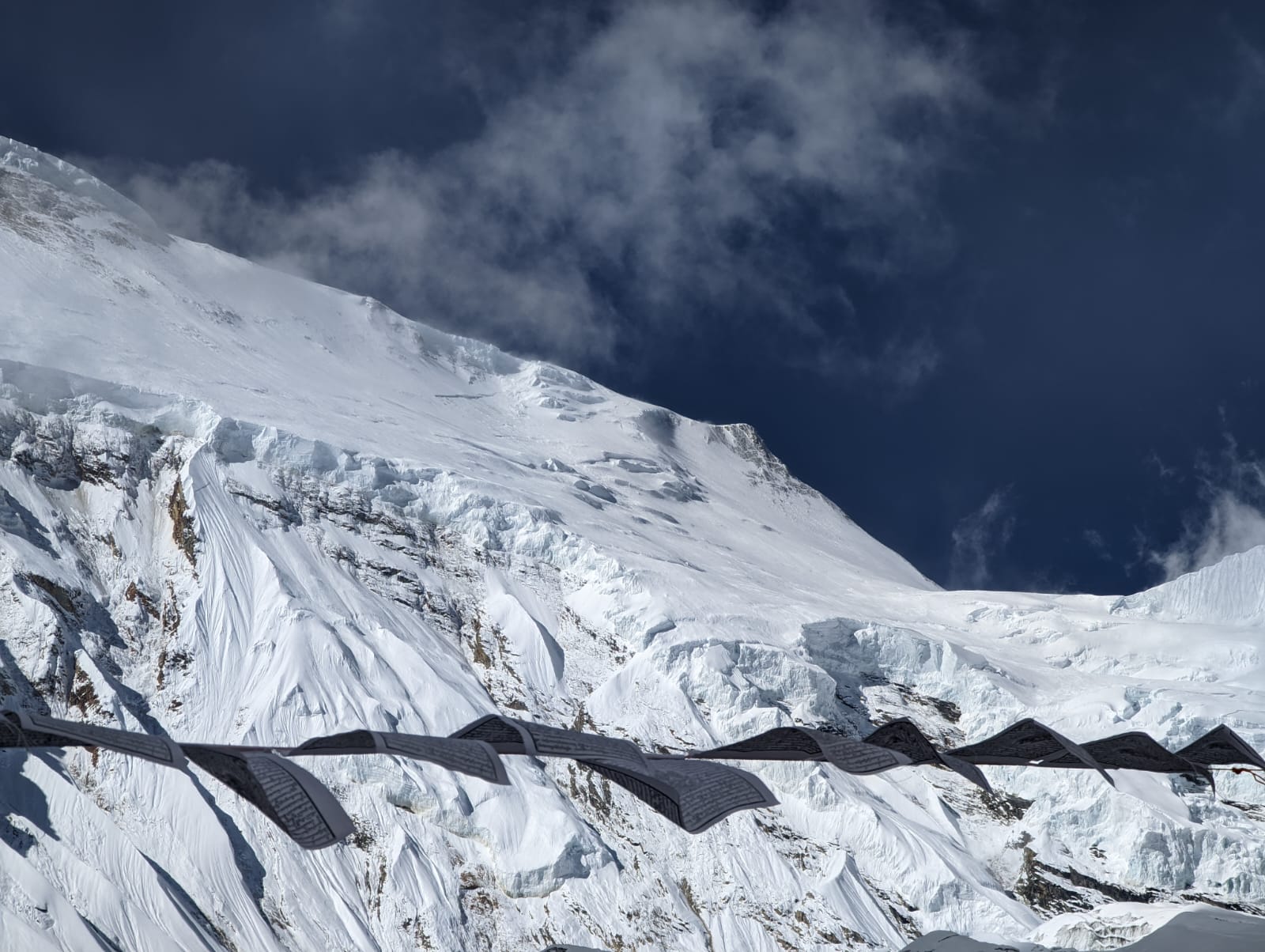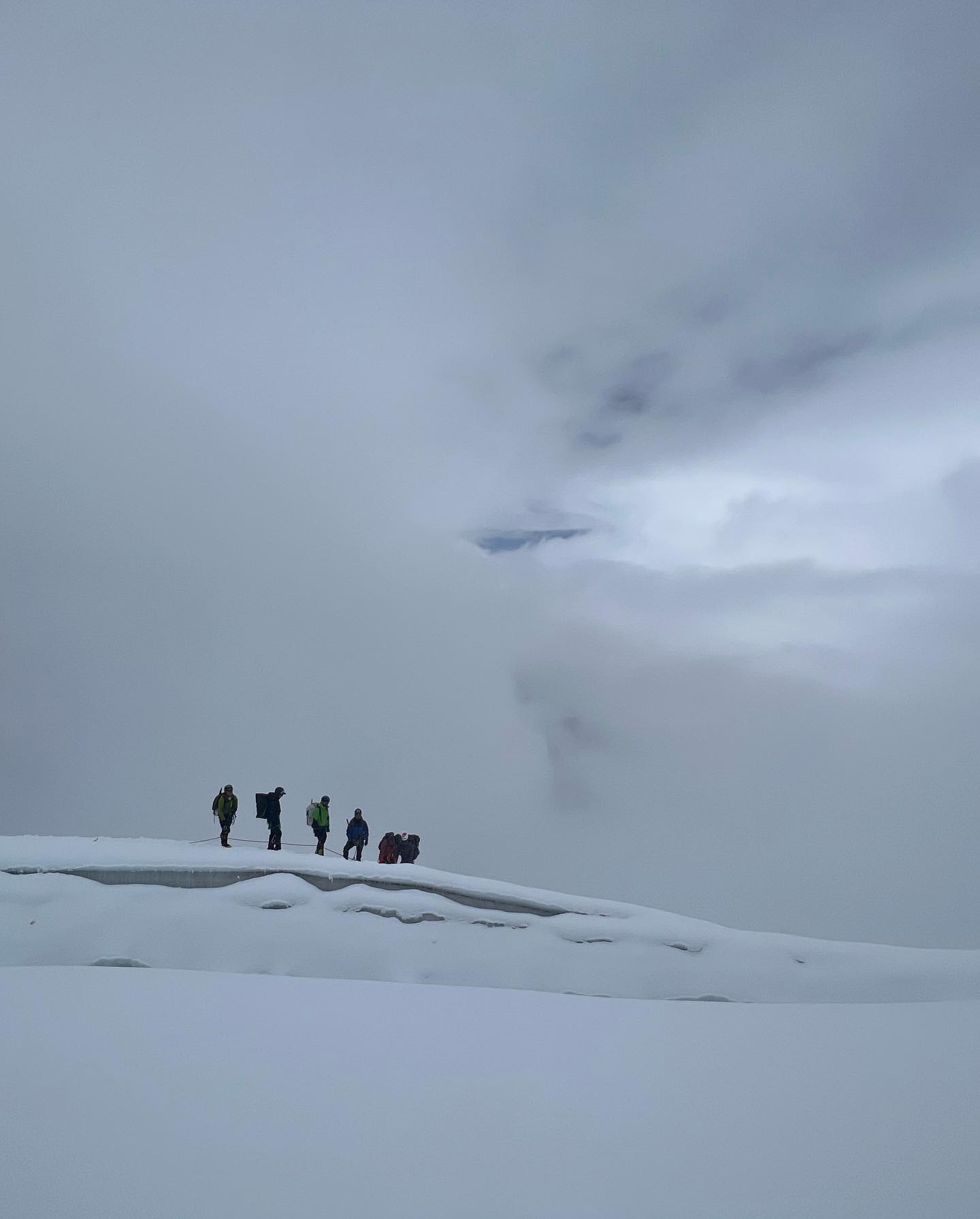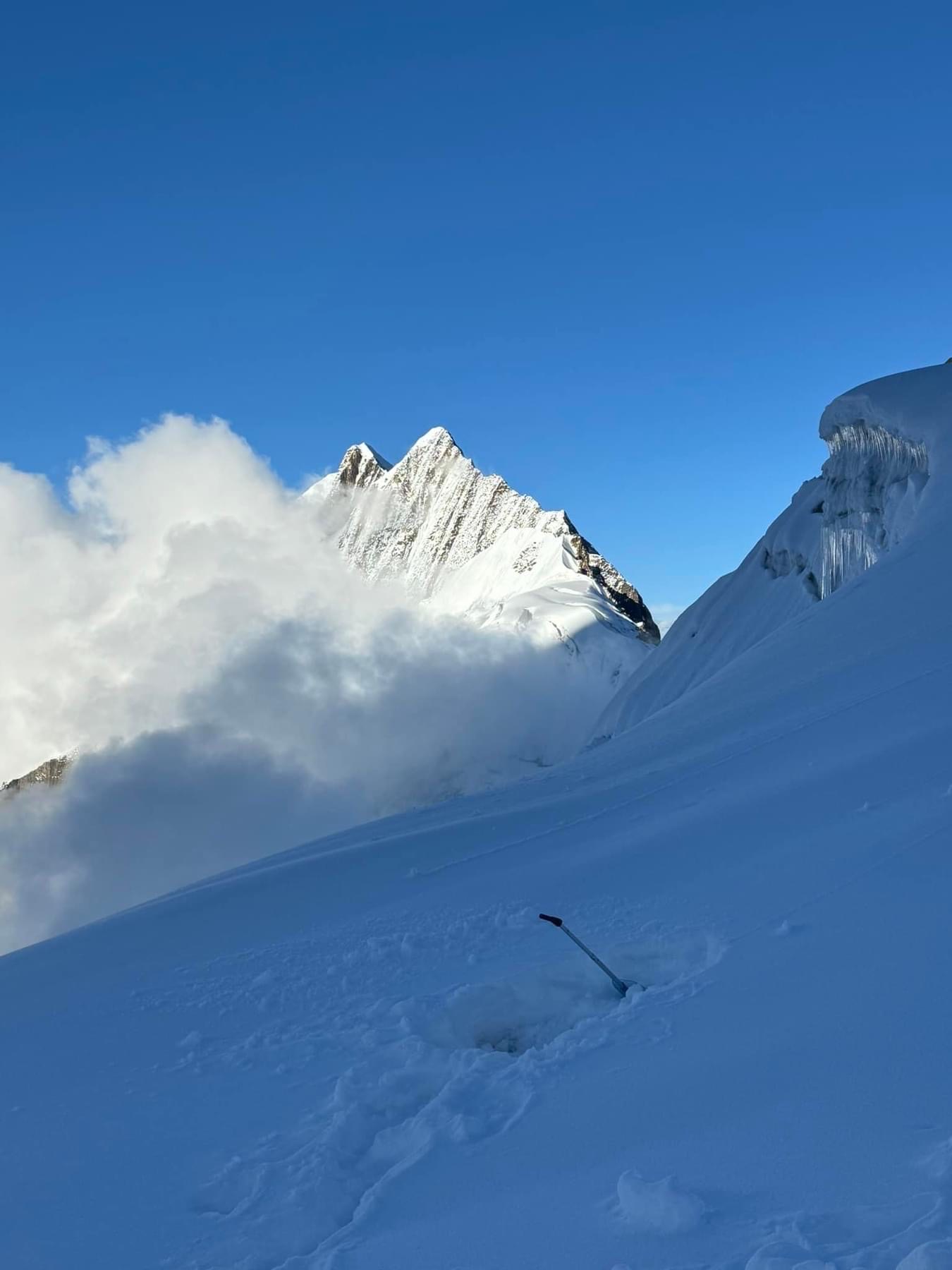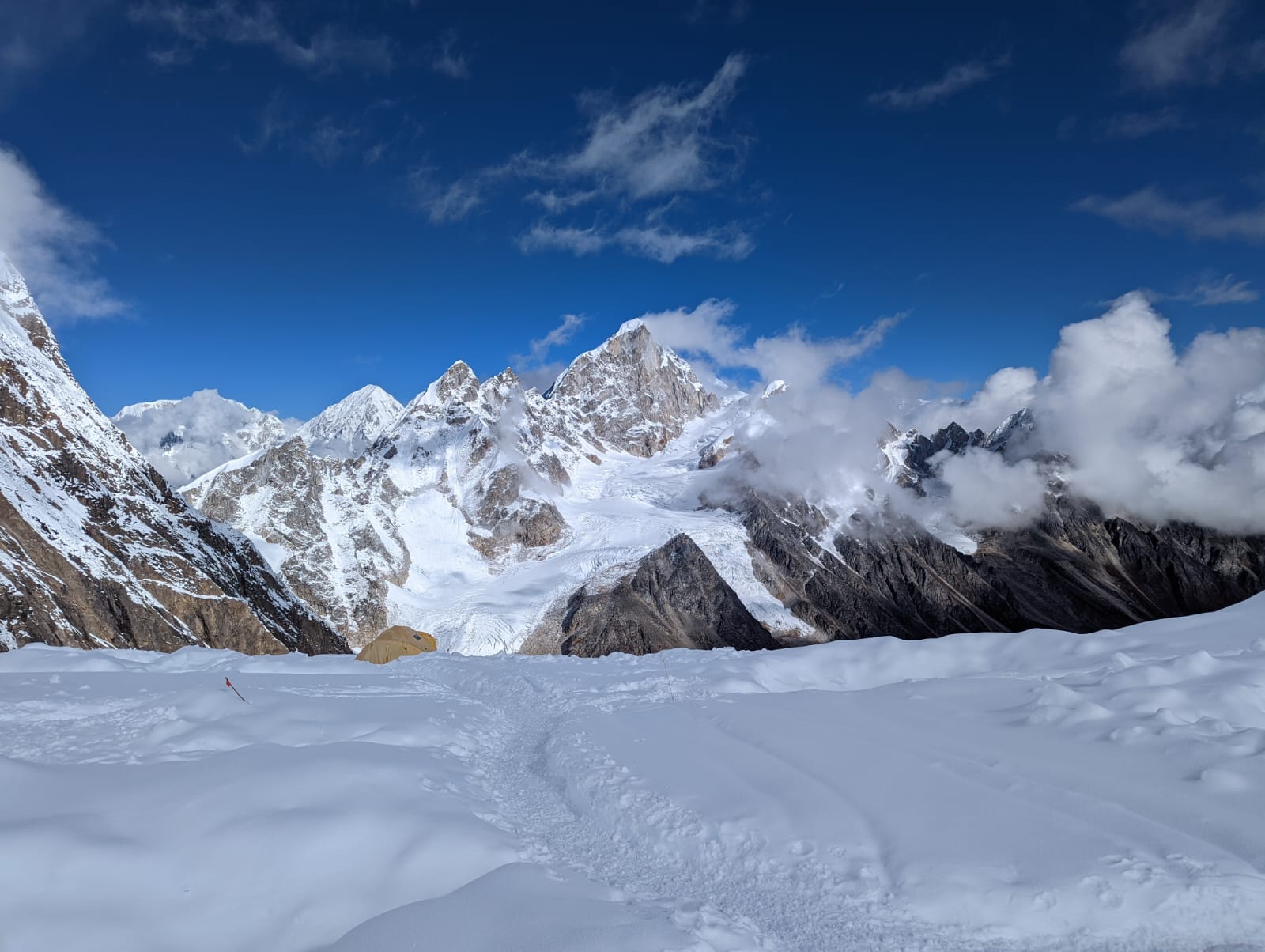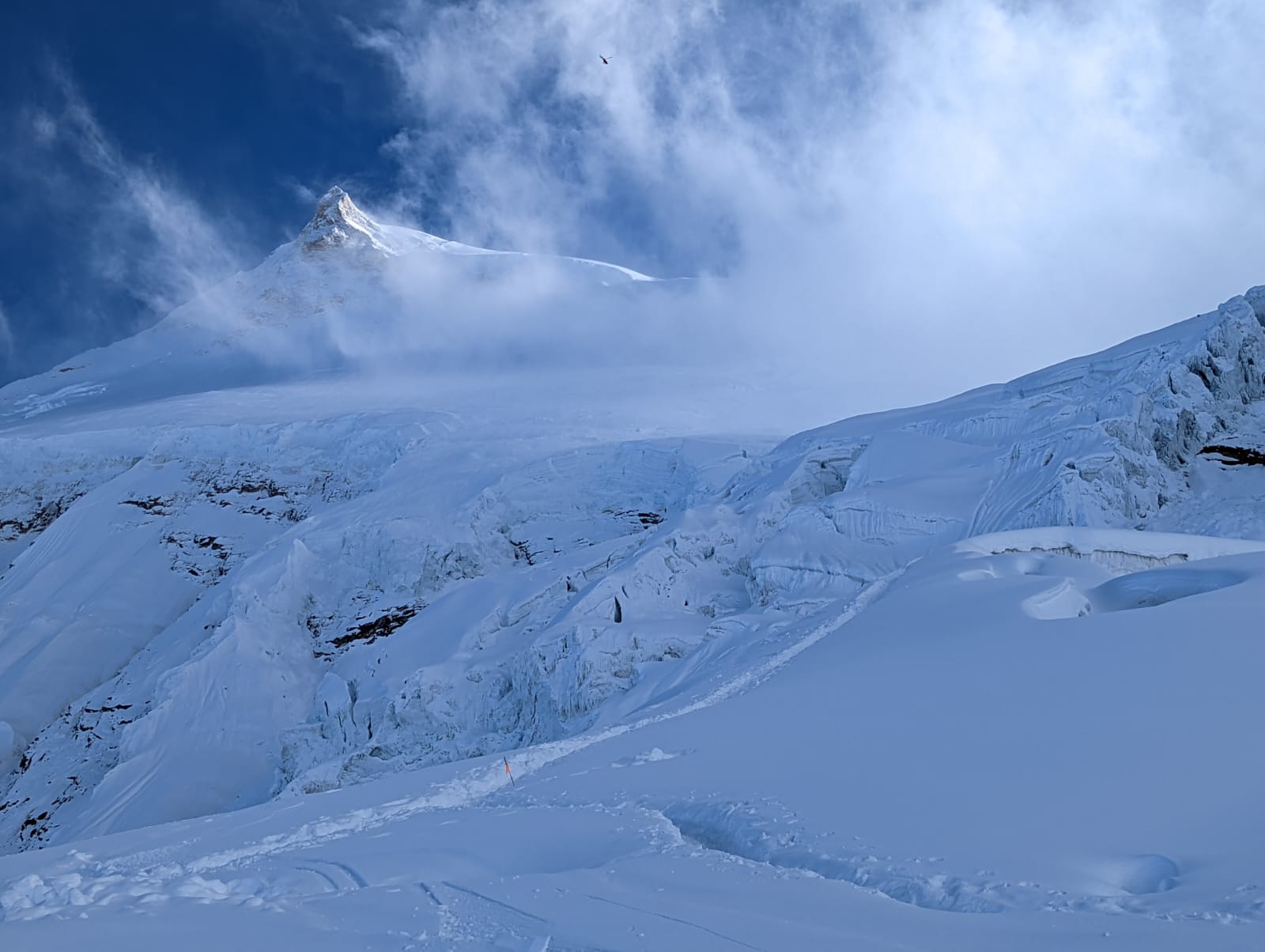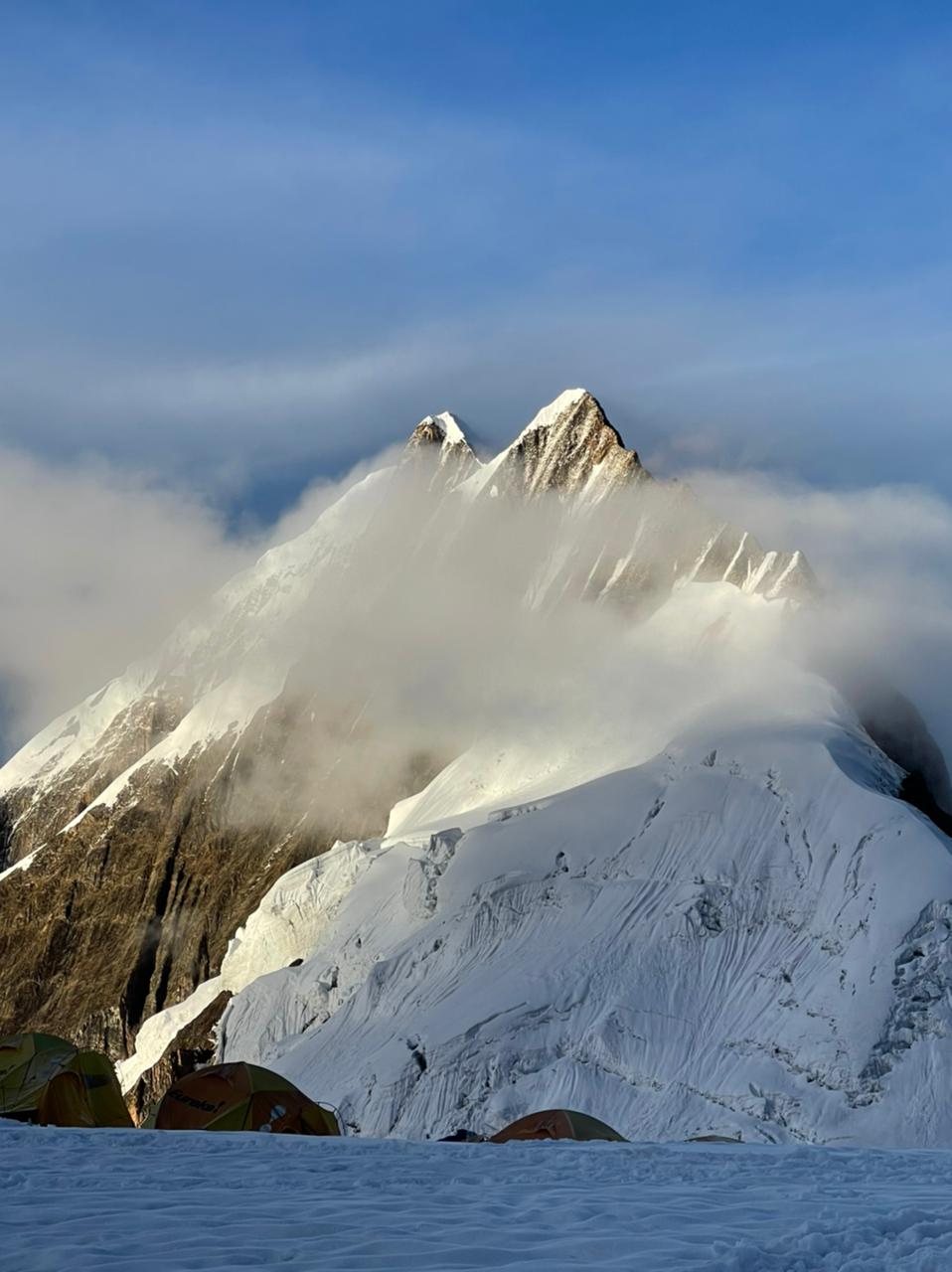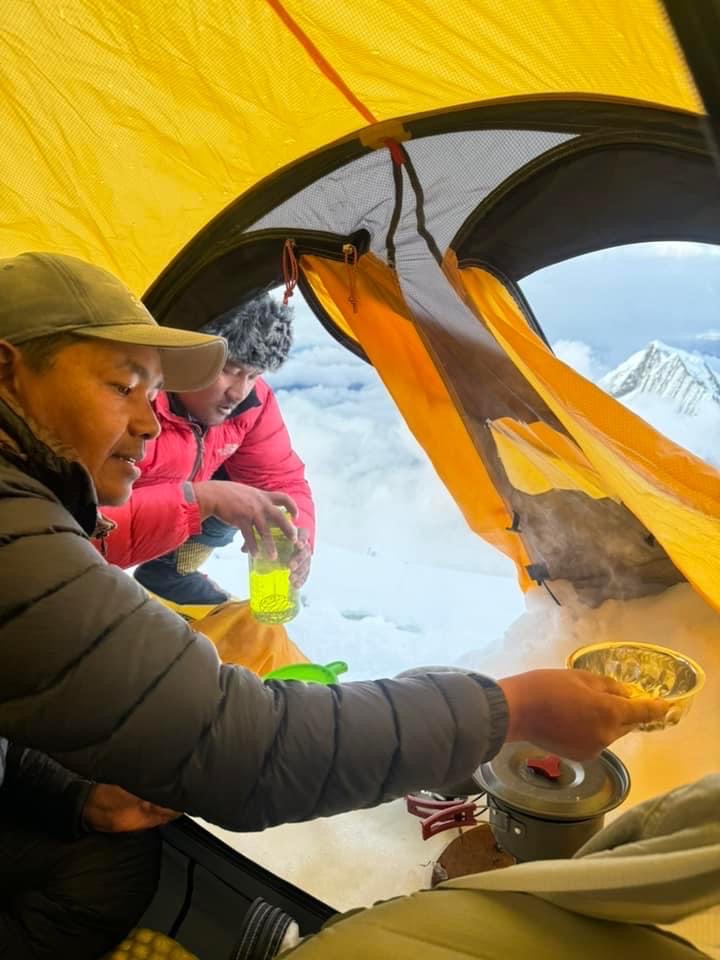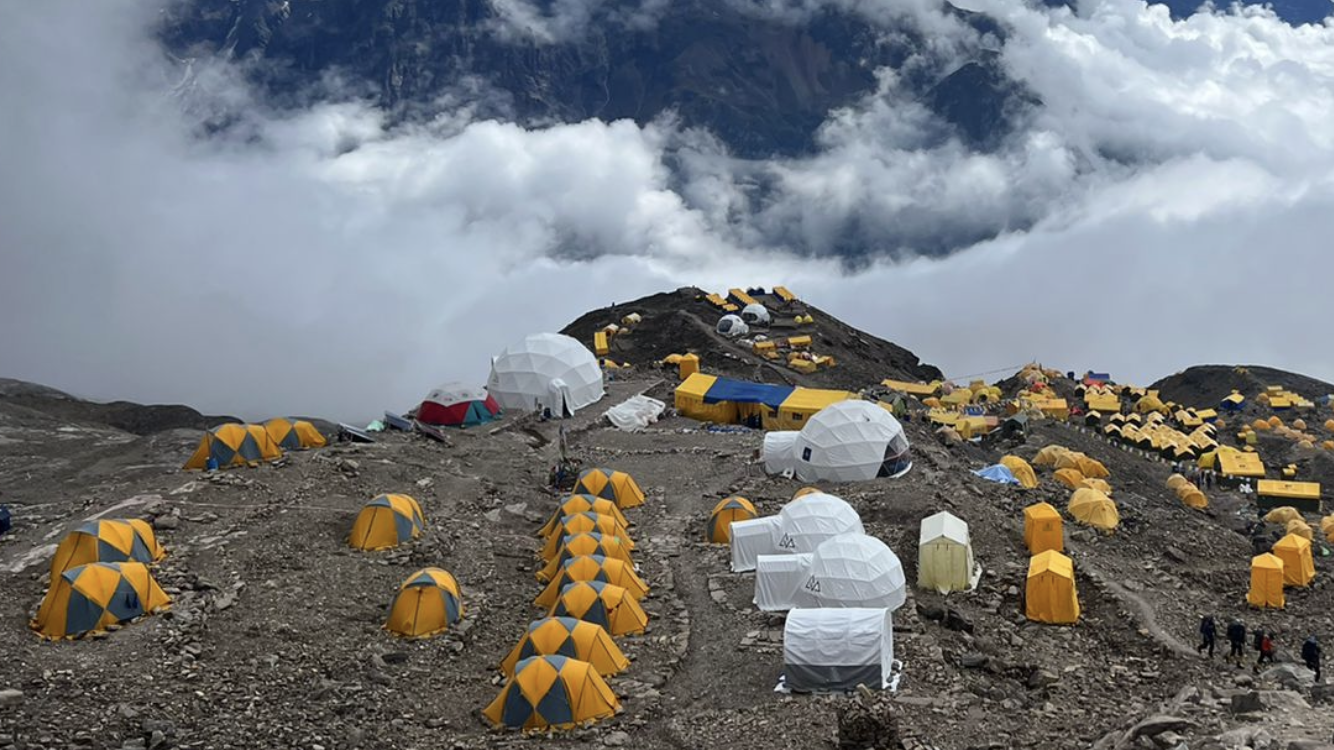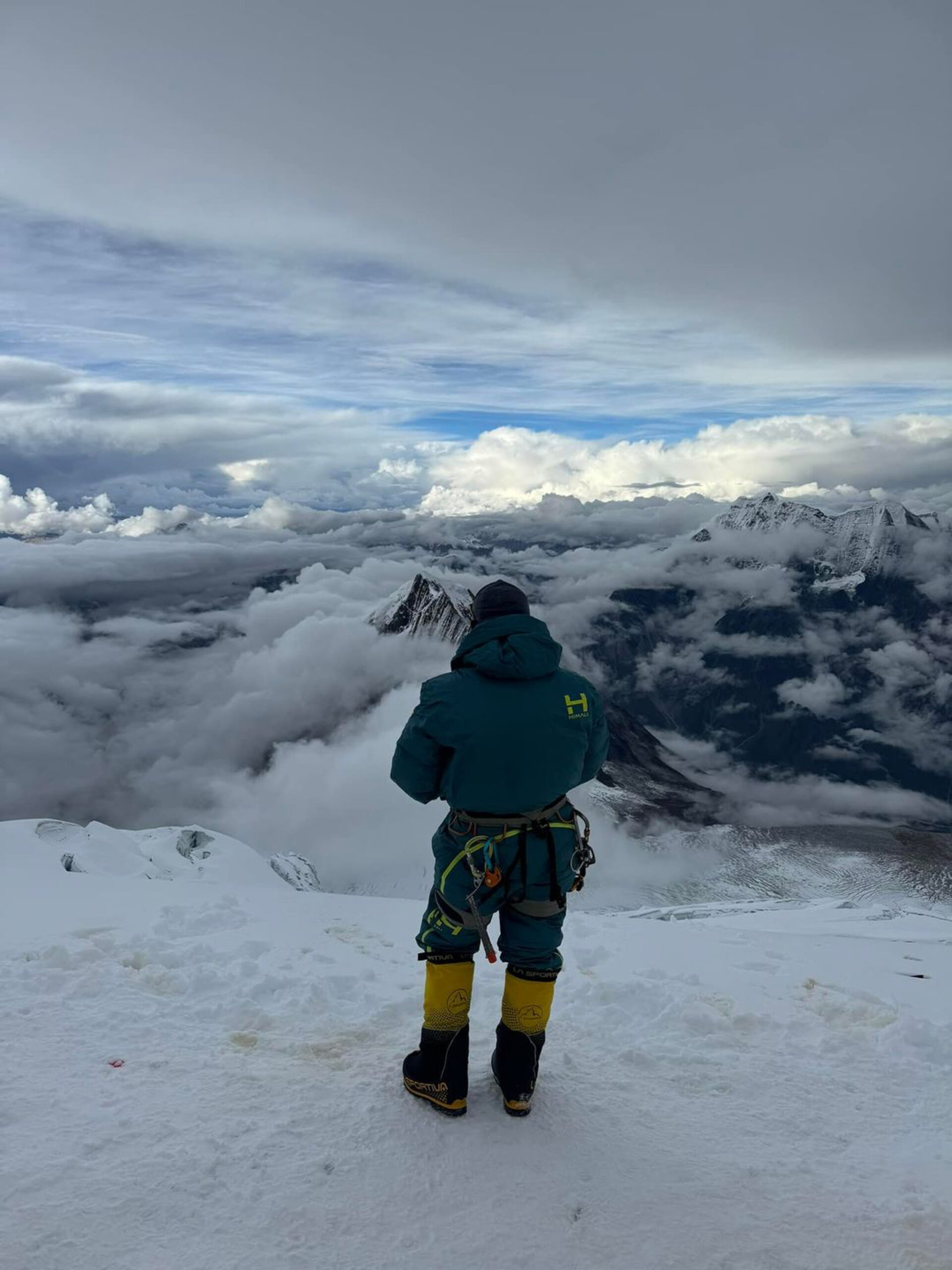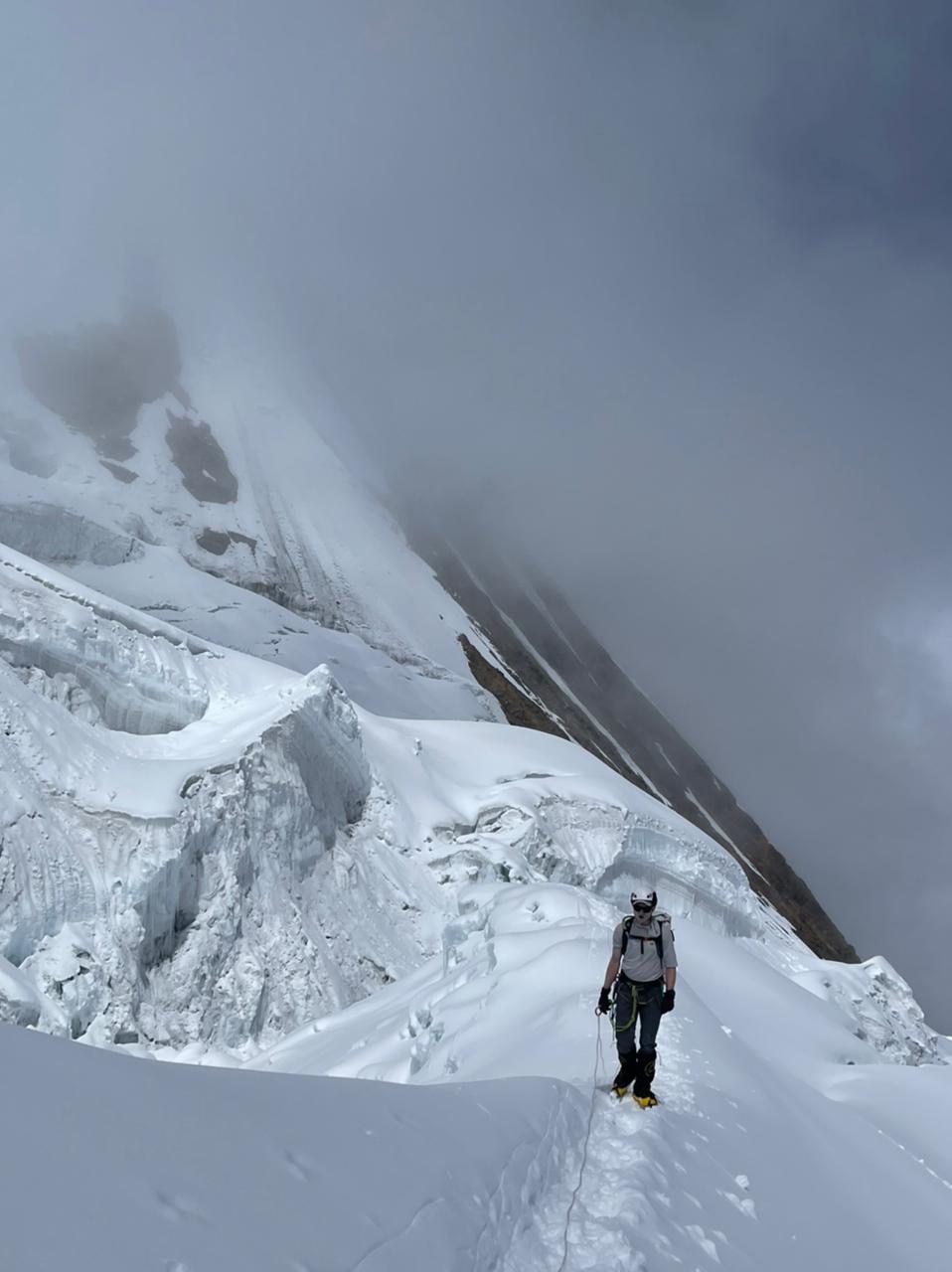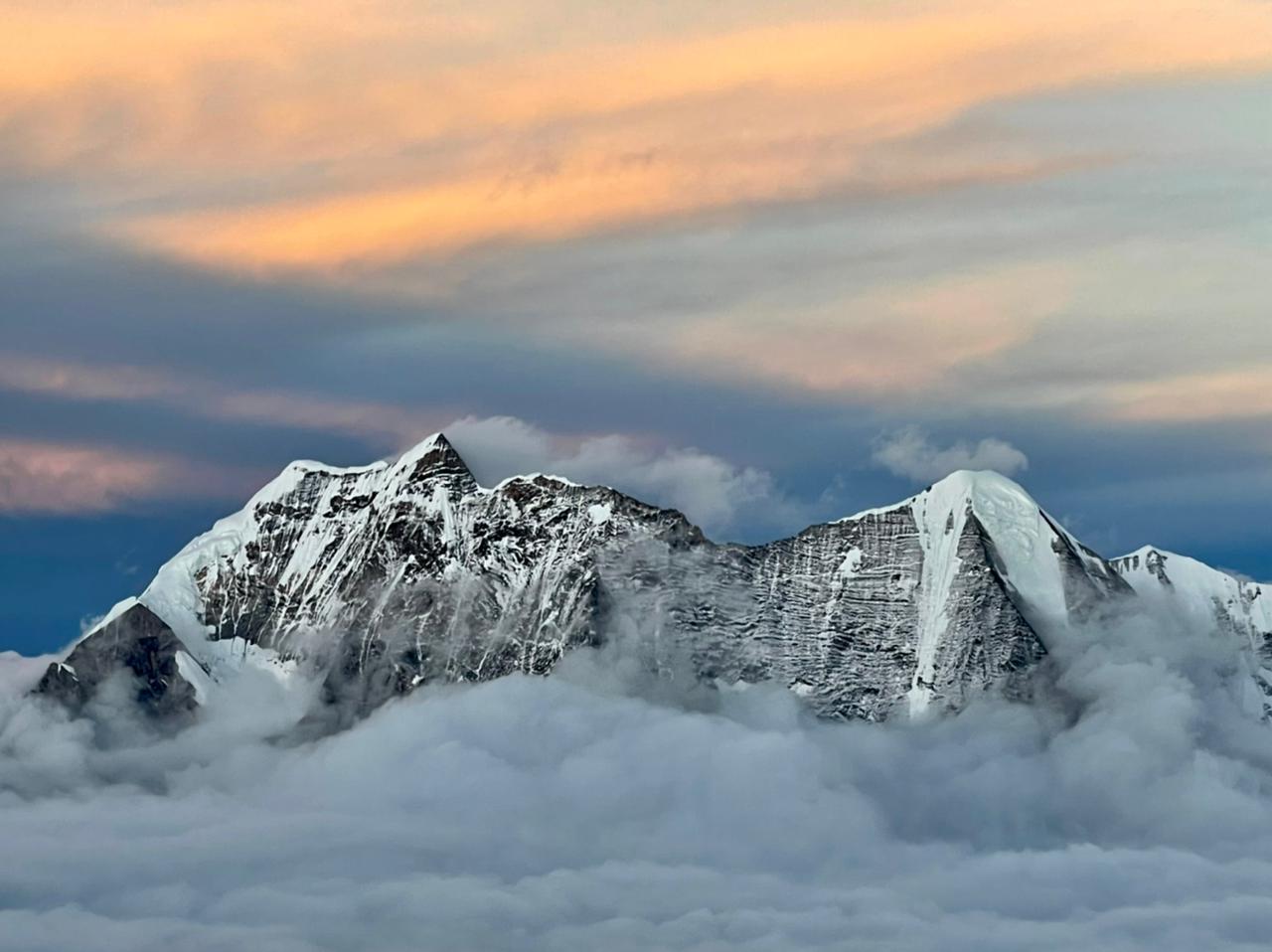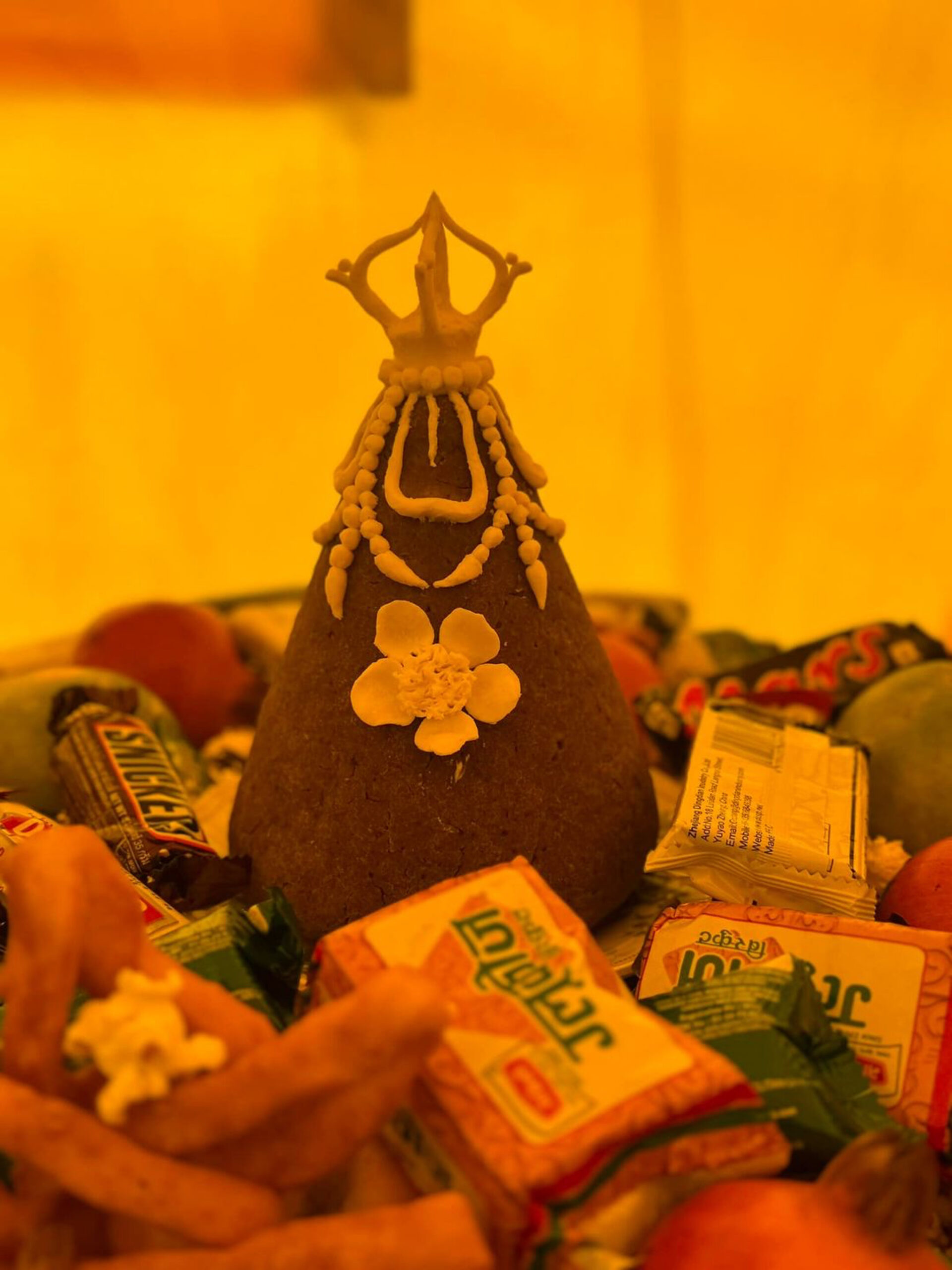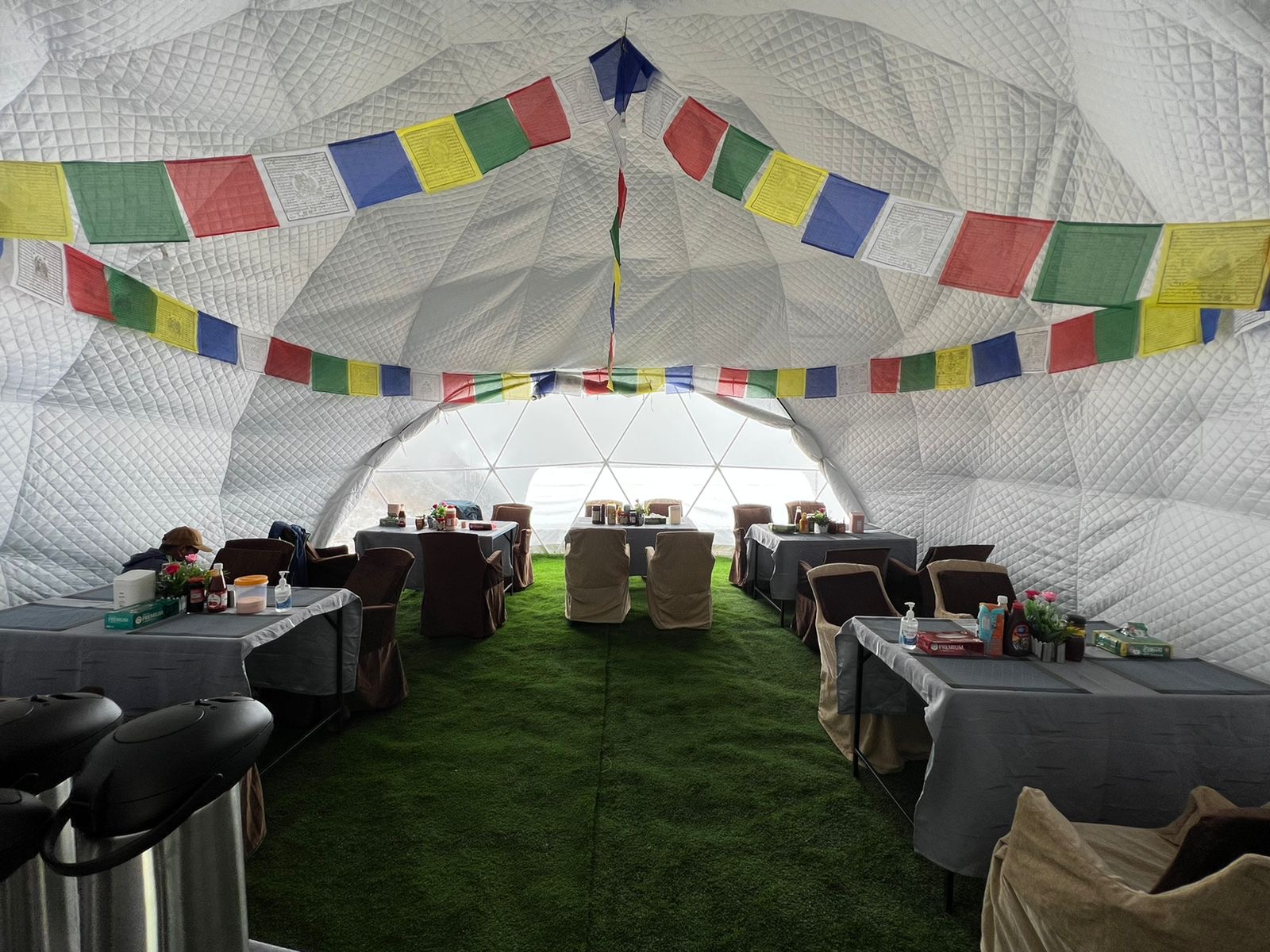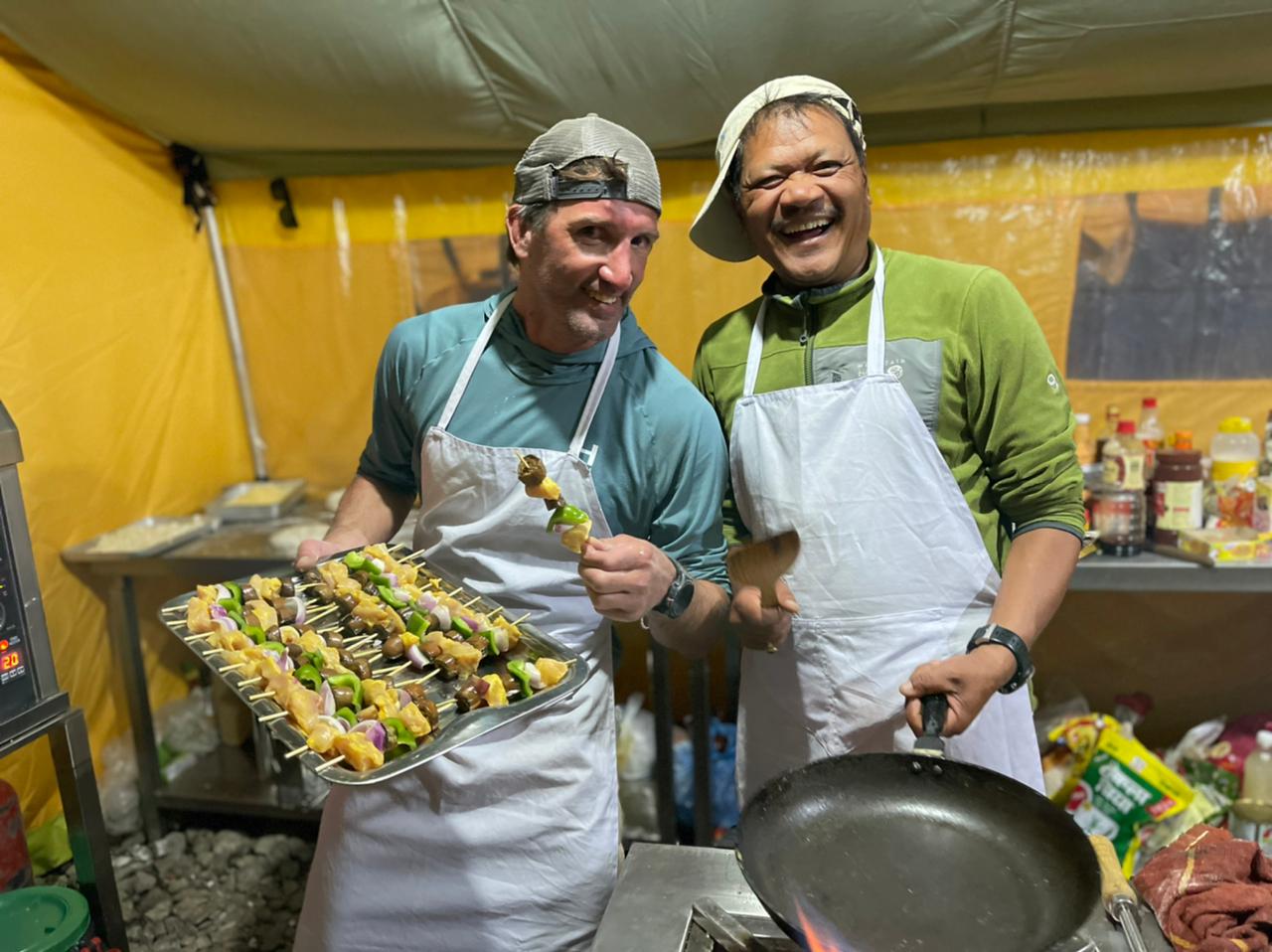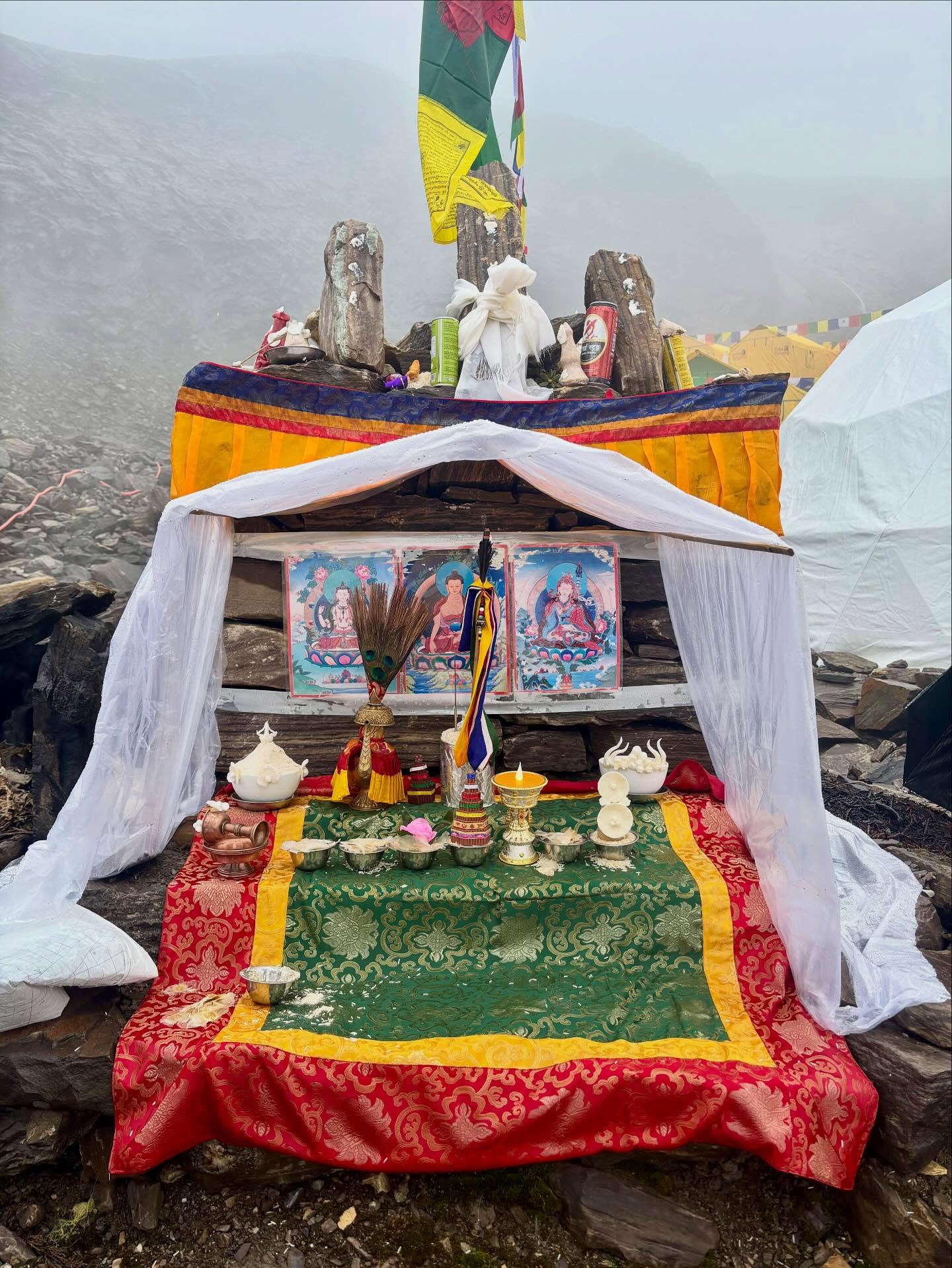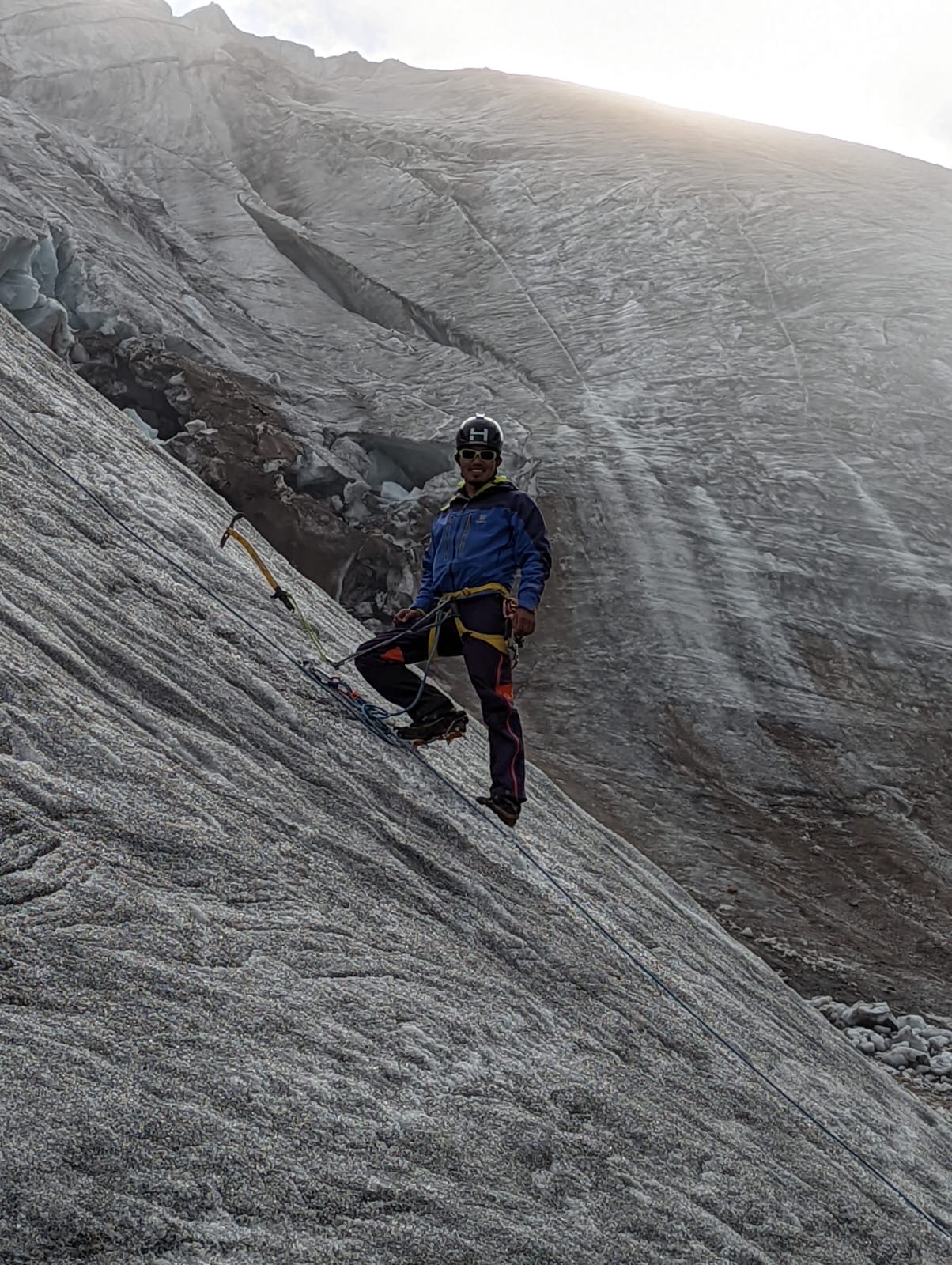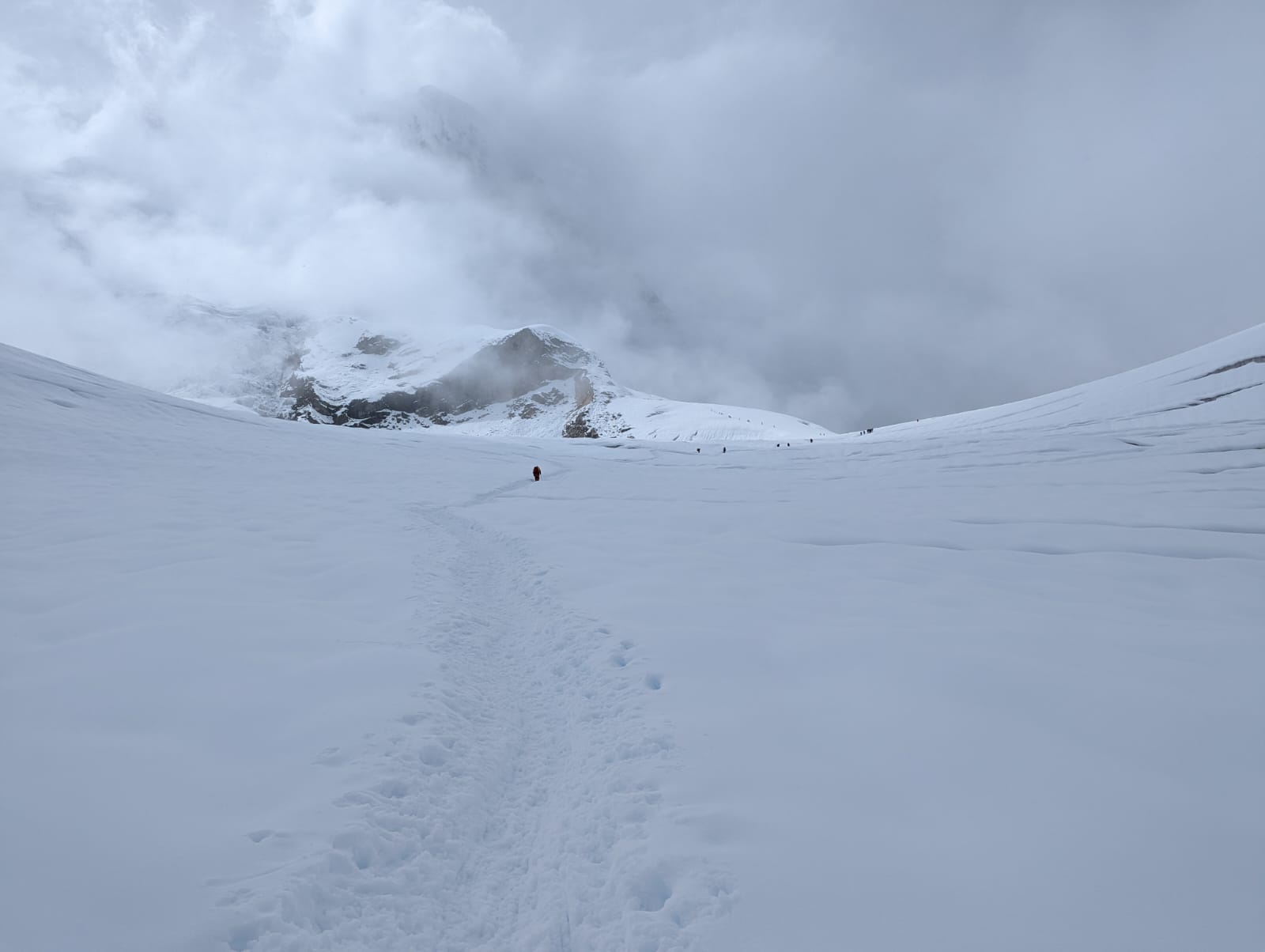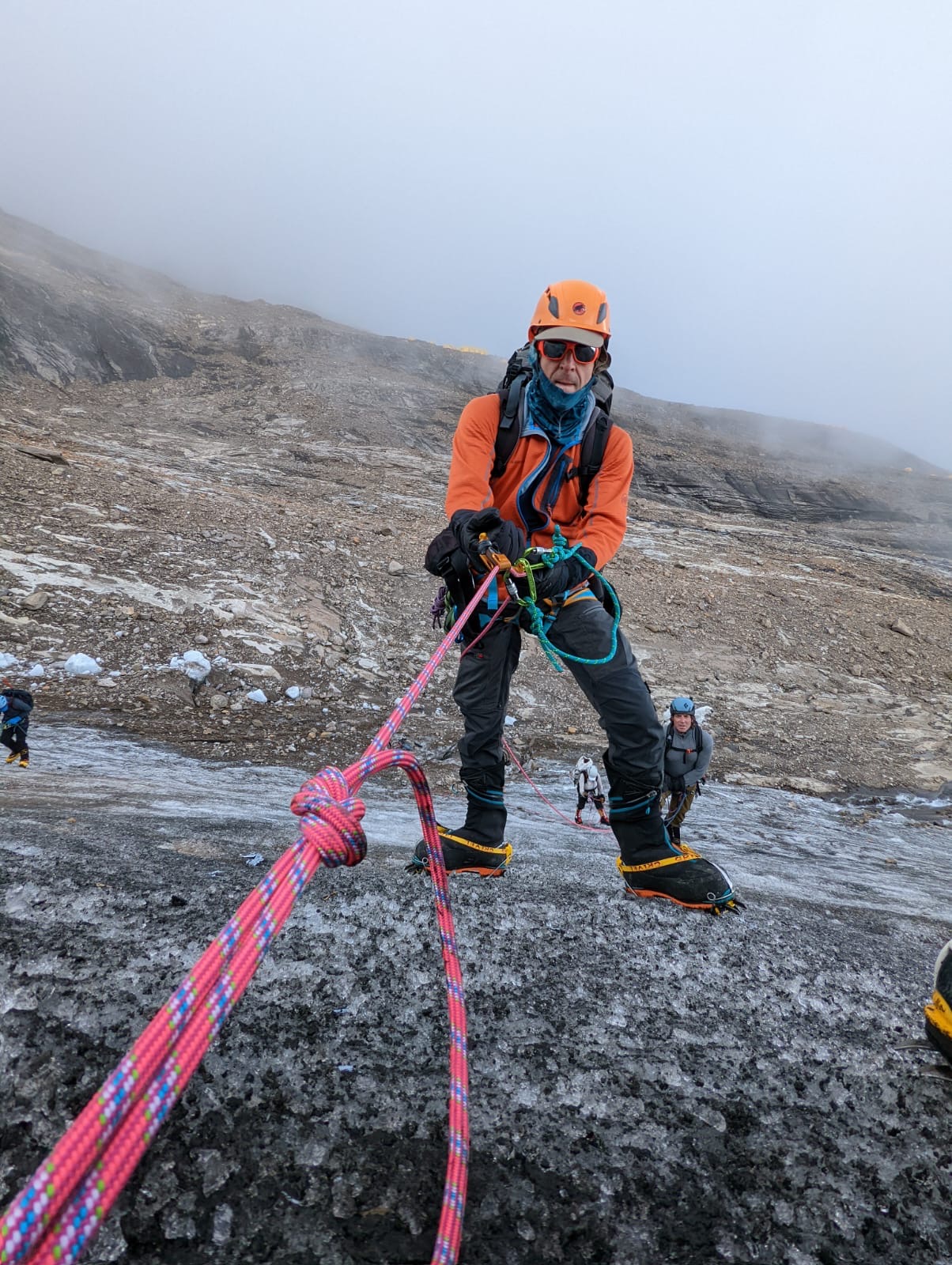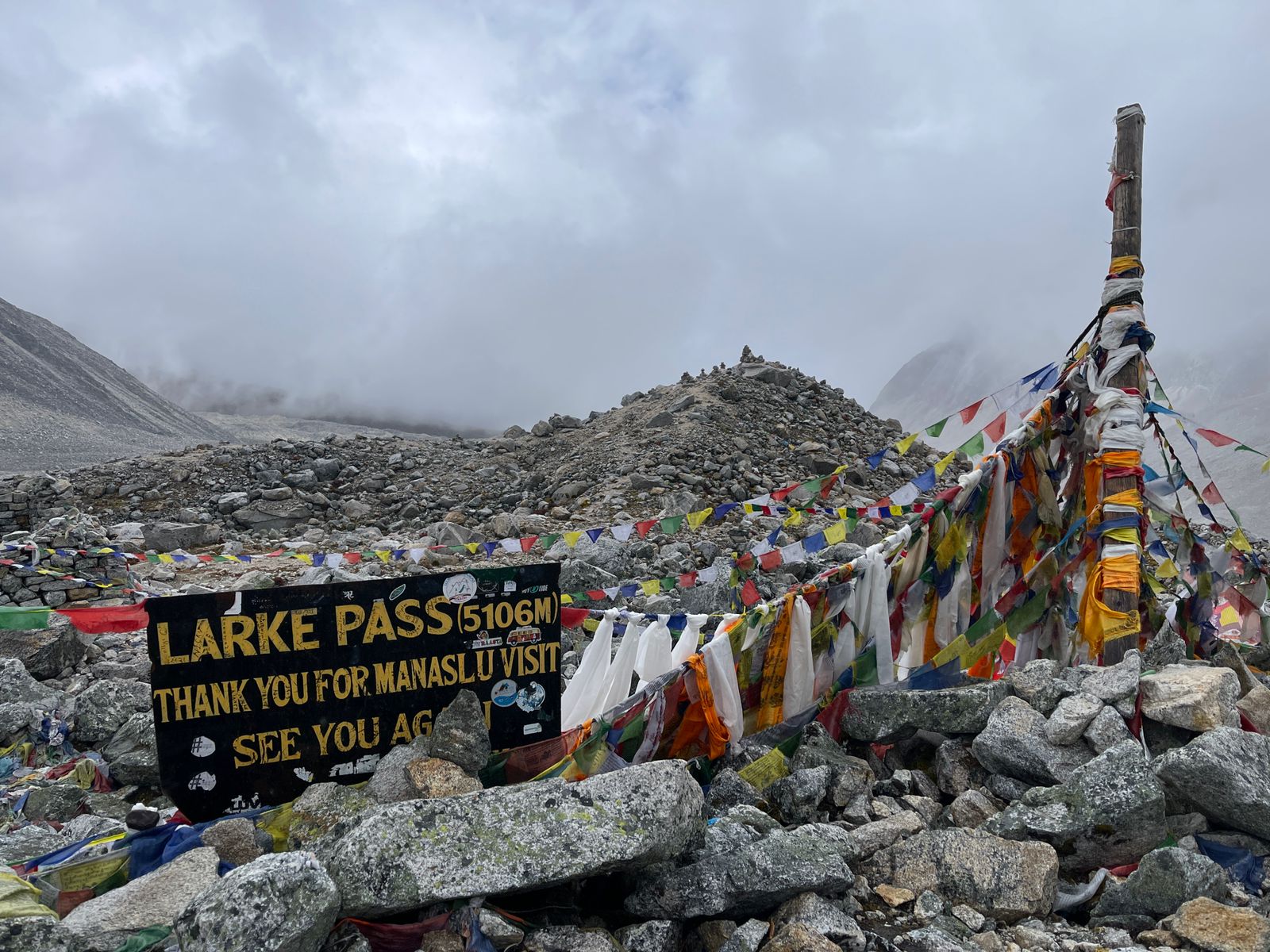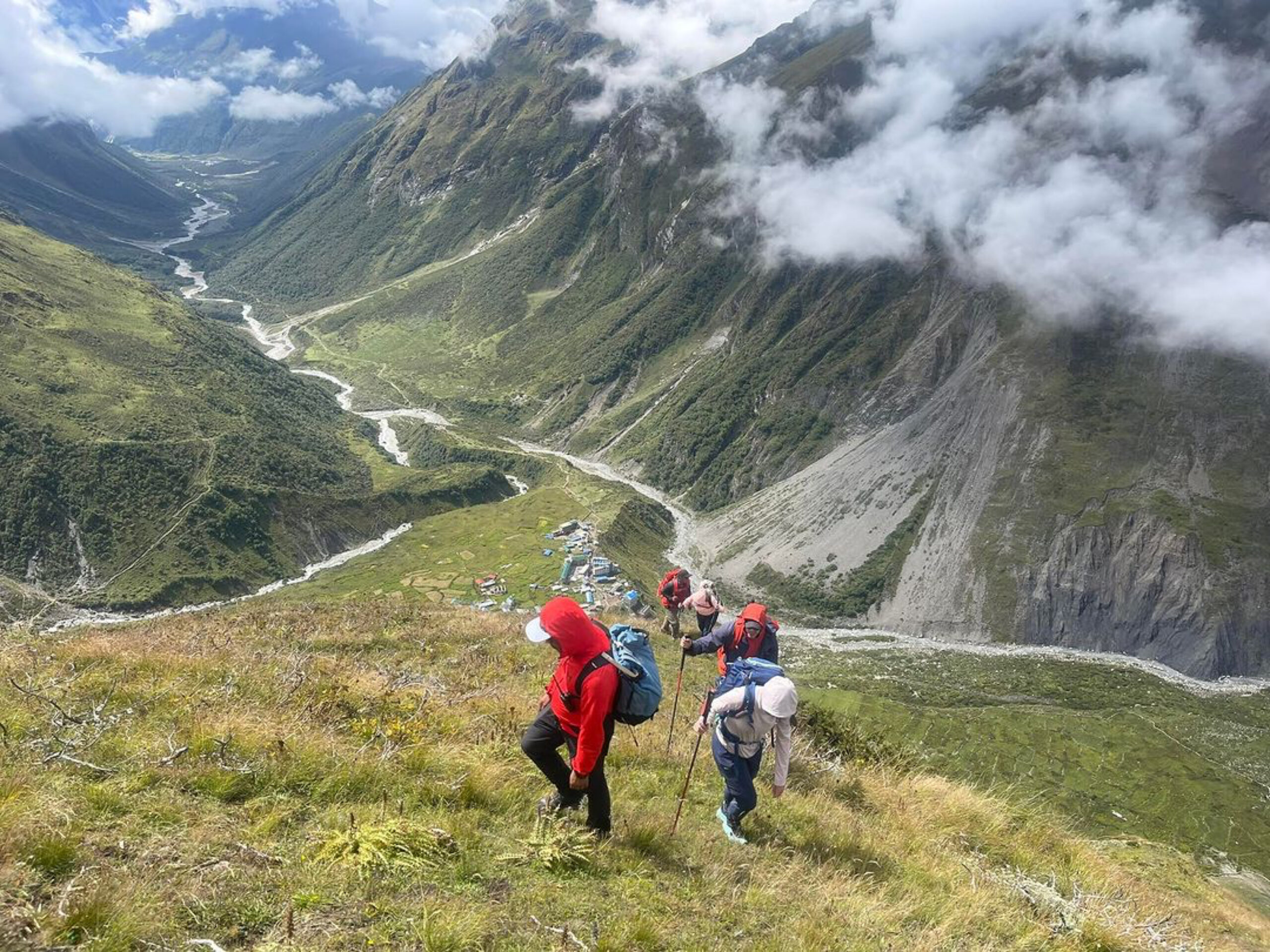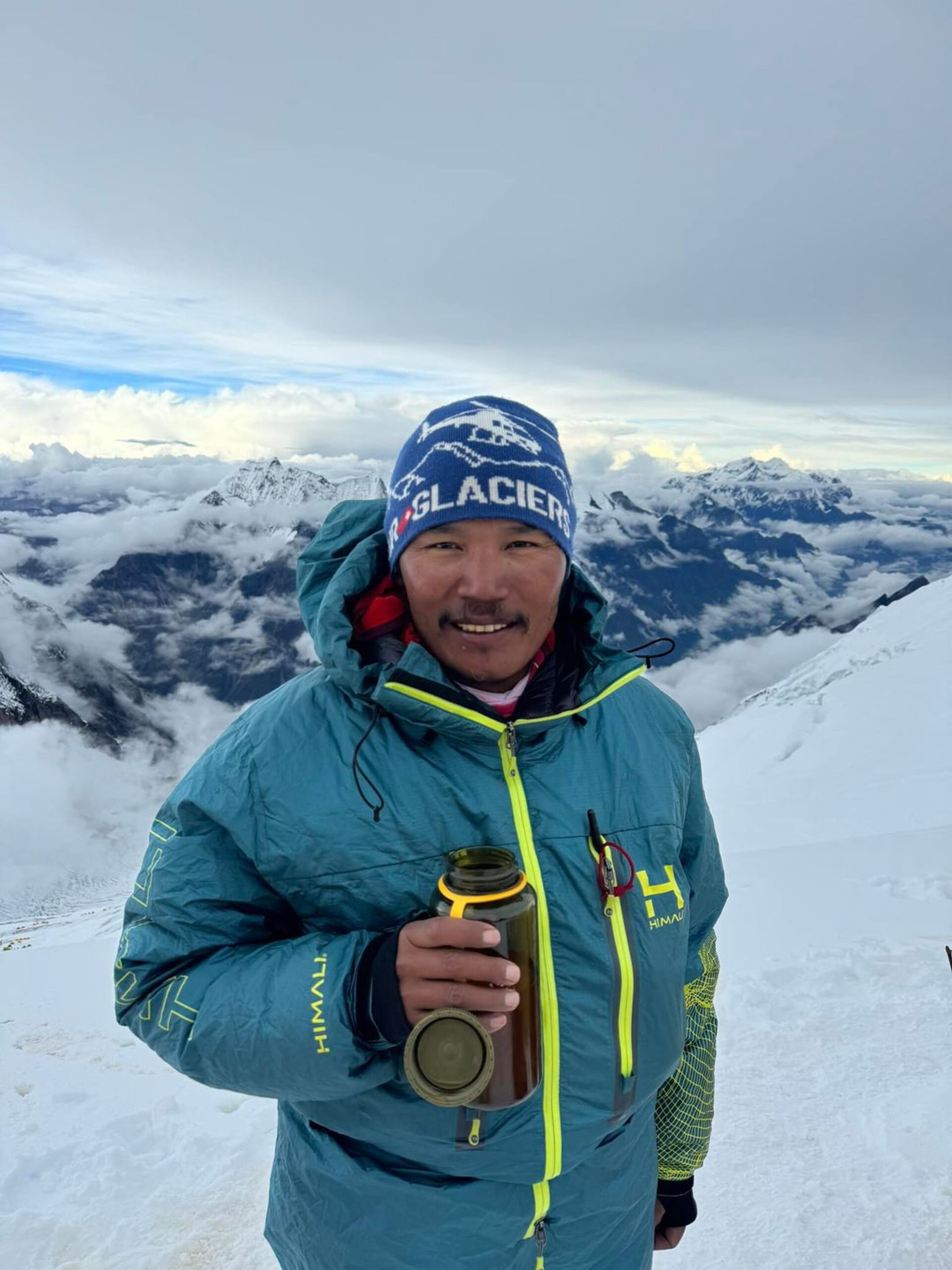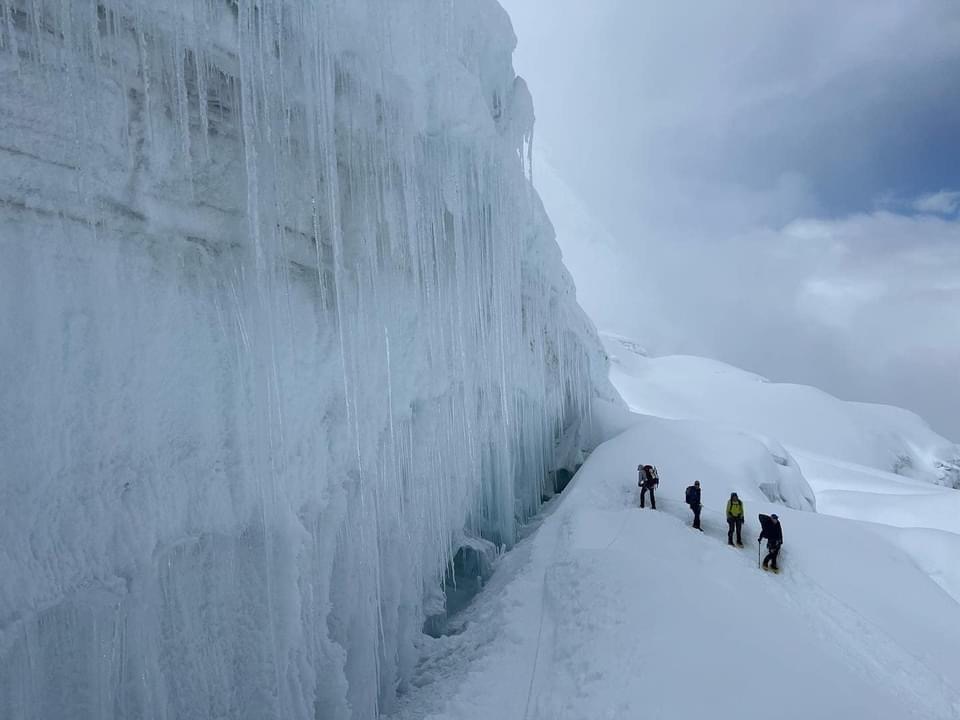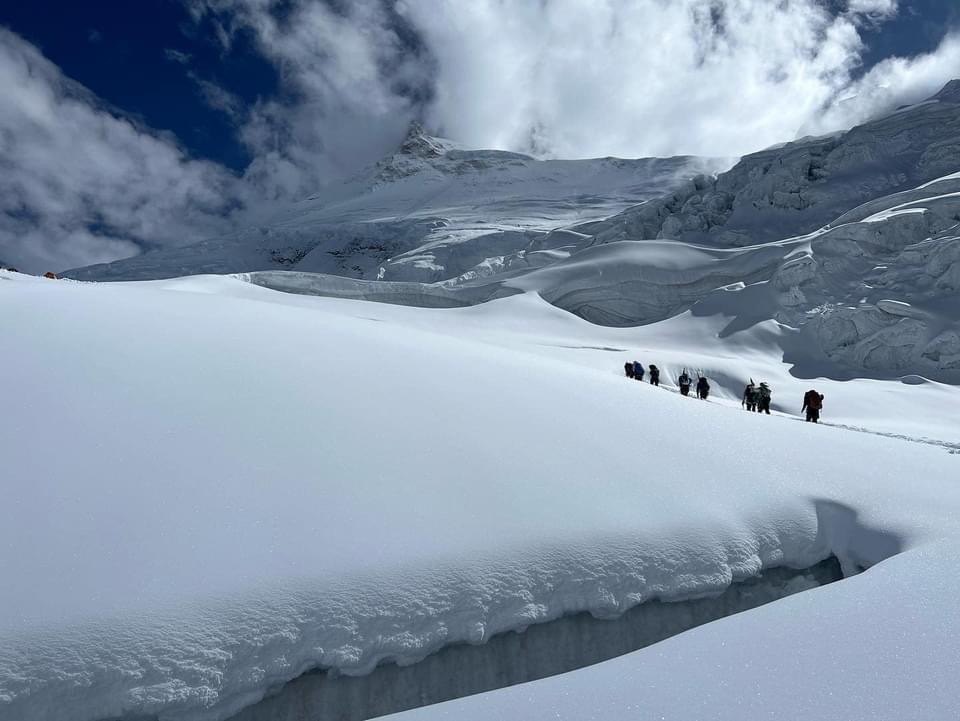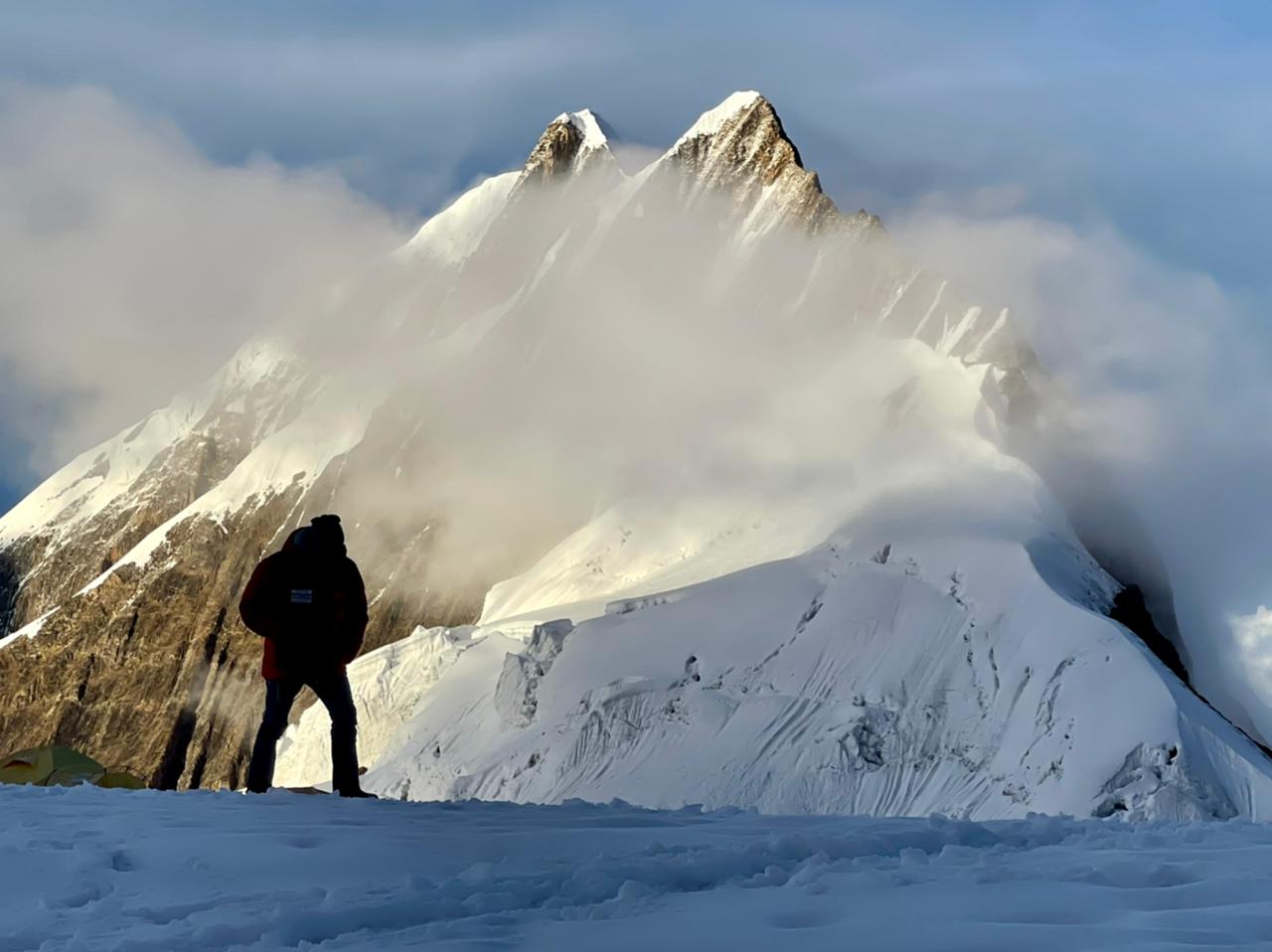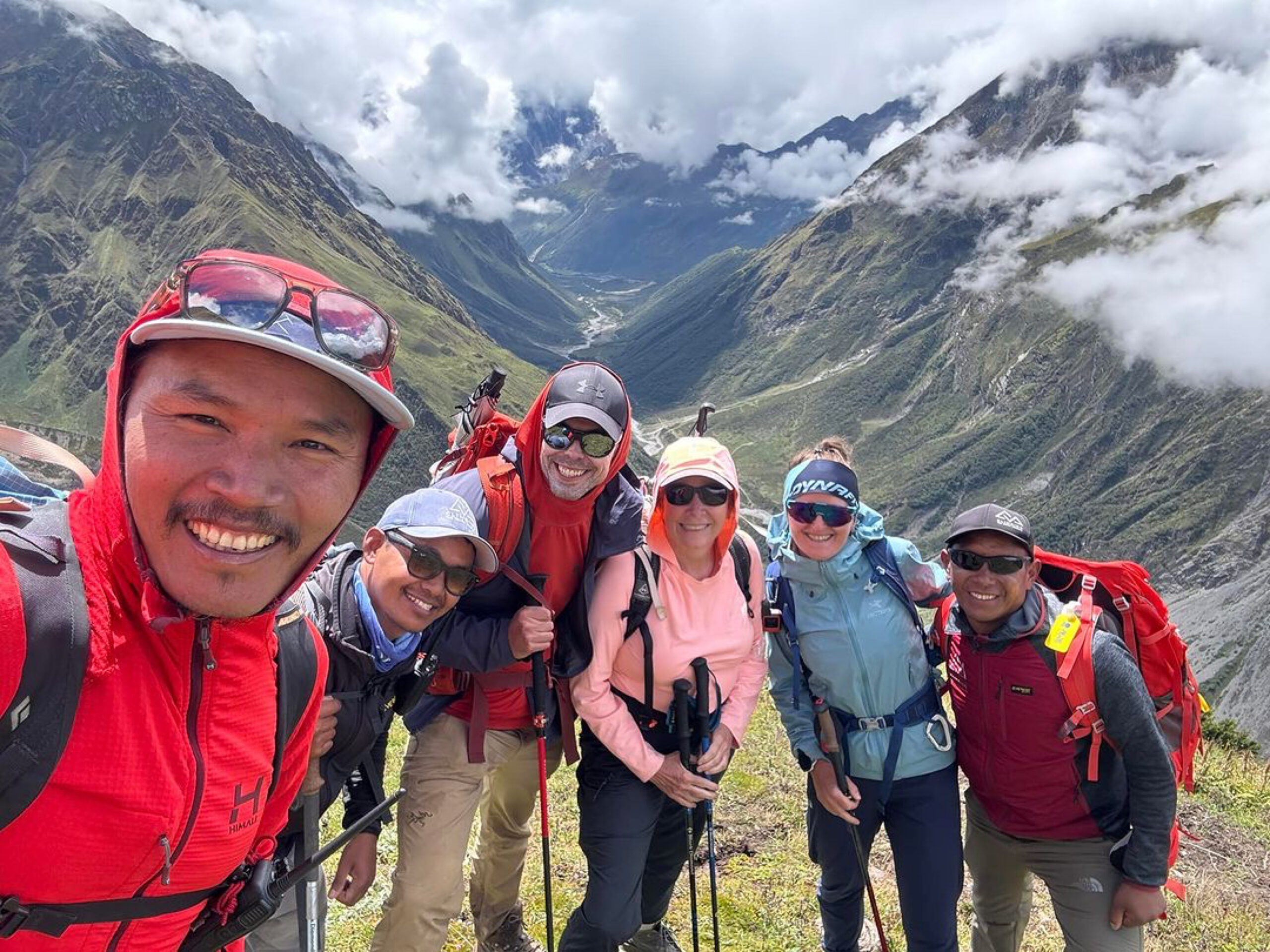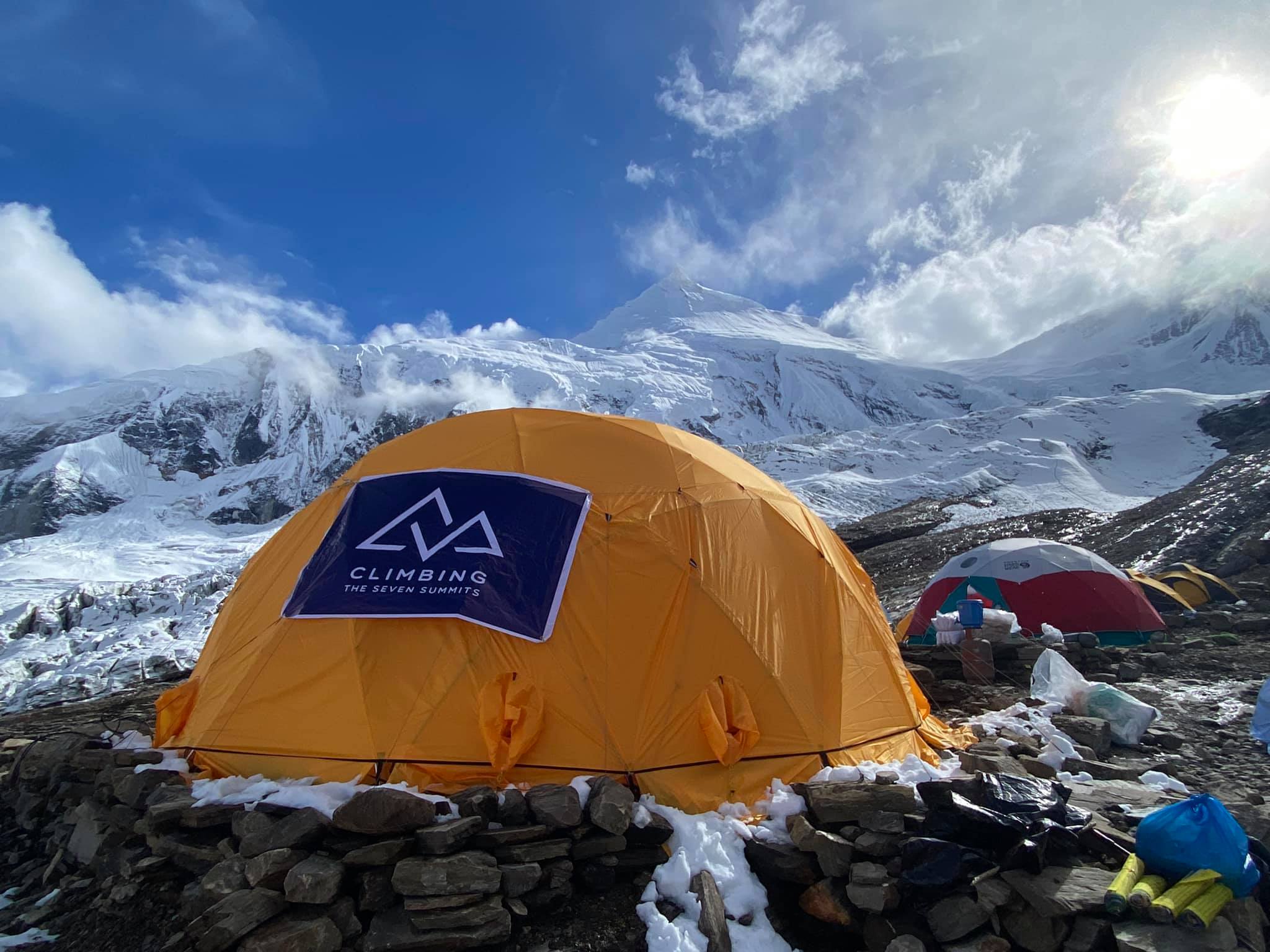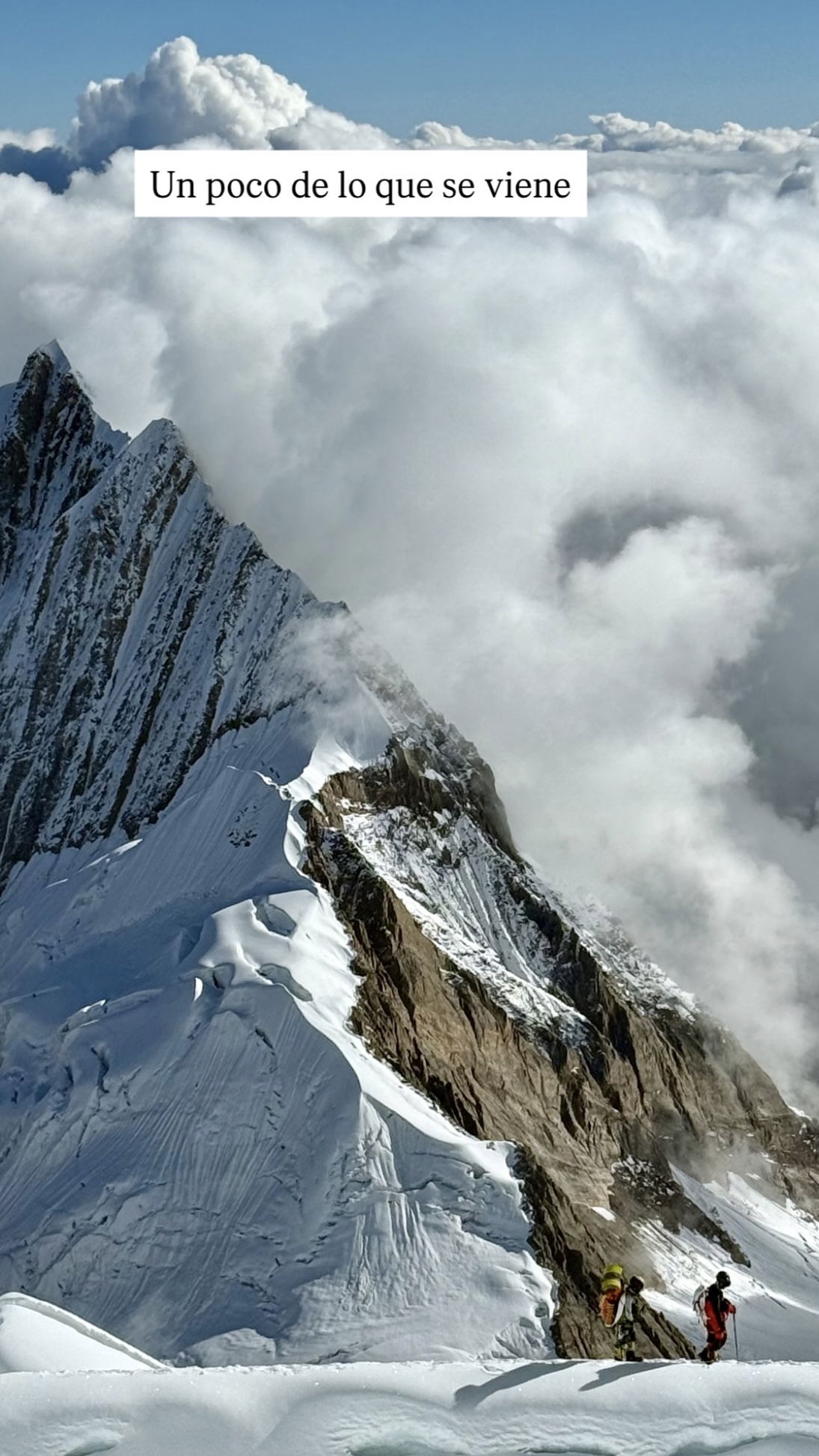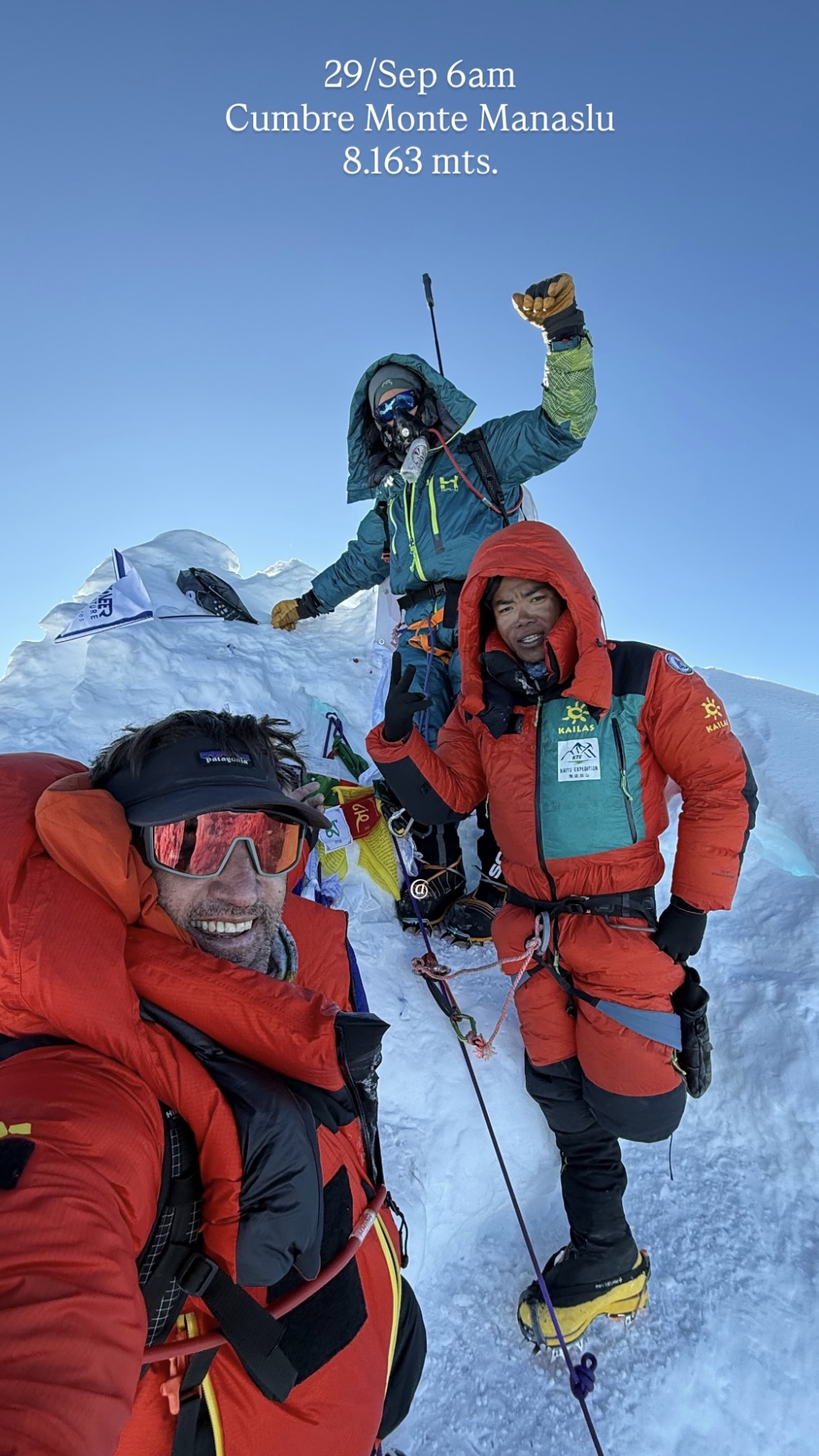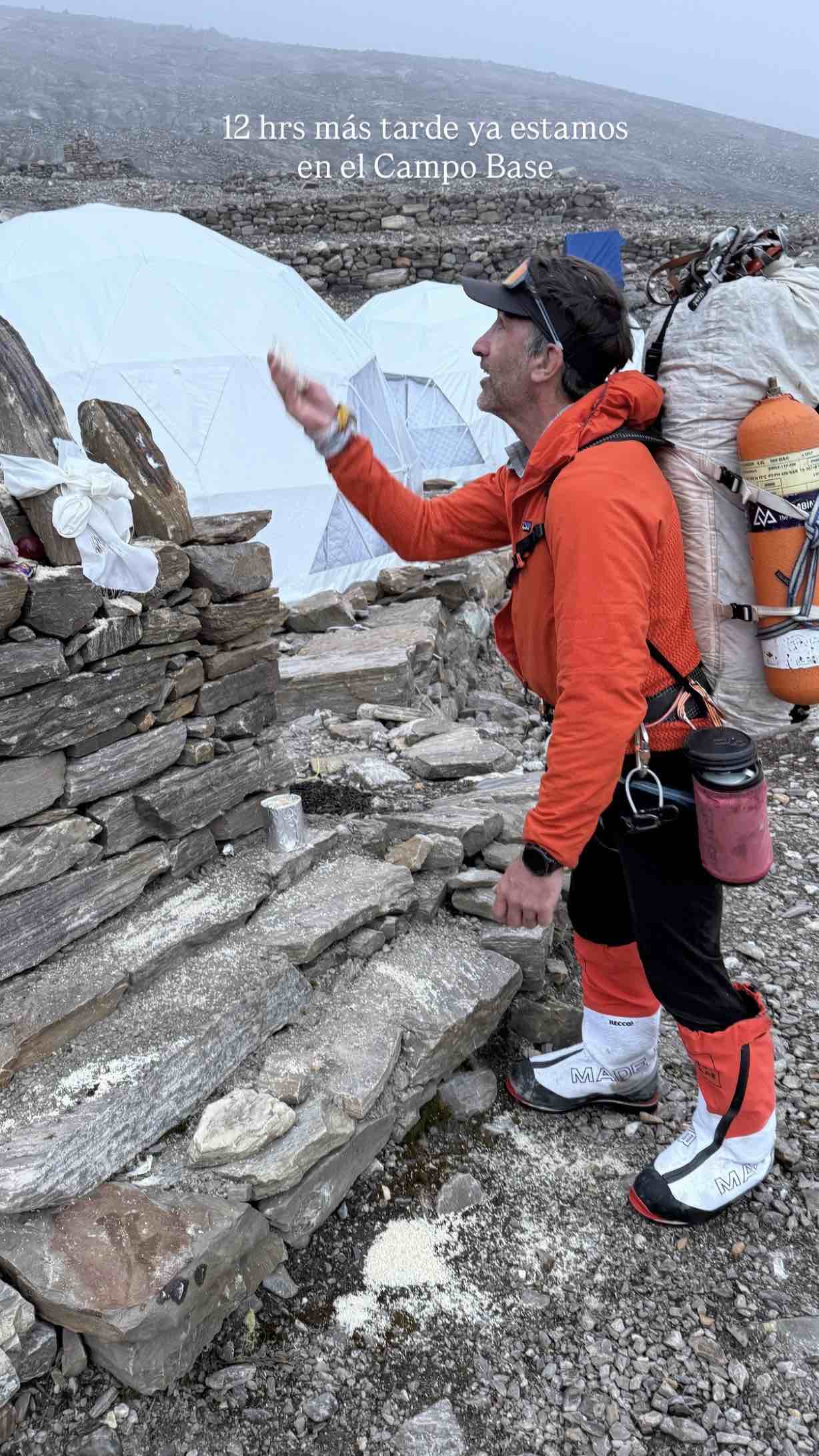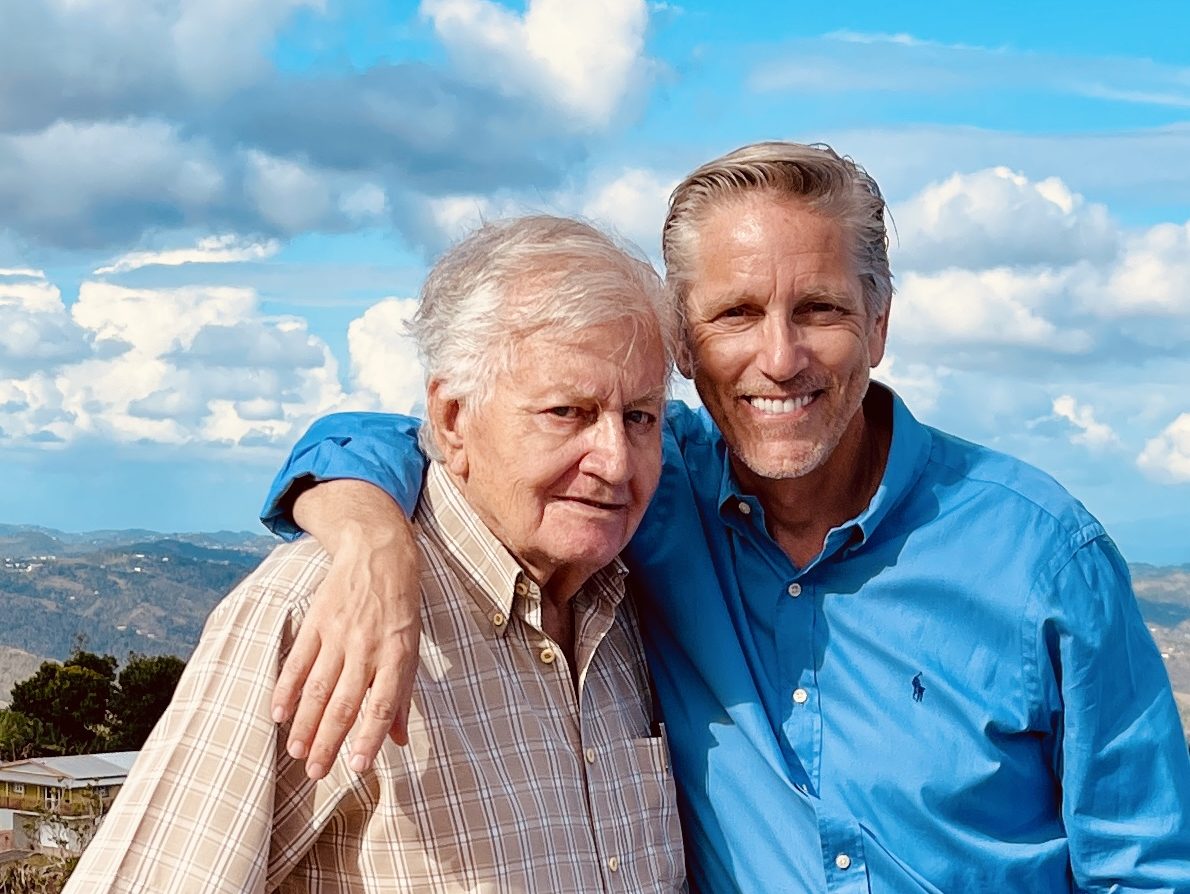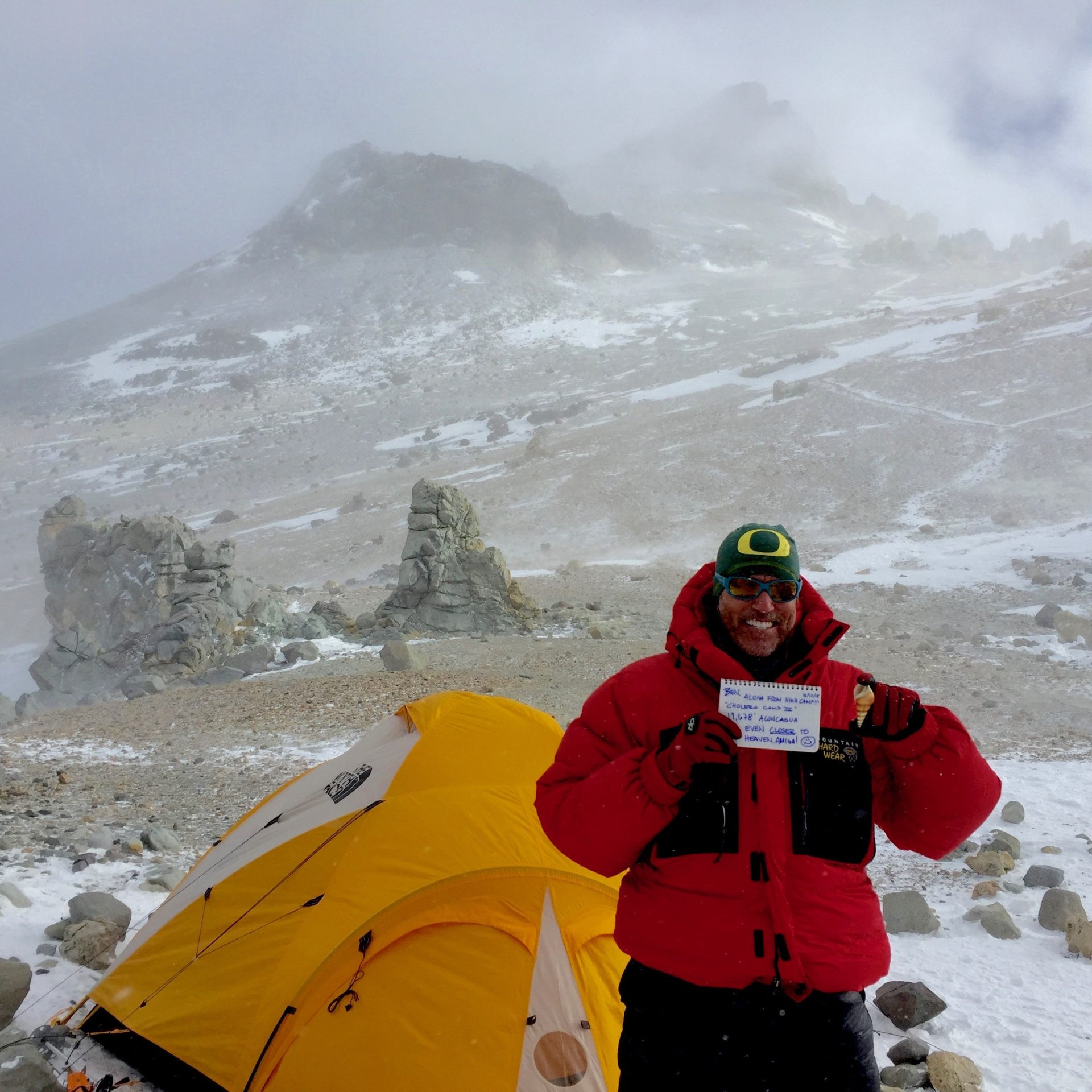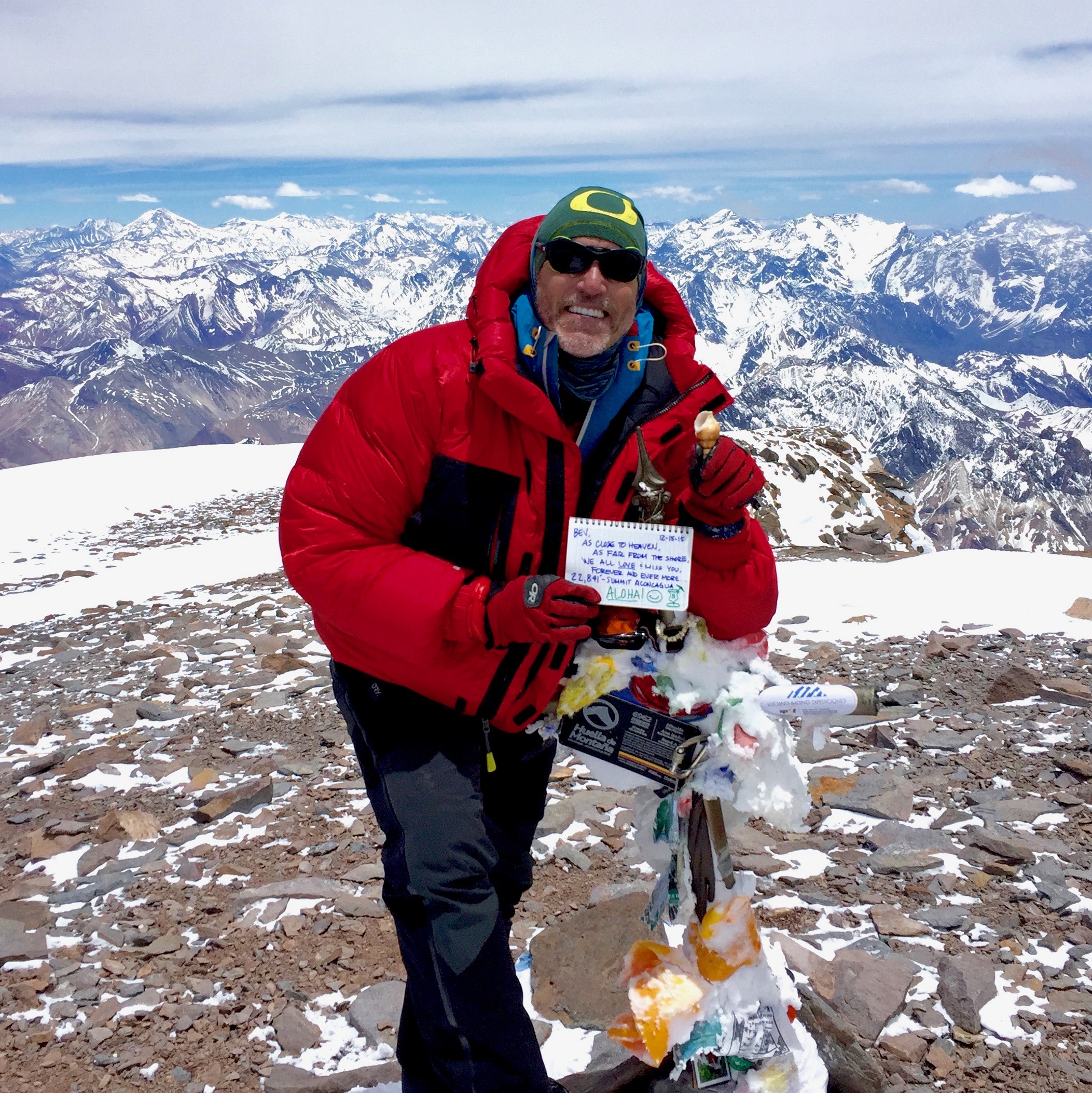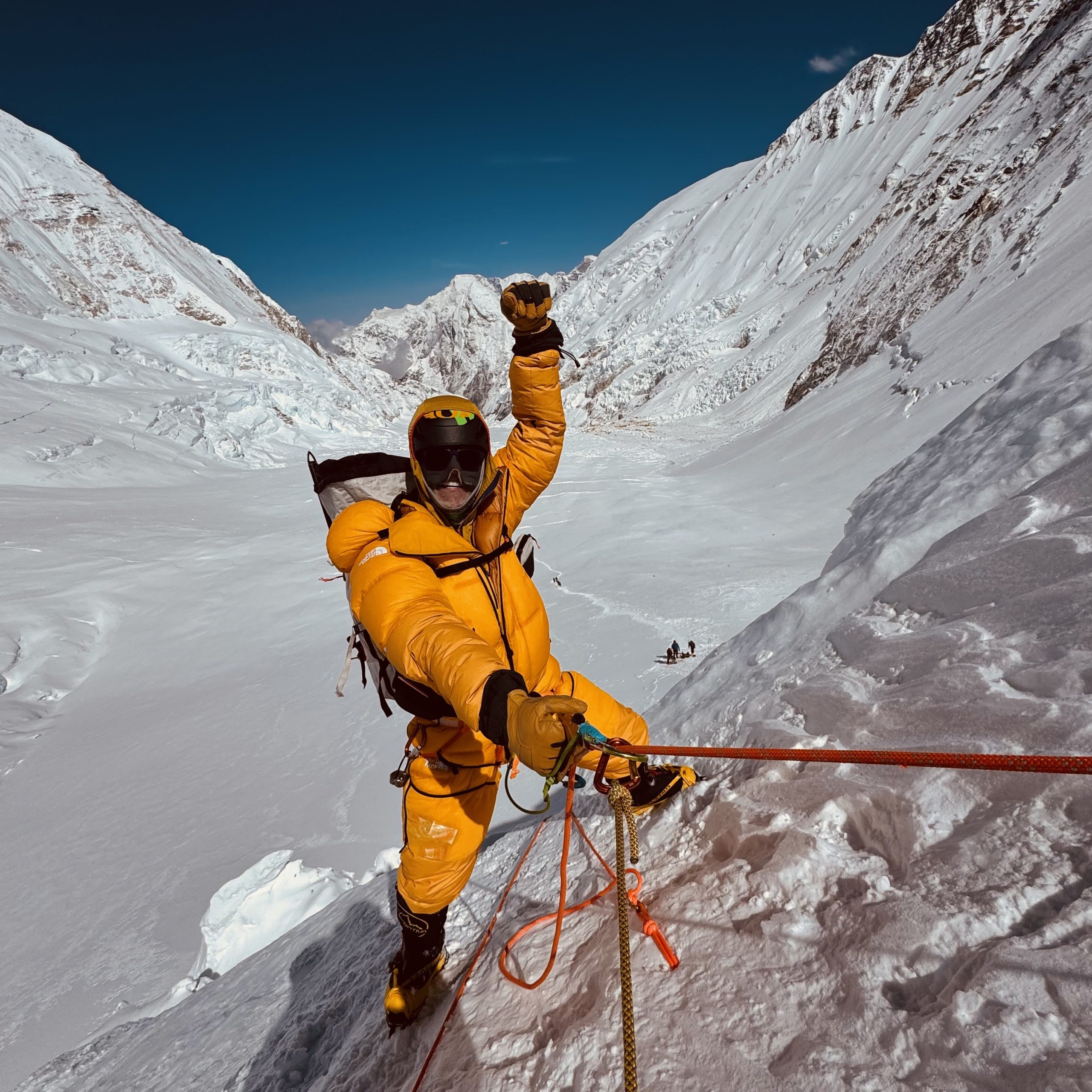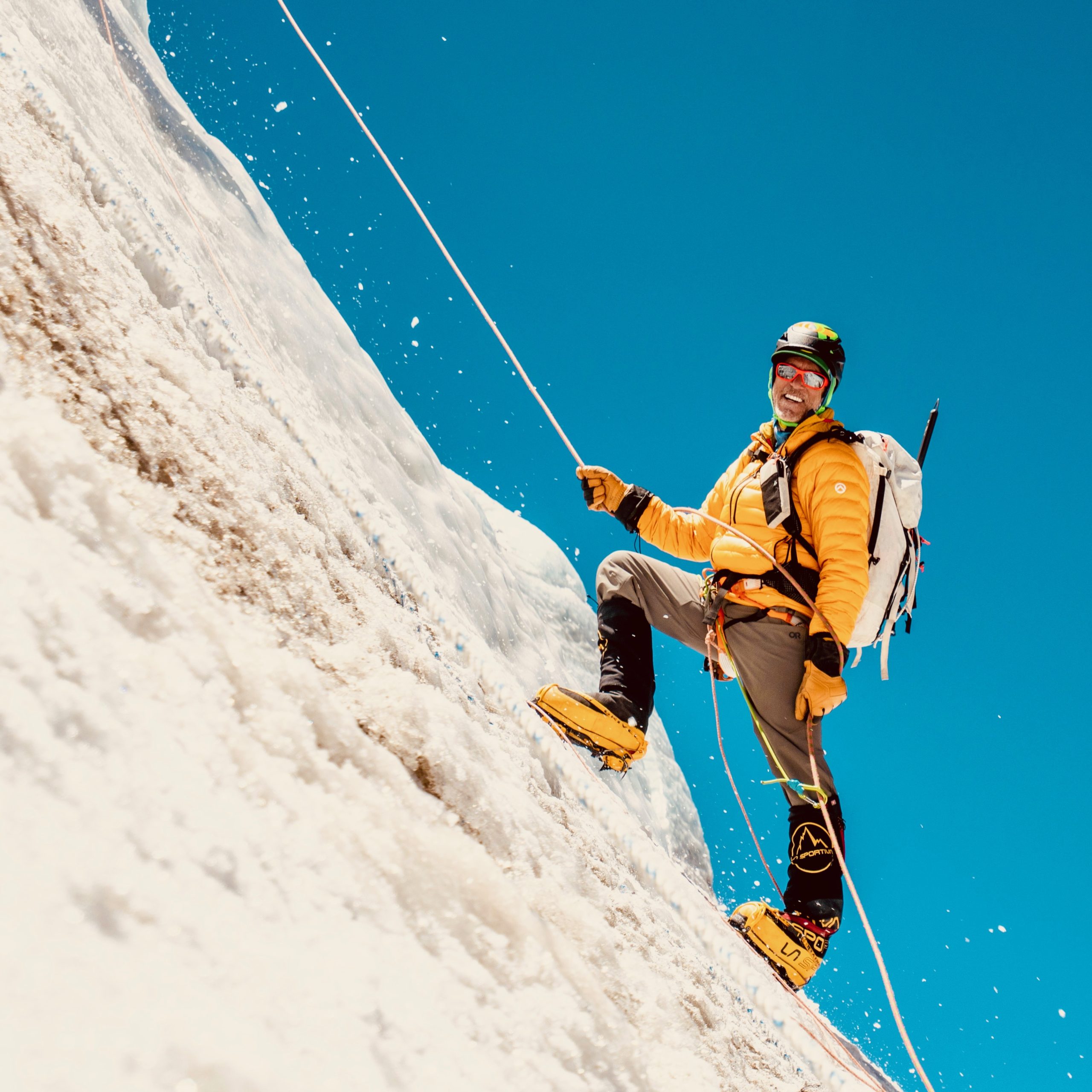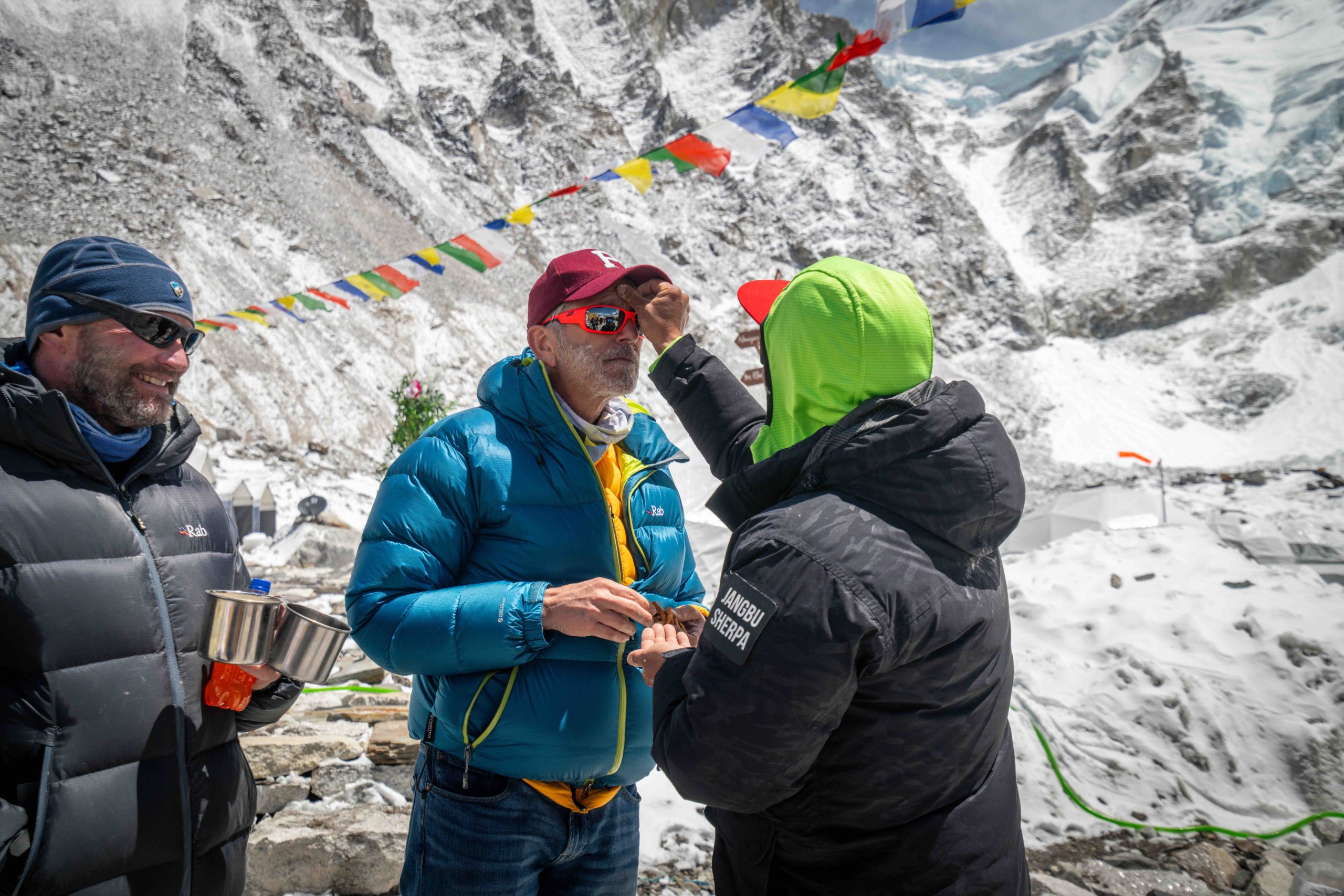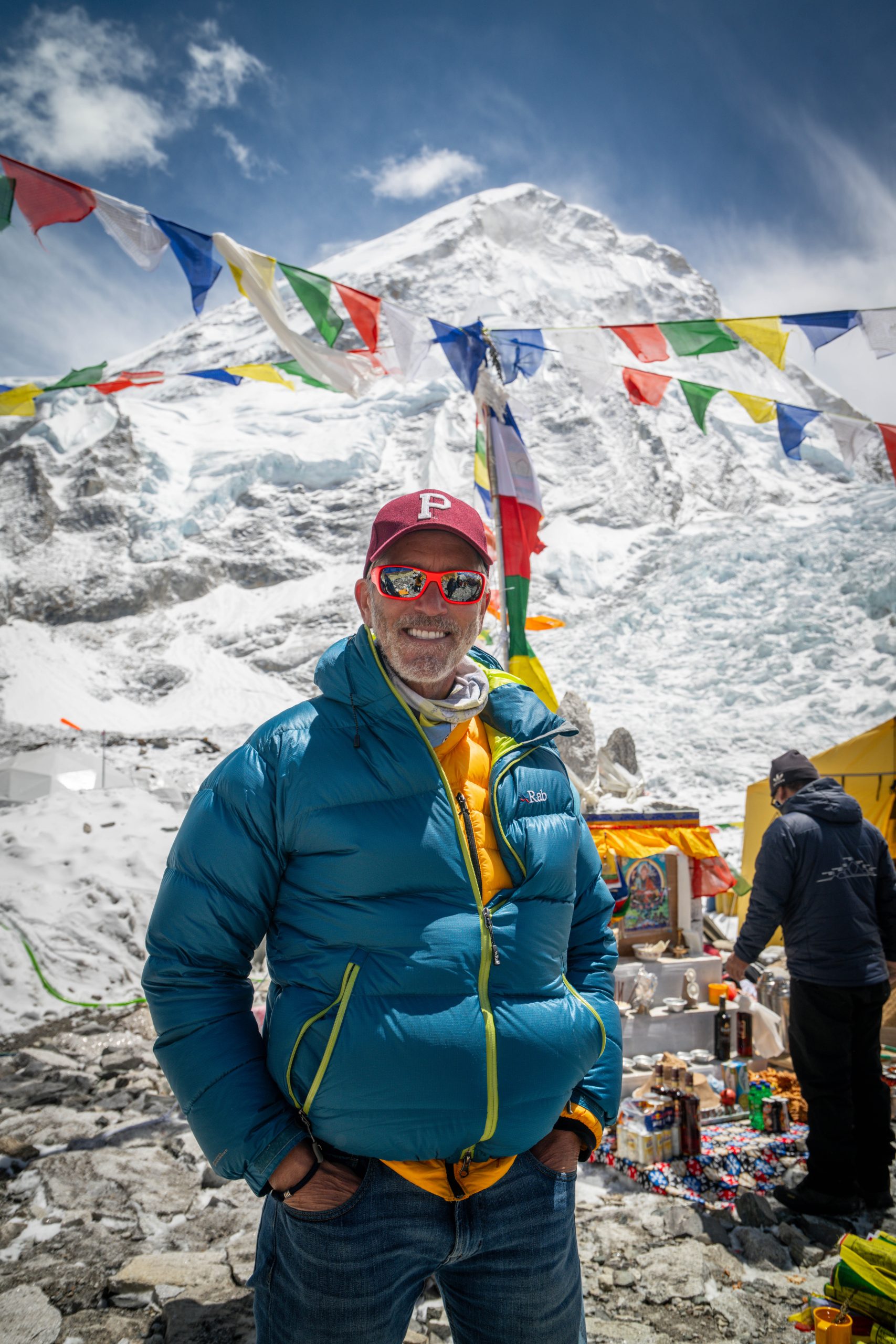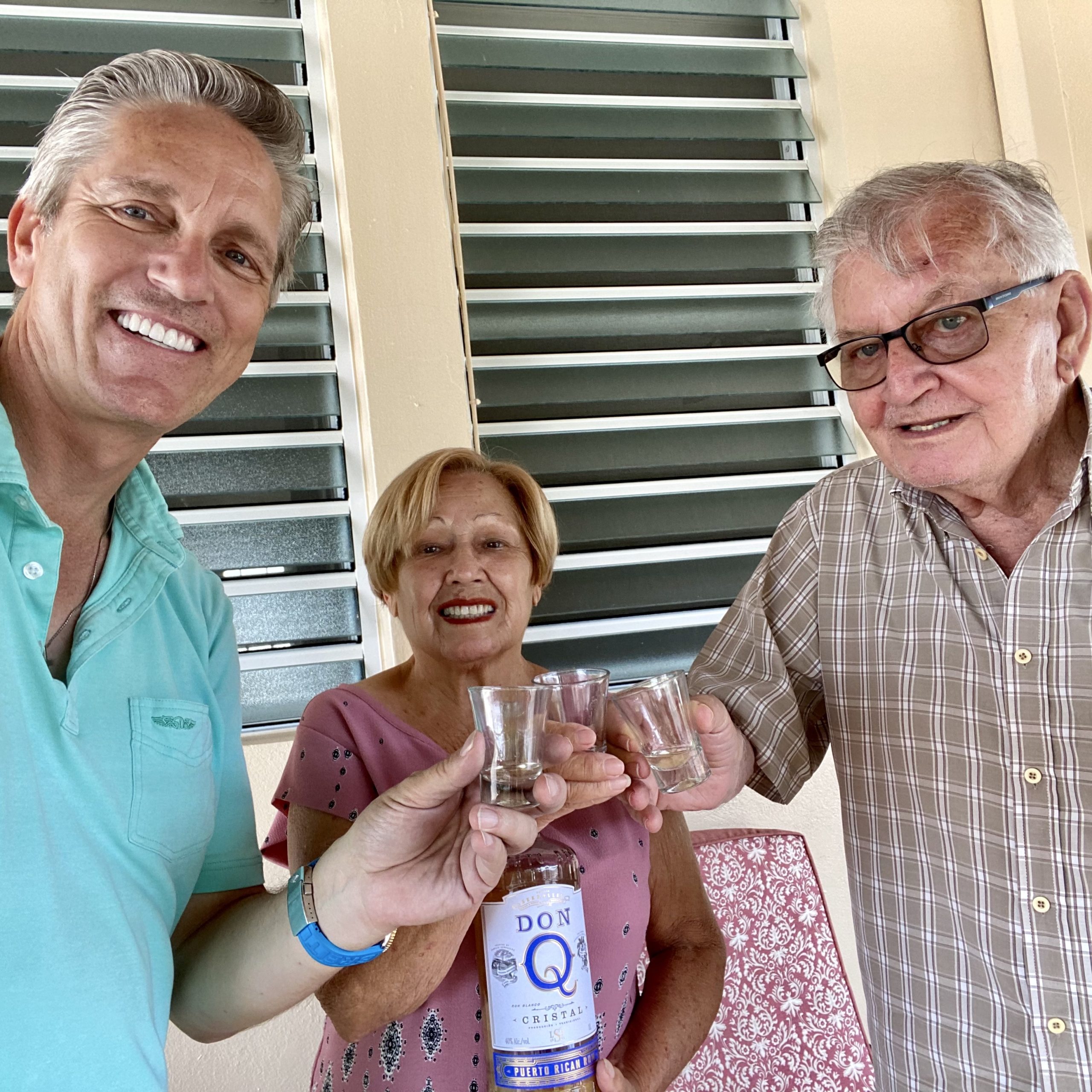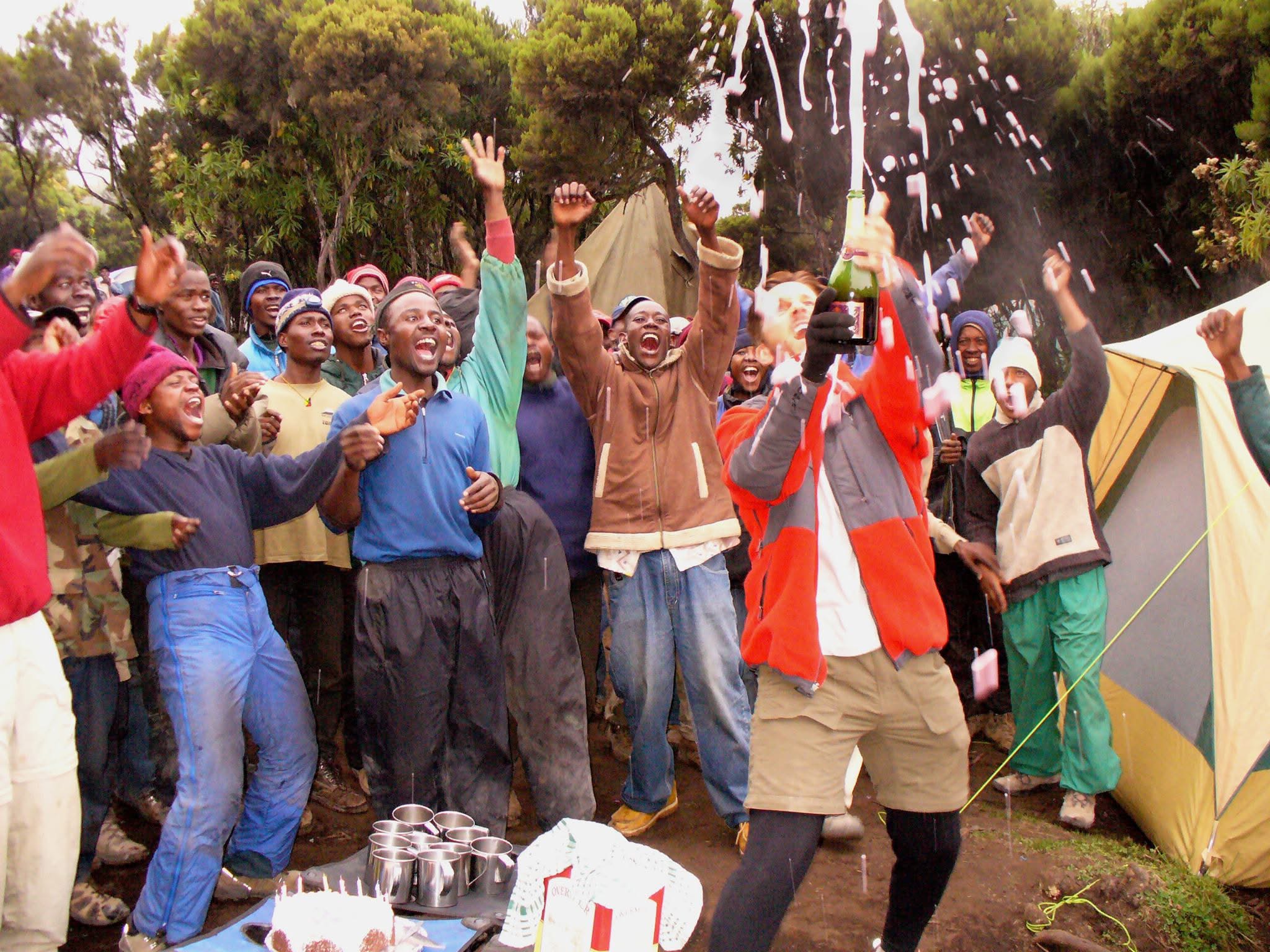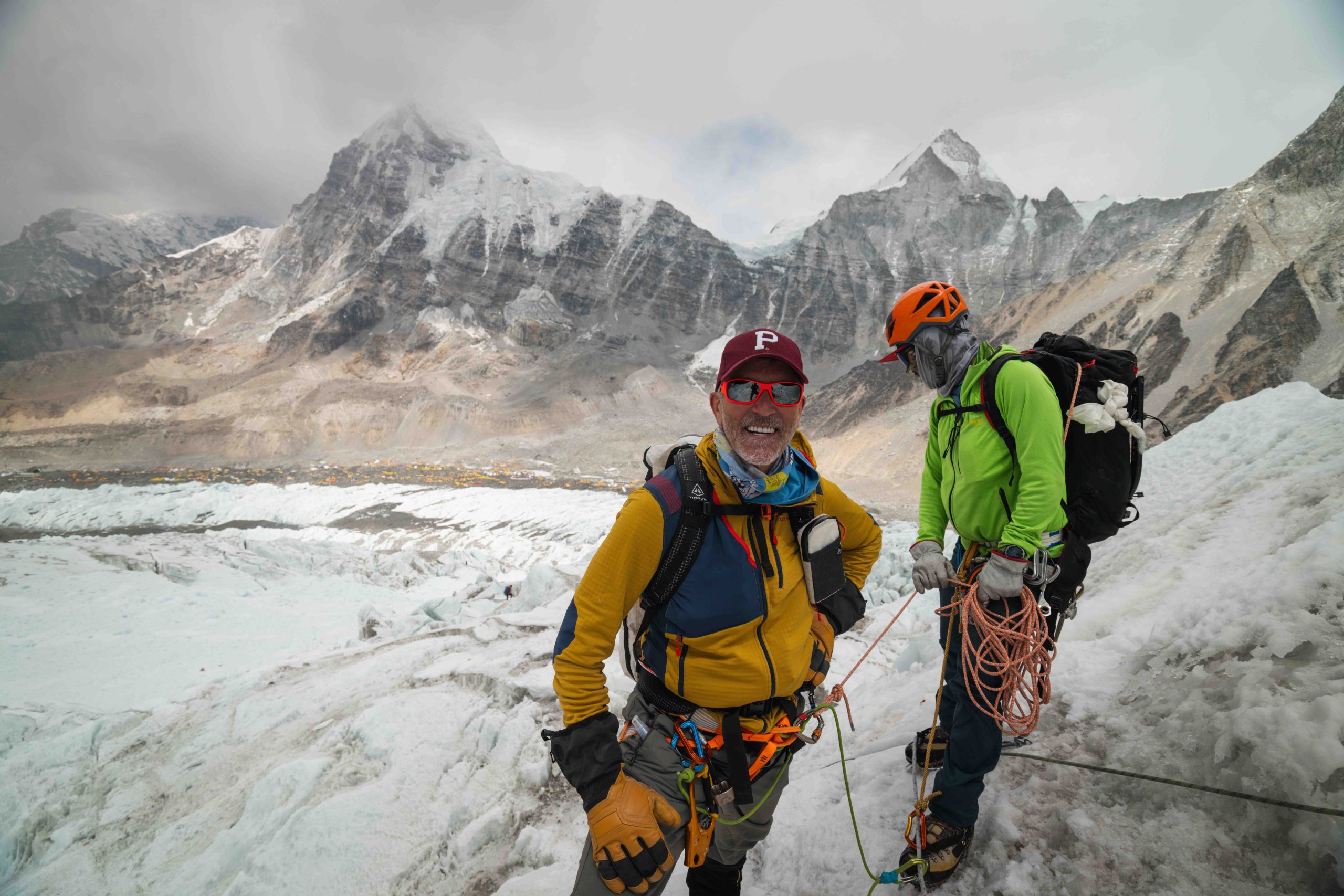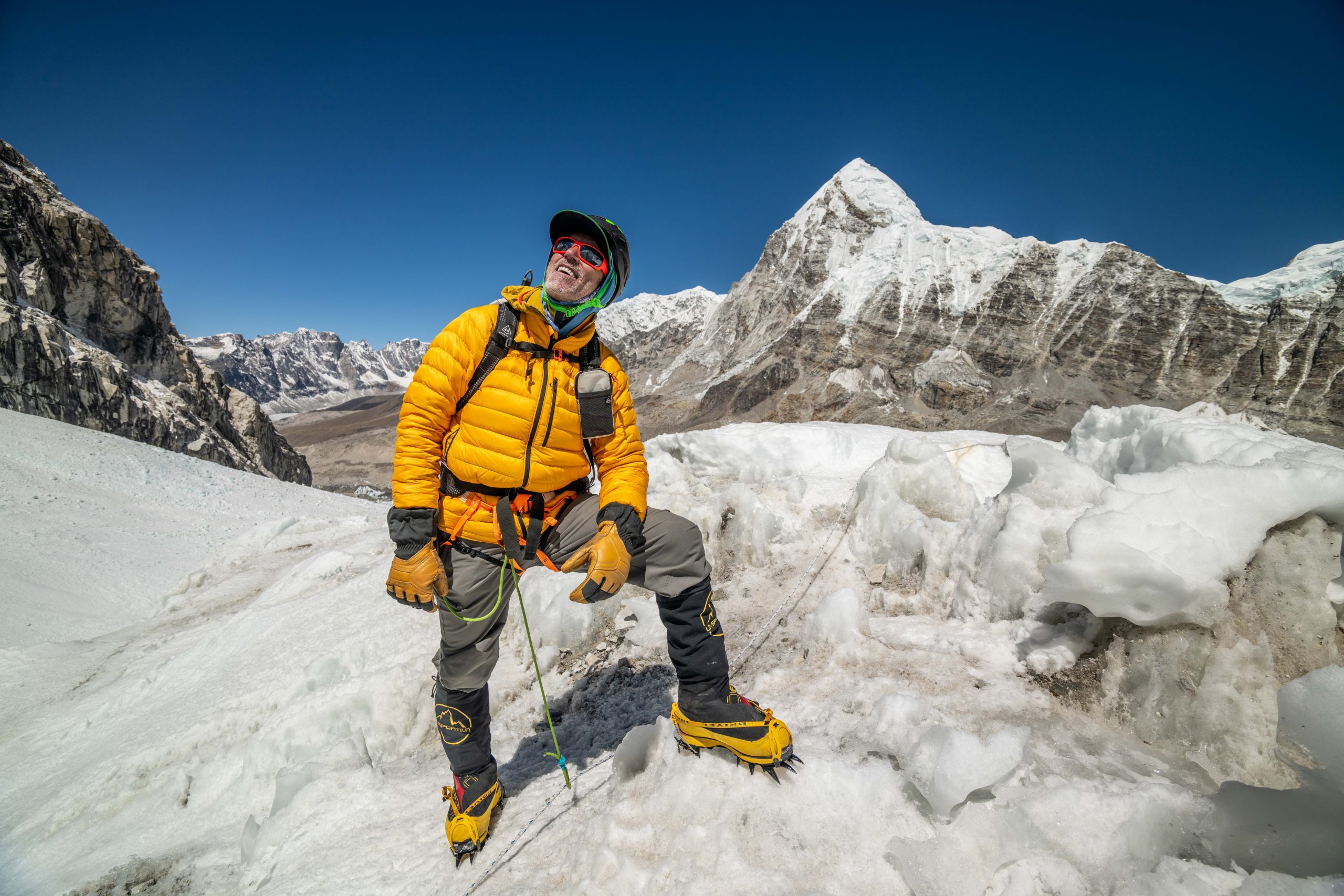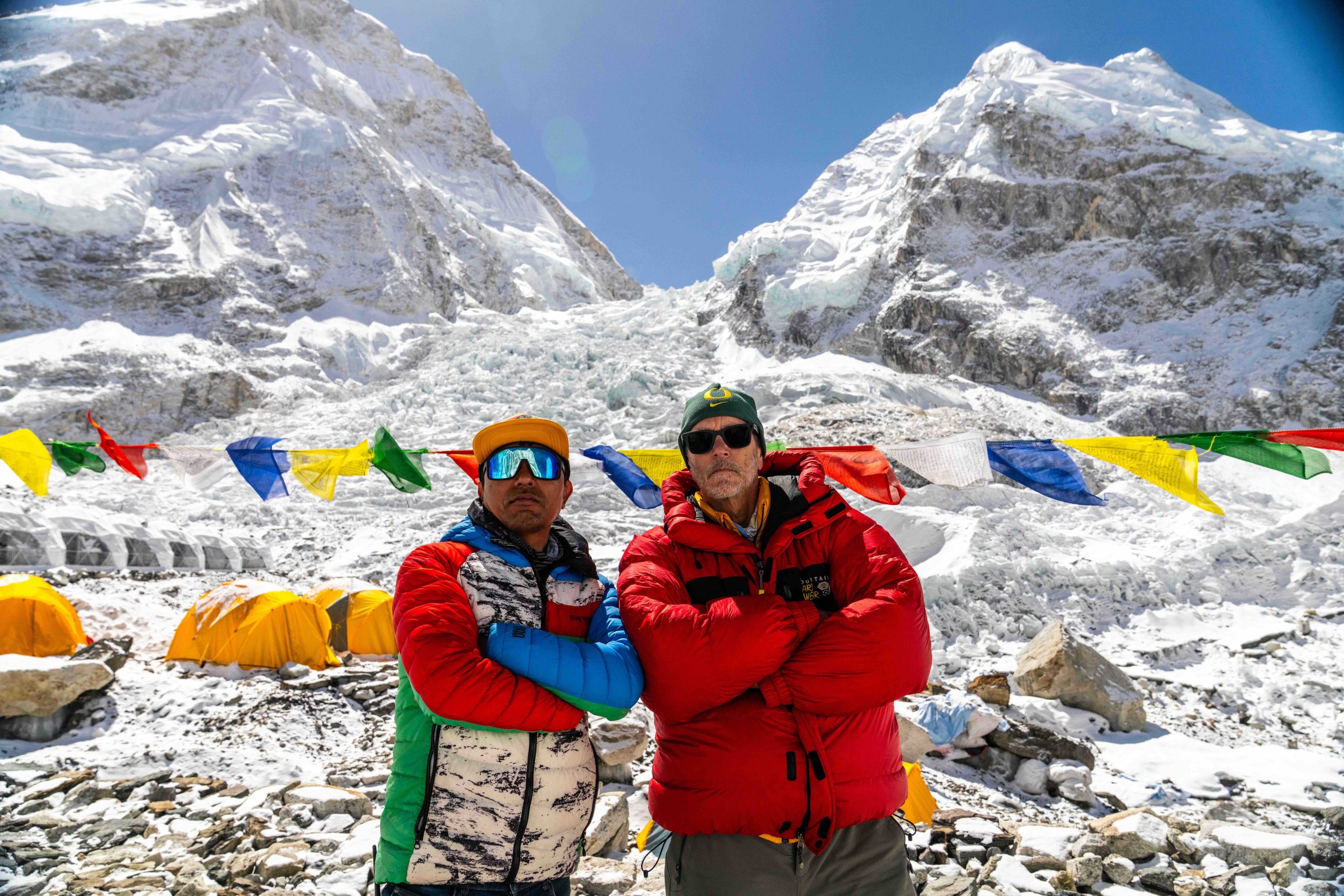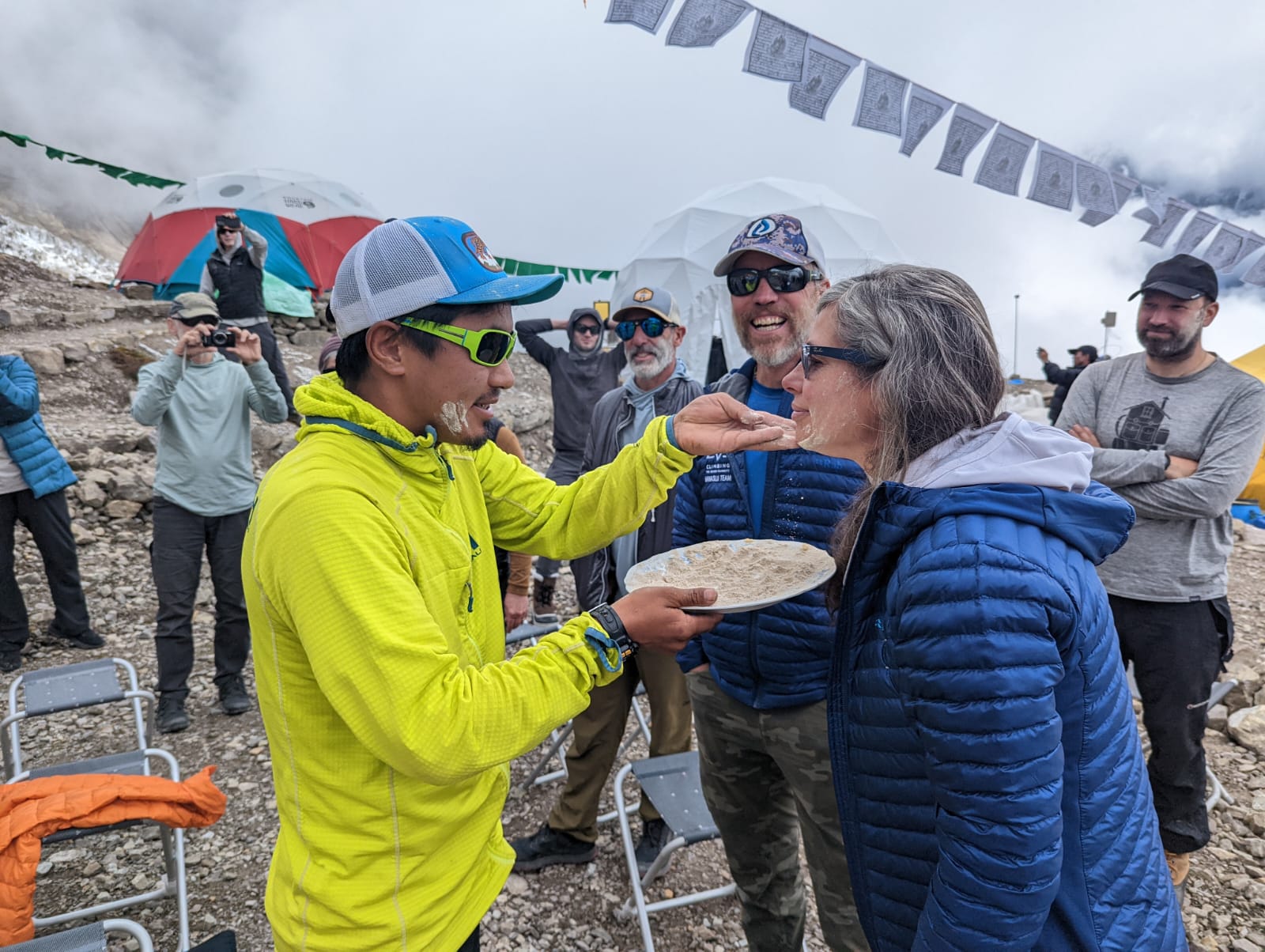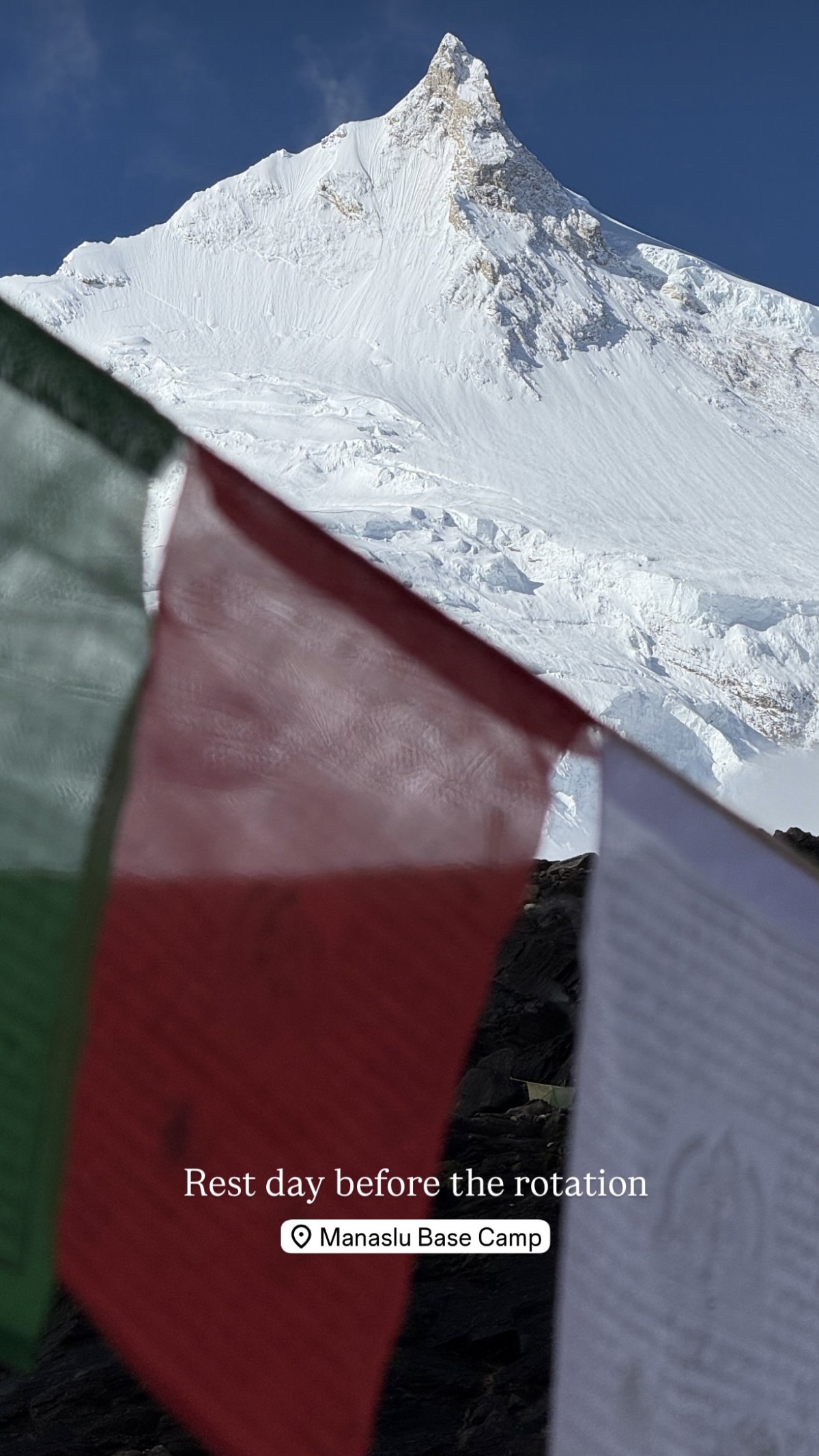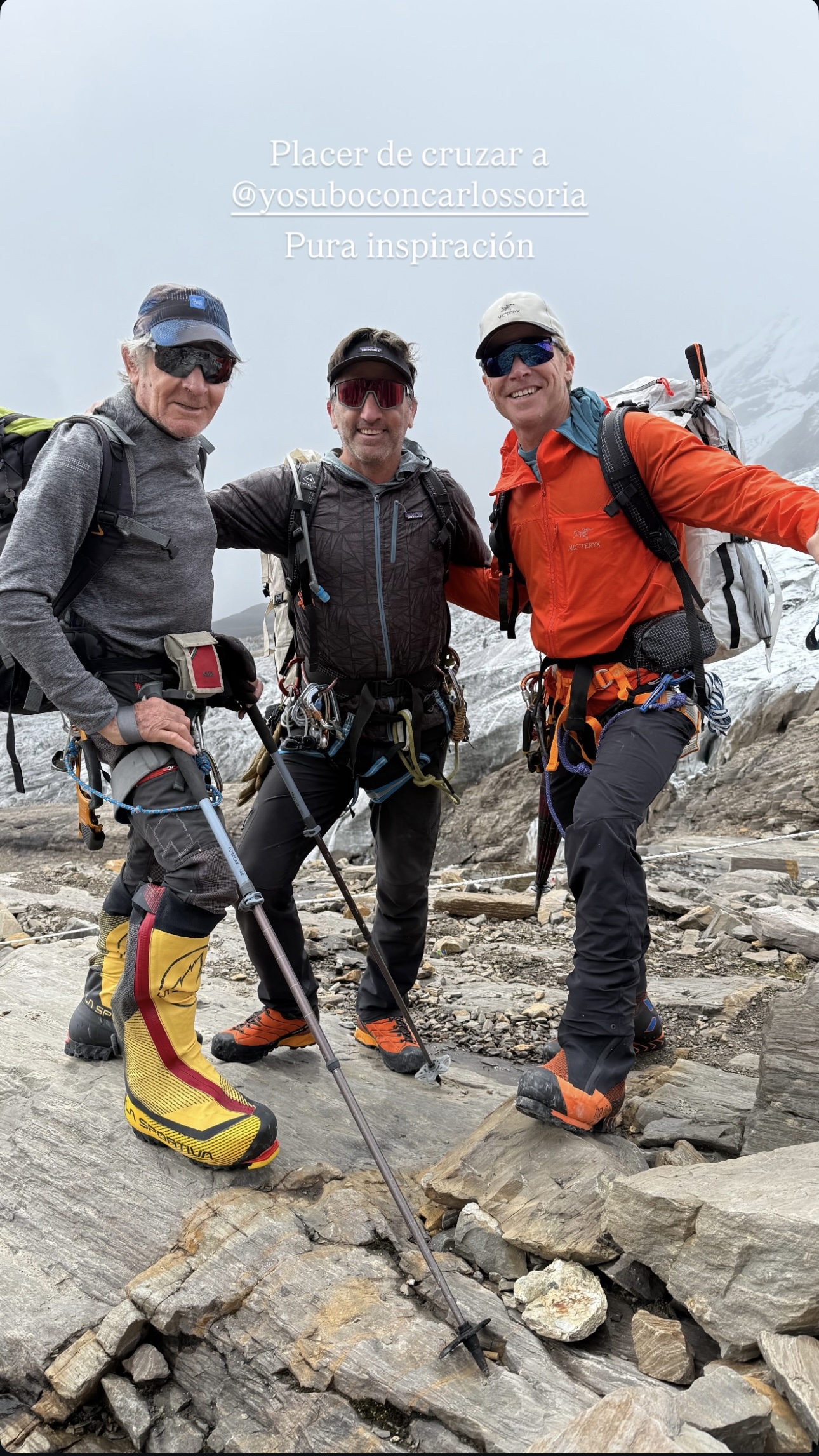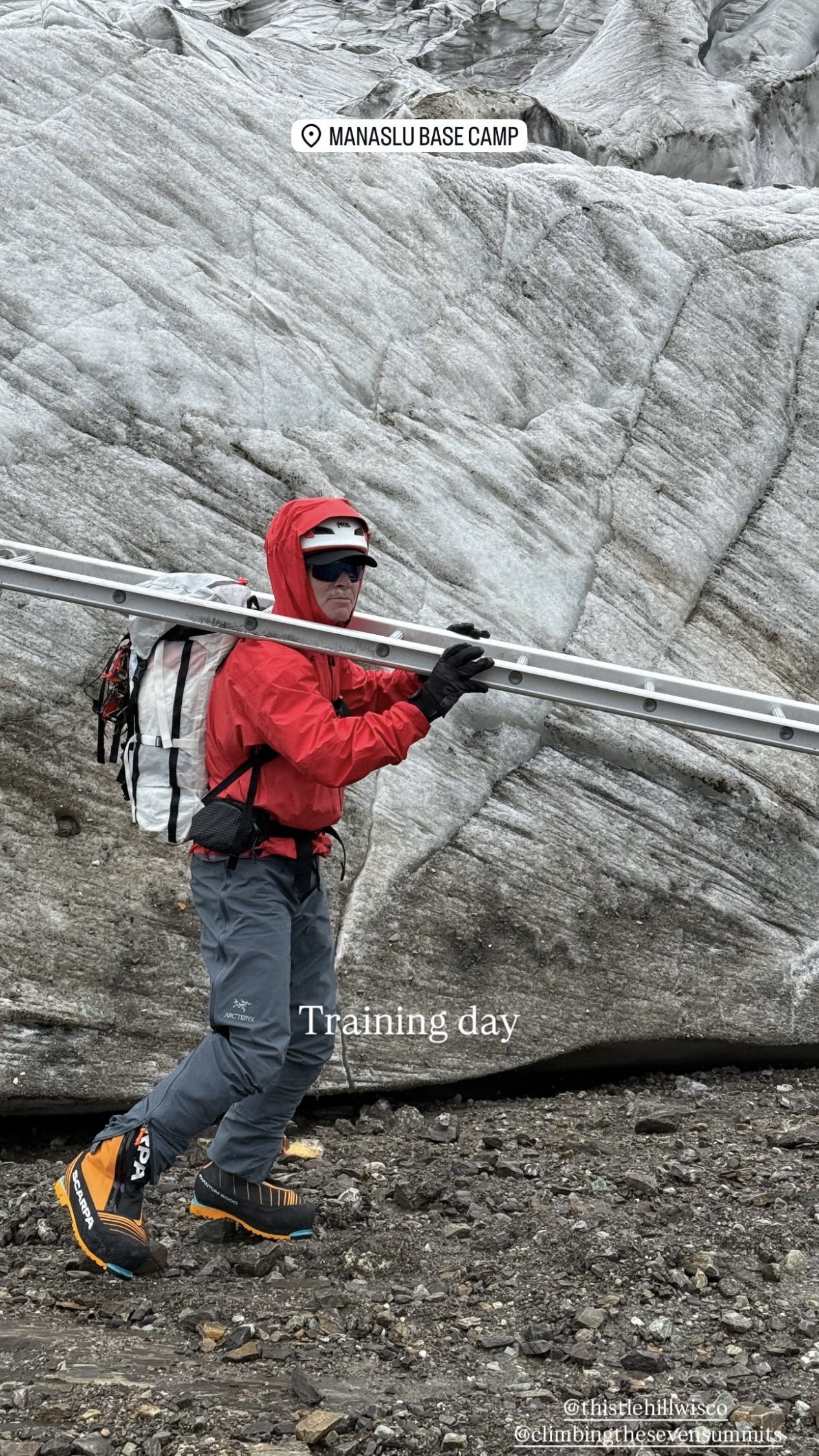Manaslu Speed Ascent
Manaslu Speed Ascent
Contact us for availability.
22-Day Speed Ascent: $37,995 USD
32-Day Speed Ascent: $35,995 USD
Pressed for time? Our Speed Ascent programs offer considerably shorter itineraries by utilizing pre-acclimatization technology in the comfort of your own home before departure.
Depending on your unique needs and schedule, we will tailor an itinerary to suit you.
22-Day Schedule: The more aggressive 22-Day schedule requires an extended pre-acclimatization period of 8 weeks at home using Hypoxico systems before flying directly to Manaslu Base Camp.
32-Day Schedule: Our traditional Speed Ascent program utilizes a more comfortable 6-week pre-acclimatization period using the Hypoxico systems before flying directly to Manaslu Base Camp.
Both itineraries include:
- One-way helicopter transfer from Kathmandu to Base Camp
- Hypoxico pre-acclimatization chamber for 6 or 8 weeks before the climb
- Single rooming in Kathmandu
This expedition provides full logistics, food, support, oxygen, and expert guidance for a summit attempt on Manaslu, the world’s 8th-tallest mountain. Our seasoned Sherpa team establishes and maintains the route, fixes lines, and stocks each camp with the equipment and supplies you’ll need, allowing you to climb efficiently and focus on the ascent itself. On summit day, each climber is paired one-on-one with a personal Sherpa alongside your Western guide—an exceptional level of support that ensures both confidence and safety at high altitude.
CTSS prides itself on being at the cutting edge of new approaches to mountain climbing that enhance safety, success, and efficiency. Mike Hamill has worked with clients for years, using portable altitude chambers to pre-acclimate their bodies to the rarefied air found at altitude, with great success. Through the Speed Ascents Program, we work with you to utilize specially designed altitude chambers in the comfort of your own bed, allowing you to spend more time at home with your loved ones and less time away on expeditions. Additionally, reducing the time spent in harm’s way in the mountains and at extreme altitudes can enhance safety.
These altitude chambers are not a substitute for proper acclimation in the mountains, but we have found that they can be an incredibly valuable tool for facilitating acclimatization and reducing the time spent in the mountains.
If you believe this option is suitable for you, please contact us directly. We will work with you to create a personalized plan that maximizes your results with our Speed Ascent program.
Contact us for itinerary planning
Our expeditions are designed to be fully inclusive, except for some services and items of a personal nature, like flights, gear, and insurance. Here’s a detailed list so you know what to expect.
Included in the Manaslu Speed Ascent:
- Professional mountain guides
- Professional Sherpa support staff and Base Camp support staff
- Leadership, strategy, logistics, and expedition oversight
- Airport transfers
- Accommodation in Nepal, including 3x nights in Kathmandu and teahouses on the trek
- Hypoxico system rental for at least 6 weeks
- Helicopter transport from Kathmandu
- Transportation associated with the program itinerary
- Breakfast daily in hotels
- Accommodation in lodges and teahouses on the expedition
- Climbing permit for Manaslu
- CTSS Manaslu Base Camp and High Camp infrastructure and logistics, including tents and cooking gear
- Breakfast and dinner during the expedition
- Oxygen system and oxygen bottles
- Group gear that is not included in your gear list
Excluded from the Manaslu Speed Ascent:
- Flights to and from Kathmandu, Nepal
- Airport arrival or departure taxes
- Associated travel expenses, including visa, passport, reciprocity fees, vaccination charges, and excess baggage
- Any extensions before or after the specified itinerary (we are happy to help you plan these)
- All personal climbing gear
- Personal sundries, including but not limited to: non-team meals while in Kathmandu, personal snacks, alcoholic beverages, laundry services, third-party internet, medical expenses, gratuities, email or phone charges, bottled water and boiled water, specialty coffees and bakery items, showers at teahouses
- 10 lbs. personal snack food (real food and stuff you know you will want to eat at altitude when you don’t feel like eating: nuts, jerky, granola bars, dried fruit, candy, etc.)
- Sherpa tip pool
- Guide tips (customary but optional)
- Costs incurred as a result of events beyond the control of CTSS above and beyond the normal expedition costs
- Required travel insurance policy (for trip cancellation, interruption, rescue & evacuation, medical treatment, repatriation, etc.)
- Unused Contingency Days at the end of your program: CTSS covers one night in the hotel in Kathmandu on your return. If you decide to stay longer in Kathmandu beyond this night, those costs are your responsibility. We highly recommend that, while you should plan to be away from home for the entire duration of the expedition, including contingency days, you book a flexible return airfare so you can move your flight forward if you don’t use all of the contingency days or push it back as you need.
- In the event of a rescue, evacuation, or early departure from the group, any rescue expenses incurred or excess expenses above and beyond our normal trip costs, including transport, hotels, evacuation, flight changes, and gear shipping, are the responsibility of the client.
All prices are in US Dollars.
CTSS requires clients to buy trip insurance for all expeditions. Please see our page on trip insurance and cancellation policy for more information.
All payments once submitted are non-refundable and non-transferable. If balances are not received by specified dates, the client forfeits their place on the program and any prior fees paid.
Manaslu Private Climb
Manaslu Private Climb
Contact us for dates & pricing.
Having your own private guide with you for the entire expedition can be an indispensable advantage, allowing you to break away from the team climb and set your own pace.
A private guide also brings an additional level of climbing experience and expertise, along with a higher level of safety due to the 1:1 ratio, personalized feedback, and individualized coaching. All of our guides are trained in wilderness and emergency medicine.
You can climb Manaslu as a stand-alone ascent or round out your experience in Nepal by adding on a climb of Ama Dablam or one of our cultural add-ons.
This expedition provides full logistics, food, support, oxygen, and expert guidance for a summit attempt on Manaslu, the world’s 8th-tallest mountain. Our seasoned Sherpa team establishes and maintains the route, fixes lines, and stocks each camp with the equipment and supplies you’ll need, allowing you to climb efficiently and focus on the ascent itself. On summit day, each climber is paired one-on-one with a personal Sherpa alongside your Western guide—an exceptional level of support that ensures both confidence and safety at high altitude.
We begin our trek by meeting in Kathmandu, Nepal, obtaining our permits, and then embarking on a two-day drive before starting the trek via the stunning Larkya La Pass (5,106 m/16,752 ft).
Once at Base Camp, we settle in and employ a slow, methodical acclimatization strategy to position ourselves for the summit bid. Our base camp is first-rate. We spare no expense to make you feel as comfortable as possible. We will then climb the mountain and return to Kathmandu from base camp.
Manaslu is one of the most aesthetically pleasing mountains in the Himalayas, and one of the greatest highlights is ascending the summit ridge to be welcomed by the rising sun all the way to the top. It is simply breathtaking!
As you descend the summit, you are greeted with one of the most impressive views in the high Himalaya, an outlook sweeping from Annapurna to Everest, and in front of you, the peerless fluted summit of many other Himalayan giants.
Climbing Manaslu requires serious fitness, an ability to perform well at altitude, the mindset to be away from home for 6 weeks, and a desire for rugged adventure travel. Climbers need to be well-experienced with solid cramponing skills and familiarity with glacier climbing and fixed line climbing. Prior experience on high-altitude peaks is expected. If you want to join this expedition but are concerned with your experience level, we can work with you to get you up to speed before the climb. Please let us know, we’re here to help.
Manaslu is still a very remote and rugged mountain with few of the creature comforts we have come to expect in the West, so don’t plan on being pampered with smooth roads, 5-star teahouses, and blazing fast internet. We try to give our climbers all of the creature comforts that we can, but at the end of the day, this is the remote Himalaya, and true adventure travel!
This itinerary is a rough estimate and will be adjusted according to weather and conditions. This is adventure travel, meaning things rarely go as planned, and this schedule will likely change. Climbers need to be adaptable and maintain a positive attitude.
We always recommend climbers arrive in Kathmandu one day early to avoid travel delays or issues with lost baggage. The client is responsible for the additional expenses (hotel/food/sightseeing) incurred on this extra day. Please let us know if we need to organize logistics for your early arrival or accommodation upgrades.
- Day 1: Arrive in Kathmandu, transfer to hotel
- Day 2: Kathmandu Day, guide briefing
- Day 3: Drive to Besishar, overnight at hotel
- Day 4: Drive to Dharapani
- Day 5: Trek to Kharche
- Day 6: Trek to Bhimtang
- Day 7: Acclimatization Day in Bhimtang
- Day 8: Cross Larke Pass at 5160m, descend to Samdo
- Day 9: Trek to Sama Gaun
- Day 10: Acclimatization Day at Sama Gaun
- Day 11: Trek to Manaslu Base Camp
- Day 12: Training Day
- Day 13: Puja Day
- Day 14: Climb to Camp 1, return to Base Camp
- Day 15: Rest Day
- Day 16: Climb to Camp 1, spend the night
- Day 17: Climb to Camp 2, return to Base Camp
- Day 18: Rest Day
- Day 19: Rest Day
- Day 20: Rest Day
- Day 21: Climb to Camp 1, spend the night
- Day 22: Climb to Camp 2, spend the night
- Day 23: Climb to Camp 3, back to Base Camp
- Day 24: Rest Day
- Day 25: Rest Day
- Day 26: Move to Camp 1
- Day 27: Move to Camp 2
- Day 28: Move to Camp 3
- Day 29: Move to Camp 4
- Day 30: Summit Day, return to Camp 2
- Day 31: Descend to Base Camp
- Day 32: Packing and Rest Day
- Day 33: Trek Base Camp to Samdo
- Day 34 – 37: Trek to Dharapani
- Days 38 – 39: Drive to Kathmandu
- Day 40: Kathmandu Free Day, Farewell Dinner
- Day 41: Departure Day
- Day 41: Contingency Day
- Day 42: Contingency Day
- Day 43: Contingency Day
- Day 44: Contingency Day
- Day 45: Contingency Day
Our expeditions are designed to be fully inclusive, except for some services and items of a personal nature, like flights, gear, and insurance. Here’s a detailed list so you know what to expect.
Included in the Manaslu Private Climb:
- Professional mountain guides
- Professional Sherpa support staff and Base Camp support staff
- Leadership, strategy, logistics, and expedition oversight
- Airport transfers
- Accommodation in Nepal, including 3x nights in Kathmandu and teahouses on the trek
- Transportation associated with the program itinerary
- Breakfast daily in hotels
- Accommodation in lodges and teahouses on the expedition
- Climbing permit for Manaslu
- CTSS Manaslu Base Camp and High Camp infrastructure and logistics, including tents and cooking gear
- Breakfast and dinner during the expedition
- Oxygen system and oxygen bottles
- Group gear that is not included in your gear list
Excluded from the Manaslu Private Climb:
- Flights to and from Kathmandu, Nepal
- Airport arrival or departure taxes
- Associated travel expenses, including visa, passport, reciprocity fees, vaccination charges, and excess baggage
- Any extensions before or after the specified itinerary (we are happy to help you plan these)
- All personal climbing gear
- Personal sundries, including but not limited to: non-team meals while in Kathmandu, personal snacks, alcoholic beverages, laundry services, third-party internet, medical expenses, gratuities, email or phone charges, bottled water and boiled water, specialty coffees and bakery items, showers at teahouses
- 10 lbs. personal snack food (real food and stuff you know you will want to eat at altitude when you don’t feel like eating: nuts, jerky, granola bars, dried fruit, candy, etc.)
- Sherpa tip pool
- Guide tips (customary but optional)
- Costs incurred as a result of events beyond the control of CTSS above and beyond the normal expedition costs
- Required travel insurance policy (for trip cancellation, interruption, rescue & evacuation, medical treatment, repatriation, etc.)
- Unused Contingency Days at the end of your program: CTSS covers one night in the hotel in Kathmandu on your return. If you decide to stay longer in Kathmandu beyond this night, those costs are your responsibility. We highly recommend that, while you should plan to be away from home for the entire duration of the expedition, including contingency days, you book a flexible return airfare so you can move your flight forward if you don’t use all of the contingency days or push it back as you need.
- In the event of a rescue, evacuation, or early departure from the group, any rescue expenses incurred or excess expenses above and beyond our normal trip costs, including transport, hotels, evacuation, flight changes, and gear shipping, are the responsibility of the client.
All prices are in US Dollars.
CTSS requires clients to buy trip insurance for all expeditions. Please see our page on trip insurance and cancellation policy for more information.
All payments once submitted are non-refundable and non-transferable. If balances are not received by specified dates, the client forfeits their place on the program and any prior fees paid.
Manaslu Team Climb
Manaslu Team Climb
Team Departure: $27,995 USD
Annually: September 3 – October 15 (42 days)
This is an excellent opportunity to climb with one of the most accomplished Everest guides in history, with 18 summits to help you achieve your goals and prepare for future ascents!
This is our classic Manaslu Team Climb and our most popular option. This expedition is best suited for climbers who want strong guidance but are competent, confident, and team-oriented. Our team climb offers an excellent opportunity for success while giving you the camaraderie of a team environment. It is often reported as the most enjoyable program because of the team bonds and sense of community that fellow climbers experience through this style of program.
- If these dates don’t work for you, or you would like a private trip and private guide, we also build custom itineraries for many of our climbers.
- You can climb Manaslu as a stand-alone ascent or round out your experience in Nepal by adding on a climb of Ama Dablam or one of our cultural add-ons.
This expedition provides full logistics, food, support, oxygen, and expert guidance for a summit attempt on Manaslu, the world’s 8th-tallest mountain. Our seasoned Sherpa team establishes and maintains the route, fixes lines, and stocks each camp with the equipment and supplies you’ll need, allowing you to climb efficiently and focus on the ascent itself. On summit day, each climber is paired one-on-one with a personal Sherpa alongside your Western guide—an exceptional level of support that ensures both confidence and safety at high altitude.
We begin our trek by meeting in Kathmandu, Nepal, obtaining our permits, and then a two-day drive before starting the trek via the stunning Larkya La Pass (5,106 m / 16,752 ft).
Once at Base Camp, we settle in and employ a slow, methodical acclimatization strategy to position ourselves for the summit bid. Our base camp is first-rate. We spare no expense to make you feel as comfortable as possible. We will then climb the mountain and return to Kathmandu from base camp.
Manaslu is one of the most aesthetically pleasing mountains in the Himalayas, and one of the greatest highlights is ascending the summit ridge to be welcomed by the rising sun all the way to the top. It is simply breathtaking!
As you descend the summit, you are greeted with one of the most impressive views in the high Himalaya, an outlook sweeping from Annapurna to Everest, and in front of you, the peerless fluted summit of many other Himalayan giants.
Climbing Manaslu requires serious fitness, the ability to perform well at altitude, a mindset to be away from home for six weeks, and a desire for rugged adventure travel. Climbers need to be well-experienced with solid cramponing skills and have familiarity with glacier climbing and fixed-line climbing. Prior experience on high-altitude peaks is expected. If you want to join this expedition but are concerned with your experience level, we can work with you to get you up to speed before the climb. Please let us know, we’re here to help.
Manaslu is still a very remote and rugged mountain with few of the creature comforts we have come to expect in the West, so don’t plan on being pampered with smooth roads, 5-star teahouses, and blazing fast internet. We try to give our climbers all of the creature comforts that we can, but at the end of the day, this is the remote Himalaya, and true adventure travel!
This itinerary is a rough estimate and will be adjusted according to weather and conditions. This is adventure travel, meaning things rarely go as planned, and this schedule will likely change. Climbers need to be adaptable and maintain a positive attitude.
We always recommend climbers arrive in Kathmandu one day early to avoid travel delays or issues with lost baggage. The client is responsible for the added expenses (hotel/food/sightseeing) of this extra day. Please let us know if we need to organize logistics for your early arrival or accommodation upgrades.
- Day 1: Arrive in Kathmandu, transfer to hotel
- Day 2: Kathmandu Day, guide briefing
- Day 3: Drive to Besishar, overnight at hotel
- Day 4: Drive to Dharapani
- Day 5: Trek to Kharche
- Day 6: Trek to Bhimtang
- Day 7: Acclimatization Day in Bhimtang
- Day 8: Cross Larke Pass at 5160m, descend to Samdo
- Day 9: Trek to Sama Gaun
- Day 10: Acclimatization Day at Sama Gaun
- Day 11: Trek to Manaslu Base Camp
- Day 12: Training Day
- Day 13: Puja Day
- Day 14: Climb to Camp 1, return to Base Camp
- Day 15: Rest Day
- Day 16: Climb to Camp 1, spend the night
- Day 17: Climb to Camp 2, return to Base Camp
- Day 18: Rest Day
- Day 19: Rest Day
- Day 20: Rest Day
- Day 21: Climb to Camp 1, spend the night
- Day 22: Climb to Camp 2, spend the night
- Day 23: Climb to Camp 3, back to Base Camp
- Day 24: Rest Day
- Day 25: Rest Day
- Day 26: Move to Camp 1
- Day 27: Move to Camp 2
- Day 28: Move to Camp 3
- Day 29: Move to Camp 4
- Day 30: Summit Day, return to Camp 2
- Day 31: Descend to Base Camp
- Day 32: Packing and Rest Day
- Day 33: Trek Base Camp to Samdo
- Day 34 – 37: Trek to Dharapani
- Days 38 – 39: Drive to Kathmandu
- Day 40: Kathmandu Free Day, Farewell Dinner
- Day 41: Departure Day
- Day 41: Contingency Day
- Day 42: Contingency Day
- Day 43: Contingency Day
- Day 44: Contingency Day
- Day 45: Contingency Day
Our expeditions are designed to be fully inclusive, except for some services and items of a personal nature, like flights, gear, and insurance. Here’s a detailed list so you know what to expect.
Included in the Manaslu Team Climb:
- Professional mountain guides
- Professional Sherpa support staff and Base Camp support staff
- Leadership, strategy, logistics, and expedition oversight
- Airport transfers
- Accommodation in Nepal, including 3x nights in Kathmandu and teahouses on the trek (double-occupancy)
- Transportation associated with the program itinerary
- Breakfast daily in hotels
- Accommodation in lodges and teahouses on the expedition (double-occupancy)
- Climbing permit for Manaslu
- CTSS Manaslu Base Camp and High Camp infrastructure and logistics, including tents and cooking gear
- Breakfast and dinner during the expedition
- Oxygen system and oxygen bottles
- Group gear that is not included in your gear list
Excluded from the Manaslu Team Climb:
- Flights to and from Kathmandu, Nepal
- Airport arrival or departure taxes
- Associated travel expenses, including visa, passport, reciprocity fees, vaccination charges, and excess baggage
- Any extensions before or after the specified itinerary (we are happy to help you plan these)
- All personal climbing gear
- Personal sundries, including but not limited to: non-team meals while in Kathmandu, personal snacks, alcoholic beverages, laundry services, third-party internet, medical expenses, gratuities, email or phone charges, bottled water and boiled water, specialty coffees and bakery items, showers at teahouses
- 10 lbs. personal snack food (real food and stuff you know you will want to eat at altitude when you don’t feel like eating: nuts, jerky, granola bars, dried fruit, candy, etc.)
- Sherpa tip pool
- Guide tips (customary but optional)
- Costs incurred as a result of events beyond the control of CTSS above and beyond the normal expedition costs
- Required travel insurance policy (for trip cancellation, interruption, rescue & evacuation, medical treatment, repatriation, etc.)
- Unused Contingency Days at the end of your program: CTSS covers one night in the hotel in Kathmandu on your return. If you decide to stay longer in Kathmandu beyond this night, those costs are your responsibility. We highly recommend that, while you should plan to be away from home for the entire duration of the expedition, including contingency days, you book a flexible return airfare so you can move your flight forward if you don’t use all of the contingency days or push it back as you need.
- In the event of a rescue, evacuation, or early departure from the group, any rescue expenses incurred or excess expenses above and beyond our normal trip costs, including transport, hotels, evacuation, flight changes, and gear shipping, are the responsibility of the client.
All prices are in US Dollars.
CTSS requires clients to buy trip insurance for all expeditions. Please see our page on trip insurance and cancellation policy for more information.
All payments once submitted are non-refundable and non-transferable. If balances are not received by specified dates, the client forfeits their place on the program and any prior fees paid.
Manaslu (Nepal)
MANASLU | Asia
Price Range:
$27,995 USD
Elevation:
8,163m
Duration:
42 Days
Difficulty:
Intermediate to Advanced
Route:
Northeast Face
Share Expedition
Manaslu is a revered mountain and the world’s 8th-tallest peak. At 8,163 meters (26,781 feet) and standing entirely within the Nepalese Himalayas, the journey feels like stepping back in time as you trek along ancient salt routes in a remote valley of Western Nepal. Manaslu’s twin summits tower over the Budhi Gandaki valley with sweeping views across the neighboring Annapurna Massif to the west and the Tibetan Plateau to the north.
Known as the Mountain of the Spirit, Manaslu is an achievement in her own right, and if you have further 8,000-meter goals, climbing the classic Northeast Face gives you a chance to hone your Himalayan climbing skills, adapt to extreme altitude, and prepare for future climbs like Mount Everest. This climb features small ice towers, fixed-line movement on snow and rock, and achievable slopes at high elevation, the perfect combination to gain experience with equipment and techniques in extreme environments.
Our veteran Sherpa team establishes the route, fixes lines, and stocks and maintains our high camps, allowing climbers to move efficiently and focus on the climb itself. You’ll carry only what you need for the day—occasionally caching a small personal load during acclimatization rotations—while enjoying an exceptional margin of safety and redundancy. On summit day, each climber is paired one-to-one with a personal Sherpa in addition to our professional guiding staff, ensuring unmatched support all the way to the true summit.
We highly recommend Manaslu to any serious adventurer and aspiring Everest climber.
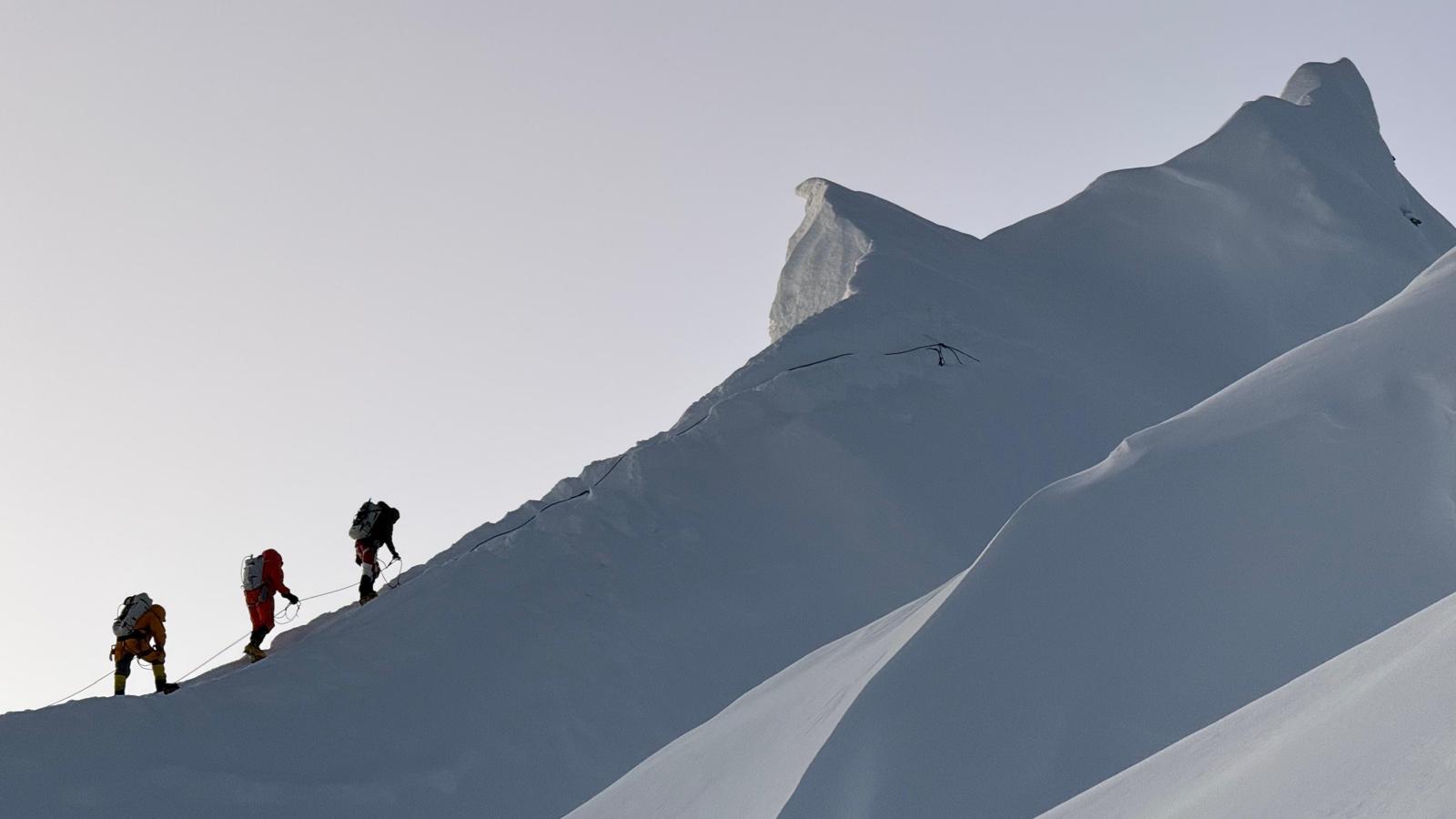
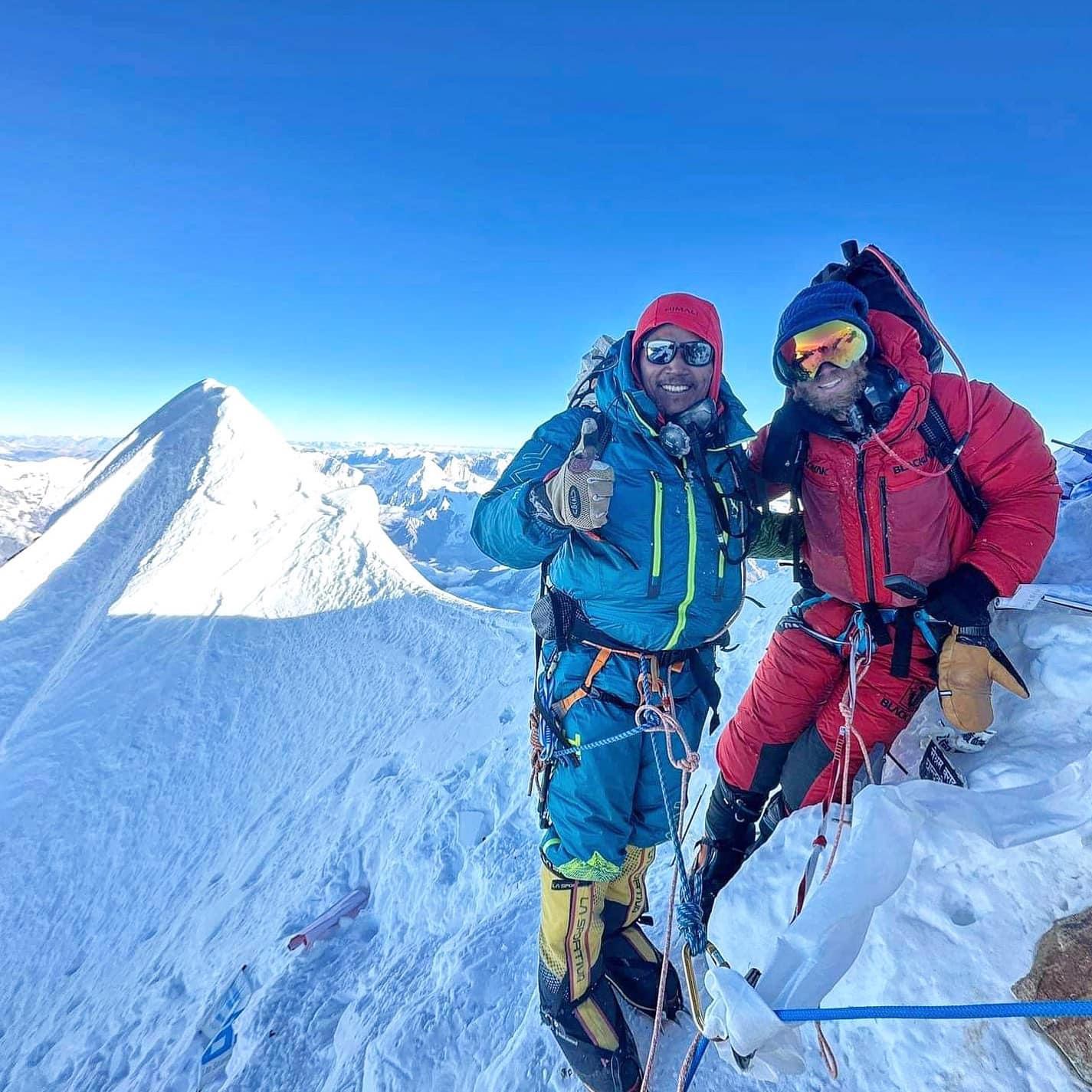
Expedition Highlights:
- Summit the world’s 8th-highest mountain at 8,163 meters / 26,781 feet
- Climb a classic Himalayan giant with panoramic views across the Annapurna Massif and Tibetan Plateau
- Fully supported expedition with fixed-line route, stocked camps, and a dedicated Sherpa and guide team
- Ideal stepping stone to Everest and other 8,000-meter peaks
- Trek through remote villages, waterfalls, and high passes off the typical tourist track in western Nepal
To learn more about all of our Himalayan climbs and treks, check out our blog post: The Himalayas: Expeditions for Every Kind of Adventurer
Nothing found.
Choosing the Right Option
At CTSS, we offer a variety of different climb options to customize your Ecuador experience to your climbing style and ability.
Nothing found.
Allowing you to customize your expedition to suit your needs is a huge priority for us.
As mountaineers ourselves, we understand that it’s the little things that can make the difference. Comfortable, well-rested climbers are successful climbers, and climbers who have objectives that are suited to their skill level are happy climbers.
Nothing found.
Manaslu Gear Rentals
While there are several gear rental shops throughout Kathmandu, we highly recommend either renting gear at home before you depart or purchasing all required gear. CTSS cannot guarantee the availability of any rental gear in Kathmandu, especially during the busy climbing season. Additionally, we cannot guarantee the quality or condition of any rental gear. Having a gear failure while on one of your climbs would be an unfortunate reason not to summit.
Nothing found.
It’s a long time away from home—can my family and friends join me?
Yes, your family and friends are more than welcome to join us on the trek into Base Camp. Our standard treks stay three nights in Base Camp before departing, but we have had people stay longer; this can be arranged by chatting with us directly. Please let us know immediately if you have people who would like to join us, so we can make arrangements for them. Space in hotels in Kathmandu and teahouses is limited during the climbing season, so we need to know the final numbers as soon as possible.
What about altitude sickness?
Altitude sickness, or AMS, is a common concern, but you don’t need to worry. We intentionally maintain a slow acclimatization schedule to allow you ample time to acclimatize naturally. Slow and steady wins the race, as such. We still encourage you to speak with your doctor about your options, as there are medications like Diamox that can help with acclimatization, with few side effects that many people find helpful. However, this is a personal choice.
All of our staff are trained to recognize and respond to signs of altitude sickness, and will manage them promptly.
A few key symptoms to look out for include headaches, loss of appetite, and shortness of breath. Remember when you are on the trek/climb, there’s no need to push stoically through in silence, tough it out, or worry about holding others back. Please speak up about how you are feeling so we can adjust your pace, schedule, and other aspects to ensure your success. There is plenty of room in the itinerary to do that. After all, some of the best climbers/trekkers in the world acclimate to altitude slowly, so don’t feel ashamed or stressed if you need to take your time.
What’s the best climb to prepare for a Manaslu climb?
Hands down, climbing is the best prep for climbing. Expeditions like the Ecuador Volcanoes trip, which offers a vast amount of affordable world-class climbing in a short timeframe, are an ideal progression step to Manaslu, along with the 3 Peaks in Nepal, or some intensive mountaineering training courses, such as the Mount Baker 5-day Alpine Academy.
Will we be taught how to use the oxygen systems?
You will be provided with top-quality, reliable oxygen tanks, masks, and regulators on your climb. We will review their usage in depth at Base Camp, so you can practice before your climb.
What’s the deal with extra oxygen?
We provide you with plenty of oxygen to maintain a comfortable flow (approximately 3L/min) throughout the climb. As standard, we provide you with three bottles. If you would like extra oxygen, we encourage you to make that decision. With the extra oxygen, you can run at a higher flow rate (4-5L/min), which will keep you warmer, allow you to move faster on summit day, and reduce your fatigue levels, all of which contribute significantly to your safety.
Additionally, if you are delayed on the mountain for any reason (for instance, due to weather or traffic) or misplace your bottle, which can happen periodically, having the extra Os may save your summit bid.
The extra oxygen option buys an additional bottle delivered to the upper mountain (we will discuss strategy on how to use this extra oxygen best.
Please note that extra oxygen is non-refundable and non-transferable
How do I charge my devices?
Given the local electricity expense, teahouses charge you to repower and recharge your electronic devices en route to base camp. This tends to become more expensive as you move up the valley, so a portable battery pack is a good idea. You will need to bring an adapter. This cost is your own expense.
At Base Camp, we will have charging stations in common areas for your devices. The Manaslu Executive Add-On will have power in their tents/domes during specific times.
Will I need to share a tent with someone?
For the majority of the expedition, you will not share a tent, as each participant will have their own at Base Camp. However, there will be times on the upper mountain when you will need to share a tent with another climber for safety and warmth reasons. Our accommodations at our hotel in Kathmandu and at the teahouses during the trek are double-occupancy.
Can I book a single room for my hotel and teahouse stays?
All hotels and teahouses are double or triple occupancy. If you want single rooms en route to base camp, we can arrange this at an additional cost. Sometimes, tea houses are packed during the climbing season and may not have room to accommodate single rooms. Please let us know as early as possible to give us the best chance of securing a private room. Again, this is adventure travel, and we ask you to roll with the punches if they are not available.
How heavy will my pack be?
Trekking packs are relatively light. You will likely be carrying 5 lbs to 10 lbs (2kg—5kg) most of the time on the trek into Base Camp. If you are bringing a large camera, computer, or other fragile items, plan to keep them in your trekking pack and add their weight to your estimate.
Generally, climbing packs on Manaslu are relatively lightweight. You will likely be carrying 15 lbs—30 lbs (7kg—12kg) most of the time while climbing. While climbing, be prepared to carry your gear for the day and some of your personal items for the mountain. Sherpas will carry all of the group gear and help with personal gear where possible.
Will I need to purchase trip insurance?
Yes, trip insurance is required for this program. It needs to cover the entire cost of the trip, including trip cancellation, trip interruption, medical expenses, repatriation, and evacuation for the entire length of the expedition.
Unforeseen hiccups both before and during the expedition can be costly. For instance, you may accidentally have a fall the week before you are due to leave, a family emergency might crop up halfway through your trip, or unsafe climbing conditions beyond anyone’s control may put a hard, premature end to the season in the name of your safety. In such circumstances, we want you and your investment to be protected. It’s essential to note that we cover your expedition expenses well in advance, so these costs are already incurred and irrecoverable, regardless of whether the project is shut down on day 1 or day 40. Of course, every effort is taken to account for every eventuality in advance, wherever possible.
Please forward a copy of your insurance policy for our records, so we can assist you in the event of an emergency or unexpected issue during the expedition. As most insurers require us to contact them immediately, we appreciate your prompt attention to this matter.
What is the food like on the climb?
At Manaslu Base Camp, CTSS has the best chefs and food, hands down. Our teams are consistently impressed by the quality of food and hygiene at Base Camp, considering our location in the world.
Our chefs are exceptional on Manaslu and well-versed in catering to a wide range of dietary requirements and allergies. Please feel free to discuss your needs with us. We do ask, however, that your dietary requests be requirements rather than preferences.
Why do I need to bring my own snacks?
We will be making a big run for group snacks and meal food for the mountain, and we will have lots of good stuff, but we want to ensure everyone has the food they need. Even people who aren’t usually picky about food can become particularly discerning about what they can digest on Manaslu due to the extreme altitude, and getting enough calories is hugely important. Gu packs, Shot Blocks, nuts, Snickers, cheese, etc, whatever it is that you know you can eat when you don’t want to eat anything is best. Getting specialty and familiar food can be challenging in Nepal, so it’s best to bring what you love from home. Also, bring a good supply of cough drops or hard candy, as you may find them helpful in the dry air. We’ll have some for the team, but people seem to go through them really quickly.
Manaslu has a reputation for being dangerous. How accurate are those claims?
Like all 8,000m mountains, Manaslu presents its own hazards and must be approached with caution, requiring trained and experienced guidance. These objective dangers include crevasses, icefall hazards, falls without a fixed rope, and avalanches. CTSS mitigates avalanche hazard by avoiding prone slopes and campsites after heavy snowfall. We take a conservative approach to these hazards, waiting for the snow to settle or the completion of avalanche cycles. We have plenty of contingency in the schedule for this purpose, and patience is not just a virtue but a lifesaver in these instances. Like any extreme altitude climb, altitude-related dangers also exist, which we will manage through a slow acclimatization program. Manaslu is actually one of the safer and more approachable of the 14x 8,000m peaks. Being in Nepal, we also have better access to helicopter rescue and evacuation services, which can transport you to definitive care in Kathmandu in a matter of hours should an emergency arise.
Didn't find an answer to your question? Don't hesitate to ask us.
Manaslu Reviews & Success Stories
“Climbing the Seven Summits provided world-class expertise and logistical support during my Manaslu expedition — solving a multitude of issues that kept me on the mountain until COVID struck. They sourced and replaced all my lost high-altitude gear and critical prescription medication, arranged helicopter flights when none were available, and personally handled every detail of my evacuation and medical care. You can pay a company for services, but you can’t pay people to do what CTSS did for me. In my book, I owe them my life.”
– Donald B

“I cannot even put into words how incredible that trip was for me – you truly run everything top notch and it shows in every single part of the trip. Your patience in teaching/coaching in a way that I didn’t feel intimidated by was amazing and so so appreciated. I am in awe of this whole experience”
– Julie M., USA
“An incredible experience from start to finish. I can’t say enough what a difference it makes to have a great guide who cares so much about the whole experience and a great time to make the journey so special. I hope this is the first of many climbs with CTSS for me.”
– Kevin A., USA
At CTSS, we believe your expedition starts long before you reach the mountain.
That’s why we provide every climber with holistic, personalized pre-expedition support, no matter the objective.
When you join a CTSS expedition, you become part of the family. You’ll be paired with a dedicated Expedition Manager and backed by our full team of experts, with guidance on everything from personalized strategy and progression planning to gear selection, training, travel logistics, and insider tips to help you get the most out of your climbing journey.
We’re here to make sure you show up prepared, confident, and ready to thrive on the mountain and beyond.
6x Reasons to Choose CTSS
Safety
Your safety and success are our top priorities, in that order. We make conservative decisions, plan redundancies, and all our guides have wilderness medical training, safety and rescue plans, and access to doctors around the clock to help keep you safe.
Value for $
We keep our overheads low to pass savings on to you. We are proud to offer the best service at the most competitive price, without compromising on safety or taking shortcuts in logistics, staffing, or infrastructure.
Holistic Approach
Our service goes far beyond the mountain. Think of us as your climbing coach; we'll be there from start to finish to prepare, debrief, and plan your progression as a mountaineer, whether your goal is a single summit or the Seven Summits.
Guides & Team
Guides can make or break your climb. We hand-pick the most qualified, tenured, tested, and personable guides and Sherpas in the world. Owner and mountaineer Mike Hamill personally oversees the logistics and management of each expedition.
Our Values
We care about you, our people, and the planet. A portion of every expedition goes to the Tiger of the Snows Fund, supporting outdoor tourism workers and their families. We follow strict Leave No Trace principles and live by our No D*ckheads Policy, because who you climb with matters.
Success
We have an unparalleled summit success rate. How? We do it in a myriad of ways; like a great chef's secret sauce, we've fine-tuned the recipe over decades. Most importantly, we believe in you & your ability to achieve your goals, and we are invested in putting you on top.
Manaslu Inquiry Form
Ready to Progress?
Consider these expeditions
Manaslu Summits for CTSS Team
Manaslu Summits for CTSS Team
Early this morning, September 29th, 2025, our CTSS Manaslu Team, led by Tomi Ceppi and Pega Sherpa, reached the true summit of Manaslu at 8,163m / 26,781ft. The team climbed in superb weather and had the mountain entirely to themselves with no crowds.
On Manaslu, the phrase true summit carries special meaning. For many years, climbers believed they had summited when they reached a fore-summit ridge. In 2012, a study of summit photos and GPS data confirmed that this ridge fell just short of the mountain’s highest point. Since then, the mountaineering community has recognized the importance of continuing along the final, exposed knife-edge ridge to stand on the very top. Today, reaching the true summit of Manaslu is considered essential for a complete and authentic climb of the world’s 8th-highest peak.
In one massive push, the team has already returned safely to Base Camp and will fly back to Kathmandu tomorrow, weather permitting.
A huge congratulations to our climbers and guides on this achievement.
- Christopher Lind – USA
- Chao Simba Chang – Canada
- CTSS Guide Guide Tomas Ceppi – Argentina
- CTSS Guide Pemba “Pega” Gyljen Sherpa – Nepal
- CTSS Guide Nuru “Papsche” Sherpa – Nepal
- CTSS Guide Dawa “Ramite” Sherpa – Nepal
Photos from Tomi Ceppi
El Padrino’s Pride: Kevin Sánchez on Climbing for More Than the Summit
El Padrino’s Pride: Kevin Sánchez on Climbing for More Than the Summit
When Kevin Sánchez stepped off the plane in Lukla, he carried more than crampons and a downsuit. In his pack was a flag emblazoned with the Puerto Rican colors, a photo of himself with his father, and a message to his family: Te quiero mucho y siempre, or, I love you very much and always.
The flag was for Héctor Julio Sánchez—El Padrino—the father Kevin knew but hadn’t grown up with, and the man who had become his greatest source of pride and motivation on his journey to Mount Everest.
That flag was more than just fabric. It was pride, legacy, and the bond of father and son stitched into one symbol. It was a tribute to El Padrino’s legacy and to Kevin’s dream of becoming the first Puerto Rican to climb the Seven Summits.
It was Kevin’s why.
Carrying the Why
It was that why that shaped Kevin’s path long before Everest. His climb on the world’s highest peak was twenty years in the making. On his 40th birthday, he stood on the summit of Kilimanjaro and set his sights on the Seven Summits. From there, he built his résumé one peak at a time: Vinson in Antarctica, Aconcagua in South America, Carstensz Pyramid in Oceania, Elbrus in Europe, and Cotopaxi as part of the CTSS Ecuador Volcanoes program. Each climb tested him in new ways, and on Aconcagua, his ‘why’ came into focus like never before.
After more than two weeks on Aconagua, Kevin and his team had been pinned down at Camp 3 for three days with nothing but relentless wind and cold to greet them. When a narrow summit window opened, their guides woke the team just before 3 a.m. to begin their summit push. Most of the climbers, drained from the long wait and bitter conditions, decided to stay put. Kevin pressed on. In his pocket was a seashell he had promised to carry to the summit for a friend’s late wife, a woman who loved the ocean and had dreamed of retiring by the sea. That small shell reminded him that he was climbing for something larger than himself. It gave him the strength to push into the wee hours of the morning and stand on the summit of South America’s tallest peak.
Moments like that shaped Kevin’s approach to climbing.
He began to see the mountains as a place to celebrate the experience, the people you meet, and the stories you weave together. The commitments he carried, a seashell on Aconcagua and El Padrino’s flag on Everest, brought that belief to life, making each climb larger than himself.
Everest and the Arena
When Kevin finally set foot in the Khumbu Valley, it was more than the scale of the mountains that struck him. It was the weight of the dream, the people beside him, and the purpose he carried. He remembers standing with Mike Hamill (CTSS Owner), looking up at the Khumbu Icefall, and feeling the reality of what was ahead: this would be the toughest thing he had ever done.
The expedition tested him in ways no other climb had. An abscessed tooth nearly ended his season, forcing an emergency evacuation and surgery in Kathmandu before he rejoined the team. Self-doubt also surfaced, the kind that many climbers feel when the stakes are high. For Kevin, it was a familiar weight, the same impostor syndrome he had battled on other big mountains.
Kevin put it clearly:
“In this journey, the most challenging thing is sometimes self-doubt and impostor syndrome. I’m here surrounded by phenomenal Sherpa and other wonderful climbers, and it’s really easy to go, ‘what the heck am I doing here?’
That lesson is one I almost have to learn on every mountain. I have to force myself to know that I’m good enough to be here.”
Each time Everest tested Kevin, he pushed back with the same lesson he had carried from Aconcagua: you need a why bigger than yourself. This time, it came from El Padrino, the flag he carried, and simply being in the arena.
“To me, Everest was the arena. It wasn’t about walking away with a summit photo. It was about daring to test myself, giving everything I had, and knowing I was willing to stand there and try.”
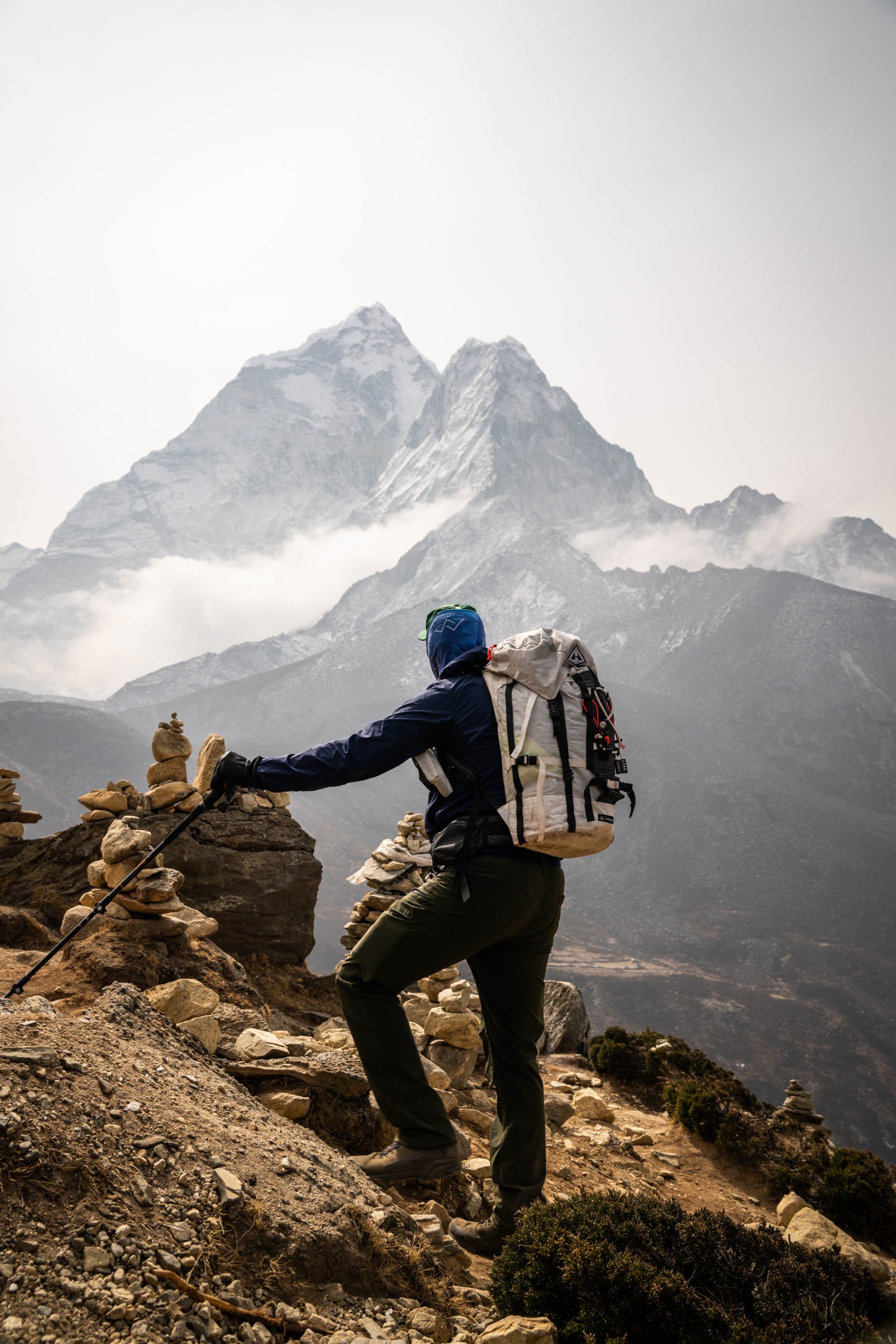
That idea of the arena became the heart of his Everest climb, and it echoed the words of Theodore Roosevelt that he had adopted as a personal mantra:
“It is not the critic who counts; not the man who points out how the strong man stumbles, or where the doer of deeds could have done them better. The credit belongs to the man who is actually in the arena, whose face is marred by dust and sweat and blood; who strives valiantly; who errs, who comes short again and again, because there is no effort without error and shortcoming; but who does actually strive to do the deeds; who knows great enthusiasms, the great devotions; who spends himself in a worthy cause; who at the best knows in the end the triumph of high achievement, and who at the worst, if he fails, at least fails while daring greatly, so that his place shall never be with those cold and timid souls who neither know victory nor defeat.” – Theodore Roosevelt
Everest proved that success was not about certainty but about daring greatly. By carrying his why, by trusting the people beside him, and by stepping fully into the arena, he honored his father and himself on the world’s highest stage.
The Flag that Summitted Everest
As Kevin worked his way through his rotations, he knew he was ready. He had trained, he had prepared, and his why was clear.
Reaching the summit would be a great achievement, but his goals reached further than the top.
When a lung infection set in after his final rotation, he sat down with Mike Hamill and Jangbu Sherpa in the CTSS kitchen tent and made the call not to proceed with his summit bid. With his goals firmly in place, the decision was clear. He was in the arena, climbing the world’s tallest peak, and his father’s flag could continue to the summit with the support of his guide, Jangbu.
For Kevin, that mattered most. Jangbu, his one-on-one private guide and partner every step of the way, carried the flag to the top of the world. Kevin speaks about that moment with deep gratitude, not only because the flag reached the summit, but because it was Jangbu who carried it there. Their partnership gave the flag’s journey its meaning. At the highest point on earth, it stood for his father’s pride, his family’s legacy, and his own twenty-year dream fulfilled through trust and teamwork.
“I didn’t know my dad for most of my life, but now he’s my best friend. I climb so he can sit in his hometown in Aibontio, Puerto Rico, and say with pride, ‘That’s my son.’
Every flag, every summit attempt, every mile is for him.”
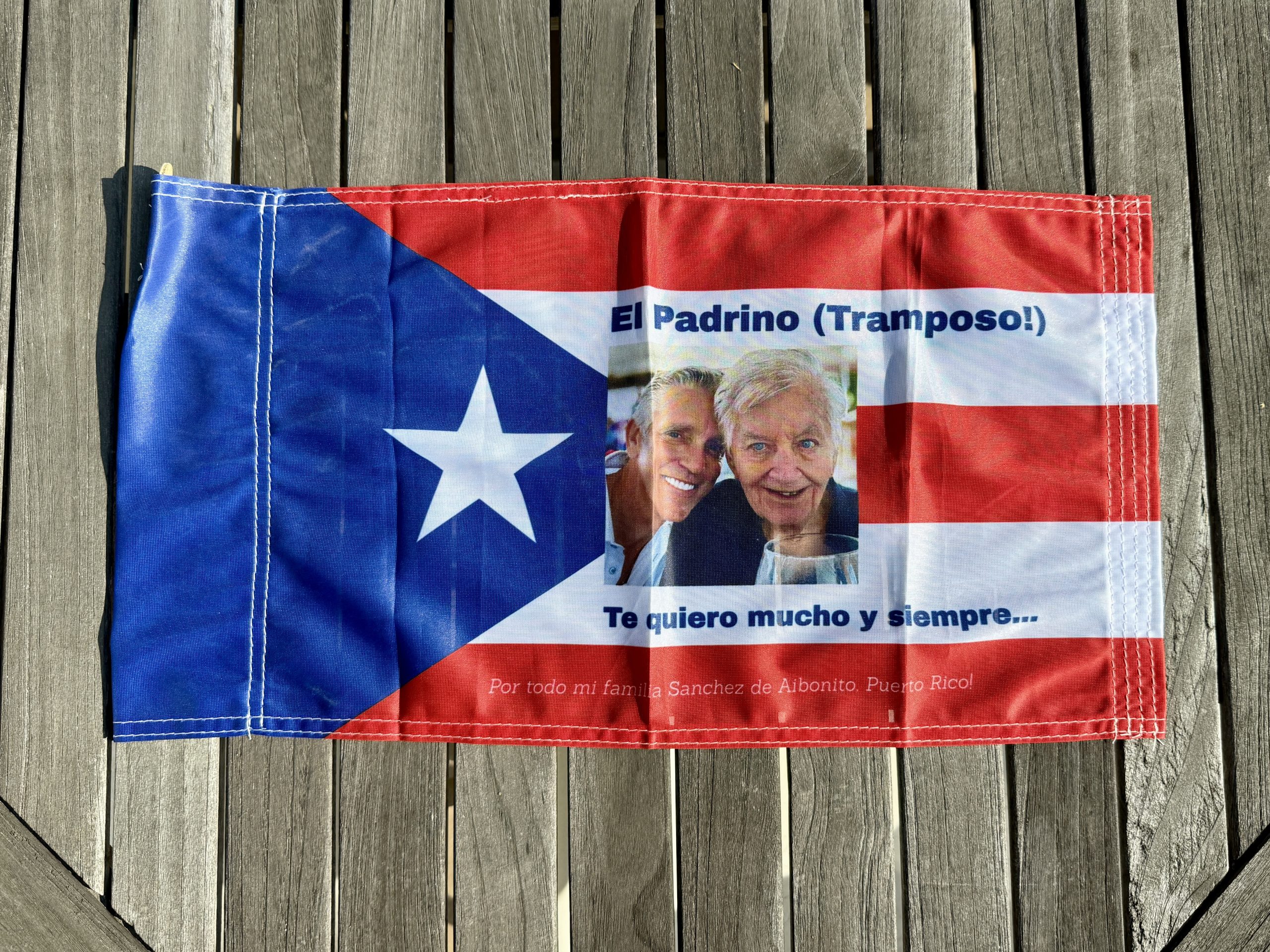
It was also proof of something Kevin had believed all along: Everest isn’t climbed alone. Behind him stood Jangbu, the Sherpa team, and the wider CTSS family, who ensured his ‘why’ reached the summit and back.
Kevin, thank you for trusting us with your dream and for sharing your journey so openly. You can hear more about Kevin’s experience on Everest in his full documentary and his reflections on climbing with CTSS in this short review, both now available on our YouTube channel.
Rotations & Puja Ceremony on Manaslu
Rotations & Puja Ceremony on Manaslu
Our Manaslu Team Climb, led by CTSS Guides Tomi Ceppi and Pega Sherpa, is off to a strong start on the 8th-highest mountain in the world.
The expedition began with a traditional puja ceremony at Base Camp on Thursday morning. Afterwards, some of the team hiked to Camp 1 while others moved to Crampon Point. Friday was spent training at Base Camp before a well-earned rest day on Sunday.
Today, the team launched into another rotation, an essential part of acclimatization that prepares them for their eventual summit bid. We will reconnect with them once this rotation is complete.
As always in the big mountains, no news is good news. When climbers are not checking in, it is because they are doing exactly what they need to: moving, eating, and sleeping to stay safe and focused. By the time they crawl into their tents, they are asleep within minutes.
We will share more updates as the team continues their journey higher.
Photos courtesy of Tomi Ceppi
Himalayan Fall in Full Swing!
Himalayan Fall in Full Swing!
Today, the entire team arrived at Manaslu Base Camp after several days of acclimatization lower in the valley in Samagoan, a small town at the foot of the mountain.
Now that the team is at Base Camp, they will spend a few days training and continuing to acclimatize before starting to make forays up the mountain. Our Base Camp support team greeted them with hot drinks and big smiles, and everyone is psyched to get the expedition started!
Stay tuned for more from Manaslu.
Photos below from CTSS Guide Tomi Ceppi.
